
10 Best Sailboats For Circumnavigation

Last Updated by
Daniel Wade
December 28, 2023
Circumnavigation means to successfully navigate around any sort of landmasses such as an island or continent. Whilst in yesteryear we would have relied on compasses, maps, stars and uncomfortable conditions, now sailboats are fitted with a vast array of equipment to help you circumnavigate anywhere you choose in a comfortable and timely manner.
It would seem reasonable to suggest that a small and lightweight boat wouldn't have the capability to circumnavigate effectively, but this is no longer the case. Due to the developments in the understanding of technology and materials over the last 20 years or so, mass produced boats are more than capable of surviving any conditions providing the crew are prepared properly. With the improvements in engineering especially, long gone are the days where slow, bulky, and claustrophobic cruisers were your only option. You can travel in style!
Ultimately, this article is going to answer the question: what are the best sailboats for circumnavigation? There are a few major things that you need to consider. Principle amongst them are the facilities on board the sailboat, the ease of use, how the deck and cabins are organized, the space available and finally the performance of the vessel overall. Take your time and think carefully about it.
Table of contents

10 Best Sailboats for Circumnavigation
1. jeanneau sun odyssey 54ds.
{{boat-info="/boats/jeanneau-sun-odyssey-54ds"}}
Starting off our list with one of the strongest contenders, the Jeanneau Sun Odyssey 54DS certainly ticks the luxury box. What's impressive is just how visually striking and spacious the 54DS is. It has big, swooping curves that give this sailboat a really distinctive shape. When this line of boat made its debut in 2003, the superstructure was considered to be one of the very best in the world and it still ranks highly today. Not only this, but the interior is designed to be luxurious and you have a surprising amount of space available in the cabin.
There's more to this boat than the looks though. The build quality on the whole is absolutely fantastic and it's quite powerful too. Many previous owners have attributed the high standard build quality, powerful performance and the excellent superstructure to the predictable and reliable performance. This is ideal for circumnavigation as you want a boat that is going to perform predictably and not throw you any major surprises!
A few other notable features on the 54DS are deep-draft keel and a standard in-mast furling mainsail. It also comes with an optional full battened main. All of these features are considered to be standard equipment for long distance cruisers.
All the high-quality features come at an expensive price. The price is certainly above average for a sailboat like this and you could make do with something a little less advanced but it's important to remember that the price is balanced out by the quality of the interior and stunning shape. Certainly some food for thought.
2. Amel Super Maramu
{{boat-info="/boats/amel-super-maramu"}}
A highly regarded design by the Frenchman Henri Amel, this sailboat was his idea of what a high-performance circumnavigating sailboat should look like. The main point of the design was to encourage as much performance out of the boat as possible in deeper waters. This means less luxury, and more functionality. Oh, and not to mention that is undeniably French, so bear that in mind.
The boat itself looks like a traditional circumnavigating sailor, but it's got a lot of modern features to offer. The ship itself is designed to be operated by a small crew of two people. Everything is about efficiency. For example, the ketch rig is designed to be simple yet highly effective. Even the sails are electrically controlled! This means that the boat is really easy to use and manageable. It's recommended that for sailors who have a couple of years' experience because a few components can be a little bit complicated to do.
One thing that you might want to consider is that the Super Maramu isn't designed to be customised. Coming in at 53 feet long, it simply wouldn't be worth the effort to make any exterior modifications. It's a similar story for the interior as well. All the interior is functional so if you are looking for a more luxurious circumnavigator, then this wouldn't be a good option.
3. Hallberg-Rassy 42 and 42F
{{boat-info="/boats/hallberg-rassy-42"}}
The Hallberg-Rassy range is known for their toughness and almost mythical build quality. The design is ruthlessly efficient, seen as there is absolutely no wasted space at all. This means that everything is focused on functionality, but this comes at the expense of it being a little bit less comfortable. The relatively simple exterior design is fitting in terms of the overall theme of the boat, simplicity and efficiency.
The layout below decks is also designed to be as efficient and user friendly as possible. This means that the boat is easy to use as well as the interior having a surprisingly fantastic finish to it. The design adds a lot of value to this boat because the ease of use and quality mean it's a fantastic place to be. Of course, this is depending on the amount of time you're going to spend circumnavigating but for a long trip, this is wonderful.
A word on the performance. It is very good too. It wouldn't be considered one of the best performing boats on this list but it's certainly more than good enough to get you where you need to go.
{{boat-info="/boats/hallberg-rassy-42f"}}
4. Hylas 54
{{boat-info="/boats/hylas-54"}}
The German Frers design can be seen again in the Hylas 54 but it's no surprise considering how good the design actually is. The Hylas 54 is designed to be a good balance between performance and efficiency.
The hull is built to an extremely high standard and the boat can also be driven very easily. In fact, its so easy to sail that achieving over 200-miles per day isn't too much of a struggle. On the deck, the design is compact and efficient which is perfect if you're an experienced sailor.
Another strong feature of the Hylas 54 is that there's a great amount of space and degree of flexibility below decks. You are free to choose how you want the layout to look as well as the quality of the finish. It even has a raised saloon version of which further adds to the flexibility and space available.
Owners are generally positive about this modal as well as the newer model, the Hylas 56. One of the biggest advantages is that it's really easy to handle. This would make a great, all round option for circumnavigating where you have the freedom to make it feel like home!
5. Beneteau 57
{{boat-info="/boats/beneteau-57"}}
This is possibly one of the best, high-end options on the market currently! The Beneteau 57 is designed to be as stylish and reliable as possible. It would be fair to categorise it as a luxury cruiser that's for sure!
The hull is designed to be as fast and as sleek as possible. Paired with the stunning hull, the cockpit is placed as central as possible to maximise the amount of space available on the deck as well as keeping everything as neat and organised below decks.
The facilities below decks don't suffer either. All the systems have a fantastic finish to them and on the whole are very impressive. There is a fairly reasonable amount of space considering that the length of the boat is over 50 feet long.
It's fair to say that if you want to enjoy your tip but do it in luxury, then the Beneteau 57 is an absolutely fantastic option. The biggest benefit is that the price is extremely competitive considering the build-quality and luxurious feel you pay for.
6. Jeanneau Sun Odyssey 49
{{boat-info="/boats/jeanneau-sun-odyssey-49"}}
A rather surprising selection on the list! The Jeanneau Sun Odyssey isn't actually designed for circumnavigation by the charter market. However, due to its size and adaptability, it works extremely well as a circumnavigator.
Featuring a large cockpit, easy to maintain sailplan and a wonderful all-round performance, this really is a boat that can do pretty much anything you ask of it. A unique feature that this boat has is that it has a dedicated sail lock in the bow of the ship which is ideal for adjusting the height of the sail.
Below decks, you'll find a boat that has a variety of options for you. The cabin is designed to be twin aft but, if you remove the bulkhead, you can change the space into a massive single cabin. Below decks also feature a large navigation station which is a cool feature. The finish of the interior is also completed to a high standard which means that it's a comfortable and relaxing place to be!
7. Lagoon 440
{{boat-info="/boats/lagoon-440"}}
This is a sailboat that has a lot of accolades. More lagoons have crossed the Atlantic. This is due to the Atlantic Rally for Cruisers. In regards to the 440 modal in particular, they have taken part in the Atlantic Rally more often than any other lagoon. So, what does all this mean? Well, the Lagoon 440 is designed to be a quality cruiser that's incredibly reliable and safe.
On the deck, there is an awful lot of room. You have a saloon, a big cockpit, a wide trampoline forward and the flybridge. This means that there's plenty of space to socialise with your other crew members or in the harbour. It also means that you have enough space for some privacy too which is fantastic depending on how much time you're going to spend on the boat.
Below decks, it's very much the same story. The interior is polished and refined as well as having an enormous amount of space. This is absolutely ideal for having a large crew and enjoying your journey!
One final thing to highlight is the performance of the boat itself. It certainly isn't the fastest, but the boat will certainly get you anywhere in a good amount of time.
8. Beneteau Oceanis 473
{{boat-info="/boats/beneteau-oceanis-473"}}
The Beneteau Oceanis 473 is an extremely popular sailboat for circumnavigation. The design was actually meant for the charter market but because of the vast size, comfortable features and the fact its relatively affordable, it became a target for cruisers looking for a bargain.
There hasn't been a lot of modifications for circumnavigation, but the boat is good at handling heavy weather and performs in a stable and predictable manner. This means that it's incredibly easy to control and perfect for a long-distance cruise.
The interior is a little bit funky too! There are a few different cabin styles but the most popular one is the three-cabin version. The rooms are big enough, but they aren't ideal to use on the sea because some of the room is wasted. However, it is excellent for harbour parties.
9. Bavaria 42
{{boat-info="/boats/bavaria-42"}}
The Bavaria 42 is the most popular mass-produced boat to cross oceans. The sailboat is designed to be a no-nonsense, affordable, and adaptable cruiser. It's also well engineered for the price.
On the deck, a long waterline and fairly good sail area provide a good amount of performance. It is very heavy though when the cruising essentials are stored on board. It's important to bear this in mind. The cockpit is also positioned to be as central as possible to open up more space.
Below decks, the interior is straightforward and functional. There are two to three sleeping cabins depending on what model you choose. The sleeping cabins are generally considered to be functional at best.
It's the standard, go to a cruiser for circumnavigation. This should be the sailboat that you compare everything to!
10. Oyster 56
{{boat-info="/boats/oyster-yachts-oyster-56"}}
I've saved possibly the best option for last. The Oyster 56 is highly regarded and considered to be a dream boat for most. The biggest advantage of the Oyster 56 is the fact that it's so flexible and simple to use but the standard of the instruments and interior is absolutely stunning.
There isn't too much else to say because everything is built to an unbelievably high standard. The deck is designed to be small enough to be crewed by two people, but it's sufficiently big enough to cross vast distances quickly and in immense comfort. The systems can be crewed by up to six people, with the ideal number being from two-four.
It's the exact situation below decks as well. A lavish interior is designed to relax you in comfort. There's a lot of space so it feels more like home rather than a boat. Everything you could want is available. The 56 is absolutely fantastic for long distance cruising.
A final thing to mention is that the Oyster 56 wins pretty much anything it competes in. You certainly are buying a quality boat!
Ultimately, the choice of the best sailboat for navigation depends on what experience you are looking for. It's fair to say that each sailboat has their own positives and negatives. You might want to relax in comfort and luxury, or you might want to have a more authentic, manual experience. The important things to consider are the space available below decks, the size of the boat and how easy it is to use and whether the boat meets your needs.
However, if I was to make a recommendation, I would suggest the Beneteau 57. Even though it is one of the most expensive sailboats on the list, it offers a wide variety of applications, excellent build quality and luxury interior makes this an amazing boat to travel in. If you want to travel in style, then this certainly is the boat for you! This is an excellent boat for larger crews, especially six and up.
If the Beneteau 57 isn't your cup of tea, then another excellent recommendation would be the Bavaria 42. This is an excellent option due to the outstanding build quality, quality engineering and functionality. It's perfect for small crew that like to have a functional and minimalist experience but really connect with the sea and the natural surroundings. Just bear in mind that it is a lot smaller than the majority of the sailboats on the list so don't expect to have the same luxurious experience you might have with some others.
Hopefully, you've found the perfect sailboat for you or if not, you've got some inspiration! The main thing is that the boat should add to the enjoyment and experience of the journey, not detract from it. No matter what boat you choose, make sure you enjoy it!
Happy sailing!
Related Articles
I've personally had thousands of questions about sailing and sailboats over the years. As I learn and experience sailing, and the community, I share the answers that work and make sense to me, here on Life of Sailing.
by this author
Best Sailboats
Most Recent

What Does "Sailing By The Lee" Mean?
October 3, 2023

The Best Sailing Schools And Programs: Reviews & Ratings
September 26, 2023
Important Legal Info
Lifeofsailing.com is a participant in the Amazon Services LLC Associates Program, an affiliate advertising program designed to provide a means for sites to earn advertising fees by advertising and linking to Amazon. This site also participates in other affiliate programs and is compensated for referring traffic and business to these companies.
Similar Posts

Affordable Sailboats You Can Build at Home
September 13, 2023

Best Small Sailboats With Standing Headroom

Best Bluewater Sailboats Under $50K
Popular posts.

Best Liveaboard Catamaran Sailboats

Can a Novice Sail Around the World?
Elizabeth O'Malley
June 15, 2022

4 Best Electric Outboard Motors

How Long Did It Take The Vikings To Sail To England?

10 Best Sailboat Brands (And Why)
December 20, 2023

7 Best Places To Liveaboard A Sailboat
Get the best sailing content.
Top Rated Posts
Lifeofsailing.com is a participant in the Amazon Services LLC Associates Program, an affiliate advertising program designed to provide a means for sites to earn advertising fees by advertising and linking to Amazon. This site also participates in other affiliate programs and is compensated for referring traffic and business to these companies. (866) 342-SAIL
© 2024 Life of Sailing Email: [email protected] Address: 11816 Inwood Rd #3024 Dallas, TX 75244 Disclaimer Privacy Policy
RetireFearless
Best Sailboats For Circumnavigation
Circumnavigation is an undeniably enjoyable experience made even more fun with the right sailboats. Read on to find the best sailboats for circumnavigation!

October 17, 2023
This article may contain affiliate links where we earn a commission from qualifying purchases.
The best sailboats for circumnavigation include the Jeanneau Sun Odyssey 54DS, Neel 51, and Island Packet 349. These boats offer passengers a thoroughly enjoyable sailing experience and the reliability, efficiency, and luxury they need from a long-haul sailing vessel.
Circumnavigation is all about navigating the world oceans on a dream sailing trip across the world. The best high-performing sailboats can help circumnavigate the world with ease. They have the most reliable and functional facilities onboard, are easy to maneuver, have been fitted with the finest equipment, and have organized, spaced out deck and cabin areas for you to have a pleasant sailing experience.
Given the sheer volume of sailboats in the market, it’s not always easy to make the right decision for your sailing adventures. It’s why I have used my sailing expertise to create this list of the most reliable and high-performing sailboats ideal for sailing across the world!
Table of Contents
8 Best Sailboats for Circumnavigating the World
Here are eight of the finest sailboats for travelling around the world:
1. Jeanneau Sun Odyssey 54DS
Jeanneau Sun Odyssey 54DS is easily one of the finest and luxurious sailboats for circumnavigation. It’s a spacious and visually stunning vessel with large, swooping curves that give it its unique shape. When this sailboat debuted in 2003, its superstructure, with its quality desk hardware, was instantly recognized as one of the finest in the world, and that remains true today as well. Plus, the interior of the boat is designed with elegance in mind.
Moreover, this sailboat has a premium-quality, powerful build, which ensures that the Odyssey 54DS delivers top-quality, smooth performance, allowing you to travel in it around the world with ease. The 54DS has many notable features, including its standard in-mast furling mainsail and deep-draft keel. The vessel also comes with an optional full battened main.
The sailboat has a fancy leather-bound wheel that works smoothly and five to ten luxurious berths. It features a harbor cachet that is more or less the same size as the cachet of a custom yacht. All of its distinctive and contemporary features are designed to offer maximum comfort and a smooth sailing experience to long-distance travelers. It’s why the price of the sailboat is certainly a bit on the higher end. But the sheer quality and prowess of the boat make up for the higher price tag.
Here are some pros of the Jeanneau Sun Odyssey 54DS:
- Sturdy construction
- Reliable sailing experience
- Luxurious interior for added comfort
- Attractive design that makes it feel like a small superyacht
Here are some cons of the Jeanneau Sun Odyssey 54DS:
- Price is a bit steep
Neel 51 is a popular choice amongst sailboat lovers due to its wide deckhouse. Its double headsail rig is conveniently accessible from the helm and is controlled by Harken 52 winches. This blue water yacht was introduced after the success of Neel 45 and Neel 65.
This sailboat also houses two center-hull staterooms with functional showers below the deck. The trim of this popular yacht is made of alpi wood, and the flooring has a hard-wearing polyester substance construction. The sailboat enjoys an overall length of 51 feet and a width of 29 feet and 18 inches. The live-aboard space equals 90sqm, and the tender garage technical room covers 18 sqm.
With that said, the headsail hinders visibility from the helm, which is a common pain point with multihulls. With that said, you can enjoy an unobstructed view from the spacious and elegant lounge space adjacent to the helm for resting and relaxing. This boat is fitted with an impressive Volvo diesel inboard engine with an HP sail drive of 75.
This sailboat can also carry up to 600L of water and fuel. It offers exceptional directional prowess and is easy to drive. With this vessel, you can sail from 6-7 knits up to 10-11 knots. It’s the ideal boat for individuals who wish to experience the joys of circumnavigation in a comfortable sailboat.
Here are some pros of the Neel 51:
- Sturdy, durable construction
- Excellent functionality and a smooth ride
- Incredible directional power
- Comfortable, spacious, and luxurious
Here are some cons of the Neel 51:
- Visibility is obstructed from the helm
3. Island Packet 349
The Island Packet 349 is widely regarded as the best midsize cruiser under 38 feet. Even in poor weather conditions, it offers its passengers a comfortable and safe long-haul sailing and cruising experience. From its harken furlers and winches to its fiberglass work, the build quality is brilliant. The vessel sails wonderfully well as well.
This vessel is designed as a two-cabin boat and features a separate shower compartment in a single head, a distinctive feature in a boat under 38 feet. It comes with a functional set of furniture and appliances, including an under-counter storage space for dry goods, refrigerators, a pull-out spice rack cabinet, various bulkhead mounted handholds and SS overhead spaces.
The saloon of the sailboat also contains an L-shaped built-in sofa/settee and a dining table that can be folded when not in use to make more space for the passengers. The Island Packet 349 has an overall length and water length of a little more than 38 feet and 31 feet, respectively. The draft is 4 feet, and the beamwidth is 12 feet and 6 inches long.
The vessel can carry up to 100 gallons of water and 55 gallons of fuel. It houses a strong engine of Yanmar diesel with 45 HP, which allows it to travel a distance of 500 miles at six knots cruising speed. The IP 349 offers a nominal hull speed of around 7.5 knots, thanks to its 32-foot waterline. This model is safe for sea travel due to its ballast-to-displacement ratio of 39% and full keel, 20,000lbs displacement.
Here are some pros of the Island Packet 349:
- Durable fiberglass and harken construction
- Excellent utilization of space despite the small size
- Strong engine and traveling speed
- Comfortable vessel for sailing across the globe
Here are some cons of the Island Packet 349:
- It’s a bit on the small side compared to other sailboats on the list
4. Amel Super Maramu
Amel Super Maramu is a loved vessel designed by the Frenchman Henri Amel. He designed it with the vision of creating a high-performance circumnavigating sailboat, and it’s safe to say he succeeded. This sailboat provides exceptional performance in deeper sea waters and is all about functionality.
The sailboat has an undeniably traditional circumnavigating sailboat-like appearance. However, it has many modern features to offer. It’s designed to be operated by a small crew of two people to ensure increased efficiency. The ketch rig has a simple yet exceptionally effective design, and the sails are electrically controlled, making the boat super manageable.
With everything said, the Super Maramu is not designed for external modifications. It’s a 53-feet-long boat with an optimally functional exterior and interior. It has an overall width of a little over 41 feet and a beamwidth of 15 feet. The sailboat has a water capacity of 264 gallons and a fuel capacity of 158 gallons.
Here are some pros of the Amel Super Maramu:
- Super-efficient design with maximum focus on functionality
- It doesn’t require a huge crew; designed for a two-person crew
- Explicitly designed for long-distance sailing
- Safe, reliable, and powerful vessel
Here are some cons of the Amel Super Maramu:
- Not as luxurious as some of the other options on the list
- Best for an experienced crew due to the complexity of some features
5. Bavaria 42
Bavaria 42 is a mass-produced, popular boat designed for cross-ocean traveling. It’s a no-nonsense, comparatively priced, adaptable sailboat that offers great features for its affordable price. The deck features a fairly spacious sail area and a long waterline to ensure good performance. However, the vessel can be super heavy when the cruising essentials are stored onboard.
The cockpit of the boat is placed centrally to free up more space for the passengers. Below the deck, the interior is as functional and practical as needed. Depending on the model you choose, you will benefit from two to three comfortable seeping cabins that are functional. It’s a standard go-to cruiser for circumnavigation.
This sailboat offers an overall length of almost 43 feet and a beamwidth of 13 feet. Depending on the model you choose, you can avail a fuel capacity of 210L to 230L and a water capacity of 360L. You will also have six to eight functional berths. The engine has an HP of 55. All in all, it’s a well-built, practical vessel that will enable you to have a relaxing cruise around the world.
The forward visibility of the sailboat is excellent at the helm, and the wide cockpit offers an unmatched sense of security even when the boat is listing. Moreover, the Bavaria 42 responds exceptionally well to the touch of an experienced sailor.
Here are some pros of the Bavaria 42:
- Responsive, functional sailboat
- Practically built to offer excellent performance
- Excellent front view
- Sense of security due to the spacious cockpit
Here are some cons of the Bavaria 42:
- Quite heavy when the cruising essentials are stored onboard
6. Beneteau 57
Beneteau 57 is easily one of the finest, most high-end sailboats for circumnavigation. It’s designed to be a stylish, high-performing, reliable vessel that you can take on a cruise around the world. It’s a luxury sailboat through and through!
The vessel’s hull has a monohull design and offers quick performance and a sleek appearance. The cockpit is also placed centrally to maximize the space on the deck and keep the vessel’s interior neatly organized under the deck. It is a powerful sloop rig with an impressively constructed cockpit.
The facilities below the deck are modern, comfortable, and wholly impressive. They are also quite spacious since the vessel’s overall length is more than 50 feet. The beamwidth of the vessel is a little over 16 feet, and the overall width is 56 feet. Moreover, its engine has an impressive 160 HP, and the fuel tanks have a capacity of 400L. The sailboat can carry 22,000 kgs of dry weight.
The synthetic glittering Glass blue countertops in the head and the brilliant stainless steel gallery appliances add a luxurious touch to the Beneteau 57. The boat has the most comprehensive list of features out of all the Beneteau boats. Considering the fantastic build-quality and luxurious experience that the Beneteau 57 offers to its passengers, its price is impressively competitive.
Here are some pros of the Beneteau 57:
- High-end, luxurious vessel with a fantastic build quality
- It offers an enjoyable cruising experience
- Well-organized and functional deck and below deck spaces
- Stainless steel appliances
- Competitive price
- Impressive dry weight capacity
Here are some cons of the Beneteau 57:
- Not as efficient as some of the other options on the list
7. Hylas 54
Hylas 54 has a German Frers design that offers the vessel a brilliant balance between efficiency and performance. The vessel’s hull is built exceptionally well, ensuring the boat to be driven seamlessly. It’s so easy to sail the boat that achieving more than 200 miles per day is achievable. On the deck, the compact and efficient design is ideal for an experienced sailor.
One of the finest features of the Hylas 54 is its spaciousness below deck, which is ideal for long-haul sailing across the world. The flexible below deck interior allows you to customize the layout however you want. It also enables you to use the finish quality you want. It also comes with a raised saloon version, which adds to its flexibility.
Like other Hylas sailboats, the passengers are typically satisfied with this 54-feet-long vessel for cross-ocean sailing. It’s because this vessel is super easy to handle and makes a great all-rounder for circumnavigation. It offers you the freedom you need to traverse the world oceans in comfort and style.
Here are some pros of the Hylas 54:
- Excellent customization options
- Efficient, high-performing vessel
- Easy to sail across the ocean, achieving maximum speed
Here are some cons of the Hylas 54:
- A relatively smaller deck compared to other vessels on the list
8. Beneteau Oceanis 46.1
The Beneteau Oceanis 46.1 is one of the most popular Beneteau models. It features a stepped hull design and incorporates some of the most loved features of the previous models. It also offers increased performance, quality, and top-tier design.
Oceanis 46.1 has a deep lead-bulb keel and a tall mast, allowing the vessel to offer 28% more sail area than the previous Beneteau models. It also has a “first Line” edition that offers comfort and speed. This sailboat offers a functional and roomy cockpit and a spacious forward owner’s cabin. It enables you to sail luxuriously and comfortably.
The overall length and width of the vessel are 46 feet and 47 feet and 43 feet. The hull length is an impressive 45 feet. The sailboat features a Yanmar power engine with 57 HP. You can also go for the Yanmar diesel with 80 HP. This sailboat comes with five varied layouts – three cabins with two heads, three cabins with three heads, four cabins with two heads, four cabins with four heads, and five cabins with three heads.
This Beneteau model enables you to sail short-handed and empowers you to control the winches from aft. It also has a beautiful design; the below deck interior is covered with brushed light oak veneer. It also houses wide sunbeds with separate head and shower compartments. The vessel has large hull portholes that allow natural light into its saloon, making your experience more comfortable.
Here are some pros of the Beneteau Oceanis 46.1:
- Beautiful and spacious below deck space
- Multiple below deck options
- Excellent performance and efficiency
- Spacious vessel with a powerful engine
Here are some cons of the Beneteau Oceanis 46.1:
- Not as roomy as some of the other sailboats on the list
Which Sailboat is the Best for Circumnavigation?
With today’s varied options, sailing worldwide is an exciting prospect. After all, there are many luxurious, well-performing sailboats that can help you have a grand time sailing across world oceans. However, only the best sailboats can offer you the most pleasing sailing experience that goes without a hitch.
The finest boats for circumnavigation offer lightweight speed and have a spacious hull and deck area that offers a grand view. They are also equipped with the finest, most functional and luxurious features for your comfort on your sojourn. That said, the best sailboat for you will also depend on the route you’re taking and your specific needs.
For instance, if someone is looking for a luxurious, competitively priced vessel for their circumnavigation trip, they will likely choose a Beneteau 57 for its luxurious interior and high-end performance. However, if you’re more inclined toward efficiently performing sailboats designed to offer optimal functionality, you will be drawn toward the Bavaria 42.
But if you need an incredible all-around performer in the world of sailboats ideal for circumnavigation, you will likely choose the Jeanneau Sun Odyssey 54DS or the Island Packet 349. These sailboats offer exceptional functionality, luxury, and comfort. They are also reliable in poor weather conditions and offer you a smooth, quick, and efficient sailing experience.
Recent Articles

What Size Sailboat Can One Person Handle?

How To Tie A Sailboat To A Mooring Ball Ring

What Is The Ideal Wind Speed When Sailing?

How To Use a Sailboat Winch

Things You Need To Liveaboard a Sailboat

Types of Sailboat Keels
I'm Michael Moris. I've been sailing my whole life, and it has taken me to places I never imagined. From the Caribbean to Europe, from New Zealand to South America - there's nowhere that hasn't felt like home when you're on a boat!

Trending Articles

How Far Is Havana From Miami By Boat?

Yachting Vs Sailing

Who Is Sailing Doodles?
Subscribe To Our Newsletter
Thank you! You're signed up for our free newsletter!
Oops! Something went wrong while submitting the form
About Our Team
We are a publishing team of licensed Nursing Home Administrators, Nurses, Assisted Living Directors, Health Professionals, Gardeners, and individuals with vast experience with senior living and activities.

©2024 Retire Fearless. All rights reserved.
We can be reached via email at [email protected]
Retirefearless.com is a participant in the Amazon Services LLC Associates Program, an affiliate advertising program designed to provide a means for sites to earn advertising fees by advertising and linking to Amazon. This site also participates in other affiliate programs such as CJ, ClickBank and more, and is compensated for referring traffic and business to these companies.
Facebook Pinterest
- Best boats for circumnavigation: Navigating the globe with confidence
Embarking on a circumnavigation voyage is a dream shared by many sailors and adventurers. The idea of circumnavigating the globe, crossing vast oceans, and exploring diverse cultures is both thrilling and awe-inspiring. However, to turn this dream into a reality, choosing the right boat is of utmost importance.
The importance of choosing the right boat
Your boat is not just a means of transportation; it's your home, your shelter, and your safety net while sailing across the world's oceans. Therefore, selecting a boat that can withstand the challenges of long-distance sailing, provide comfort during extended journeys, and ensure your safety in varying conditions is crucial.
Key features to consider
Size and stability.
One of the fundamental aspects to consider when choosing a circumnavigation boat is its size and stability. Larger boats tend to offer more space and stability in rough seas, while smaller vessels can be more maneuverable in tight spots.
Safety features
Safety is paramount when sailing across vast oceans. Learn about the essential safety features your circumnavigation boat should have, including advanced navigation systems, emergency equipment, and sturdy construction.
Read our top notch articles on topics such as sailing, sailing tips and destinations in our Magazine .
Check out our latest sailing content:
Sailboat at sea.
Top picks for circumnavigation
Now, let's dive into the top boat choices for circumnavigation. We'll provide detailed insights into each vessel, highlighting their unique features and advantages.
- Hallberg-Rassy 42 : Known for its durability and comfort, this Swedish yacht is a popular choice among circumnavigators.
- Amel Super Maramu : Renowned for its self-sufficiency and ease of handling, the Super Maramu is a favorite for long-distance cruising.
- Oyster 475 : Oyster yachts are synonymous with quality, and the 475 is no exception, offering excellent performance and seaworthiness.
- Outbound 46 : This American-built sailboat is designed for bluewater cruising, making it suitable for circumnavigation.
- Hylas 46 : Hylas yachts are celebrated for their strength and beauty, making them a reliable choice for sailing around the world.
- Island Packet 420 : Known for their robust construction, Island Packets are well-suited for offshore adventures and global voyages.
- Contest 42CS : Dutch craftsmanship and a solid build make the Contest 42CS a top contender for circumnavigation.
- Valiant 42 : Designed specifically for offshore cruising, the Valiant 42 is favored by many experienced sailors.
- Mason 44 : With classic lines and a reputation for seaworthiness, the Mason 44 is a timeless choice for circumnavigation.
- Nordhavn 40 : For those considering a powerboat, the Nordhavn 40 offers long-range capabilities and comfort for extended journeys.
So what are you waiting for? Take a look at our range of charter boats and head to some of our favourite sailing destinations.
I am ready to help you with booking a boat for your dream vacation. Contact me.

Denisa Nguyenová

REQUEST MORE INFO
" * " indicates required fields
Circumnavigations

CIRCUMNAVIGATIONS
| BOAT | NUMBER | COMMENTS |
|---|---|---|
| N4021 "Nordhavn" | 1 | A Nordhavn 40 holds the world record for the fastest circumnavigation by a production power boat of any size. |
| N4318 "Kosmos" | 1 | |
| N46 "Kanaloa" | 3 | |
| N46 "Salvation II" | 1 | Salvation II is the first production power boat ever to circumnavigate the globe. |
| N4651 "Othmani" | 1 | Ghanim al-Othman, on board Othmani was the first Arab to circumnavigate. Othmani completed the circumnavigation with paravanes only. |
| N4674 "Egret" | 1 | |
| N5263 "Dirona" | near | |
| N6215 "Karma" | near | |
| N6218 "Rover" | 1 | |
| N7609 "Reliance" | 1 | |
| BOAT | NUMBER | COMMENTS |
Displaying 1 – 10 of 10
- Nordhavn Fleet
- New Deliveries
- Available For Viewing
- Retired Models
- Fundamentals
- On the Drawing Board
- Nordhavn Live
- E-Newsletter
- Award Winners
- All Listings
- European Listings
- Australasia Listings
- Testimonials
- Oceans Apart
- The Nordhavn Life
- Nordhavn Film Festival
- Distance Pennant Program
- Discussion Groups
- Social Networks
- Merchandise

My Cruiser Life Magazine
Sail Around the World Route – Best Options Explained
Before you ponder your route to sail around the world, think about why you’re even thinking about such an undertaking.
There are countless sailing routes you can take to circumnavigate the globe, but each one is for a different sort of sailor. The two most common routes are the mid-latitudes “Milk Run” and the high-latitudes journey through the Southern Ocean or Northwest Passage.
Here’s a look at some of these very different trips and the types of sailors and vessels that accomplish each one every year.
Table of Contents
Basic planning factors – winds, currents, and storms, the classic sail around the world route – the milk run, circumnavigating in the southern ocean, an alternate sail around the world route the northwest passage, which sailing routes would you pick for your circumnavigation, sailing routes around the world faqs.
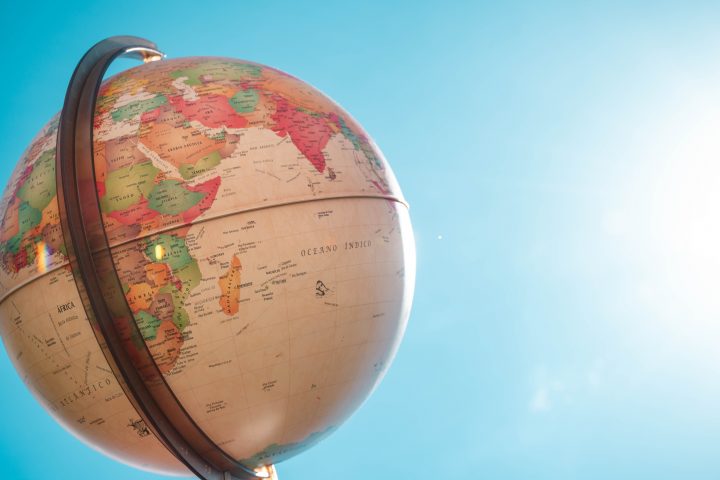
The Basics of Sailing Routes Around the World
First, some lingo. Sailors refer to a sail around the world route as a “circumnavigation.”
Taking a boat around the world requires some gumption. So why do it at all? For some, it is the goal of having done it. For others, it’s a fun way to combine their passions of sailing and travel. Some folks compete in races to see who can do it fastest. And some folks think it would be a good lark and a neat way to see the world.
Whatever reason draws you to the idea of completing a circumnavigation, you aren’t alone. Every year there are rallies or races that you can join to meet up with like-minded people. And for as many people who compete in rallies, there are likely an equal number of people doing it on their own.
No matter how you cut it, a circumnavigation is made up of numerous legs. So if traveling and seeing the sights is your goal, then it only makes sense to take your time and visit as many places as you can along the way.
Folks with a limited time frame will inevitably miss something or rush through someplace they want to see.
For sightseers, the goal of a circumnavigation might be secondary to seeing the places they want to see. In other words, someone with their heart set on circumnavigating might set a schedule of two years to get it done, while another sailor who wants to complete loops in the Atlantic and Pacific might have a lot more time to visit more countries and ports of call.
Every sailor and every boat comes into this adventure with different goals. Therefore, it’s important to think about your motivations and the sort of circumnavigation that you’d like to have. What’s the most important part to you, and how much money and time can you dedicate to the endeavor?
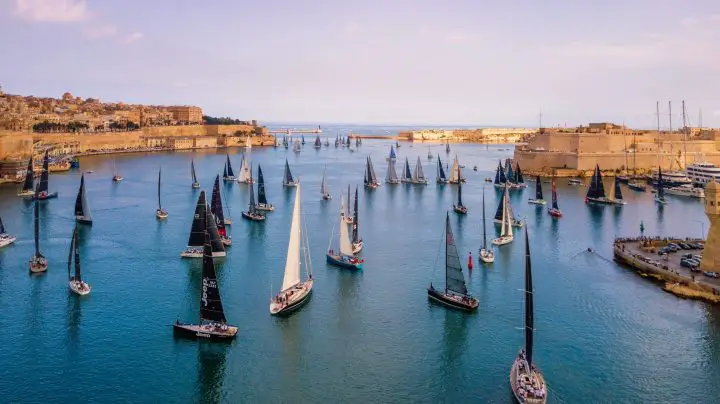
Most pleasure boaters contemplating a circumnavigation are interested in the safest route to sail around the world. Part of the safety and enjoyment of the crew comes from planning the trip to follow the prevailing wind patterns around the globe.
When sitting on land, you might think of the wind as unpredictable and variable depending on the day and weather conditions. And while that is true all over the world, at sea prevailing weather patterns tend to be more steady.
That means by understanding the causes and patterns in the winds, you can use them to your advantage on a circumnavigation.
For example, let’s look at the North Atlantic circuit. If a yacht wants to depart Europe for North America, its best bet is to head south first and follow the area between 10 and 30 degrees north latitude westbound. Why? Because this is the area where the winds flow from the east almost constantly. Since ships used these winds to get to the Caribbean in the old days, they are still known as the Trade Winds.
What if you want to go the other way, back to Europe? In that case, your best bet is to head north and make your easterly course between 40 and 60 degrees north latitudes. There, the prevailing winds are westerly and will push you back to Europe.
While sailboats can sail into the wind, doing so is called “beating” for a reason. It’s rough on the boat and crew; it’s tiring and unpleasant. You’ll have to do it occasionally, but a successful and comfortable passage is usually the result of planning so you don’t have to sail to weather.
Similarly, you can use the world’s ocean currents to your advantage. If the Gulf Stream can give you a knot or two of an extra push toward Europe, you should take it! It makes a big difference when your normal speed is six knots. Trying to fight against it for any length of time could double your trip planning and make for a very nasty ride.
And then there is the risk of storms at sea. With good trip and weather planning, a boat can circumnavigate without ever experiencing a bad storm at sea.
That requires conservative planning to avoid areas and times of the year when the weather is bad. To do this means you must plan to be in the right places at the right times. Pilot charts are published for every ocean sector on Earth, showing the prevailing winds for any given month and the probability of encountering a severe storm in the area.
Using pilot charts and the historical prevalence of hurricanes or cyclones, sailors can plan to transit these areas only during quiet times. In other words, no one wants to be in the middle of the North Atlantic during peak hurricane season or during winter gales, but being in the middle of the North Atlantic in May is pretty optimal.
Likewise, you don’t want to be in the middle of the South Pacific during February when it is peak cyclone season, but June or July is good.
The classic route for circumnavigating is based on the path of least resistance, making it the safest route to sail around the world. These routes utilize the prevailing winds to make as many downwind, fair-weather passages as possible.
The goal of this route is not speed but comfort and safety. This is the route you take your family on. This is the route that around the world rallies, like the World ARC Rally , use for every trip.
Starting from the Caribbean, this route travels westbound and keeps close to the equator. Of course, you can start anywhere, but many yachts cross their wakes (begin and end their voyage) somewhere in the Lesser Antilles.
After crossing the Caribbean Sea, transit is arranged through the Panama Canal. Canal transits are expensive and time-consuming, and they usually involve a broker to arrange all the paperwork and scheduling.
Before the canal was constructed, the only way to make the journey was to travel south in the Atlantic and pass Cape Horn. There, you can follow Drakes Passage through Argentina’s islands and Patagonia’s wild lands. Many expedition yachts still choose this route to see this remote and beautiful part of the world.
After the Panama Canal, most yachts take familiar sailing routes across the Pacific . The first stop is the Galapagos Islands. This takes you mostly south along the coast of Central America and across the equator into the Southern Hemisphere.
From the Galapagos, the single longest passage lies ahead–roughly 3,200 nautical miles to the Marquesas Islands of French Polynesia. This trip takes most sailboats about 14 days. An alternate route takes you farther south. It doesn’t shorten the trip but allows you to visit Rapa Nui (Easter Island) and Pitcairn Islands.
Once in French Polynesia, you can island hop your way through the South Pacific island nations, but with a weary eye on the weather. The point is to avoid the area during cyclone season, roughly the summer months (December through April or so).
At this point, many yachts find a hurricane hole where they can relax during storm season. Usually, it is time to haul out and complete some maintenance after so many sea miles. Some make it south and out of the cyclone belt to New Zealand or Australia. Others opt to stay in the islands but find a well-sheltered marina or boatyard where they can haul out.
Once cyclone season is winding down, the next big passage awaits. After passing through the Torres Straits, stops in Northwestern Australia and Indonesia welcome you to the Indian Ocean. There are only a few isolated stops after that. Many yachts make one long passage out of it, although many enjoy a few stops, like Cocos Keeling, Maldives, Diego Garcia, or Seychelles.
This is where the route branches in two directions. Traditionally, boats would transit on a northwest course and into the Gulf of Aden. From there, you follow the Red Sea to the Suez Canal and the Mediterranean Sea. The Mediterranean is, of course, one of the most storied cruising grounds on the planet. You can cruise from Turkey and Greece to Italy, France, and Spain, with countless famous ports of call along the way.
Unfortunately, the route to get there, through the Gulf of Aden and around the Horn of Africa, is home to bands of pirates who have been known to prey on leisure yachts and commercial vessels alike. For this reason, this route has fallen out of favor in recent years.
Instead, boats head to South Africa. The country makes a good landfall point from which you can travel home or take land excursions to see the rest of Africa. Popular stops on the way are the islands of Reunion and Mauritius. Some folks also like to visit Madagascar.
After rounding the Cape of Good Hope, yachts are back in the Atlantic and can head northwest toward the Caribbean. You can make a few stops along the way, mostly isolated island nations like St. Helena and Ascension Islands. After that, it’s a straight shot back across the equator and to the Windward Islands of the Caribbean.
When coming from the Mediterranean, boats heat westbound through the Straights of Gibraltar. The next stop is the Canary Islands. How long does it take to sail across the Atlantic? It’s a roughly 17-day passage downwind to the Windward Islands.
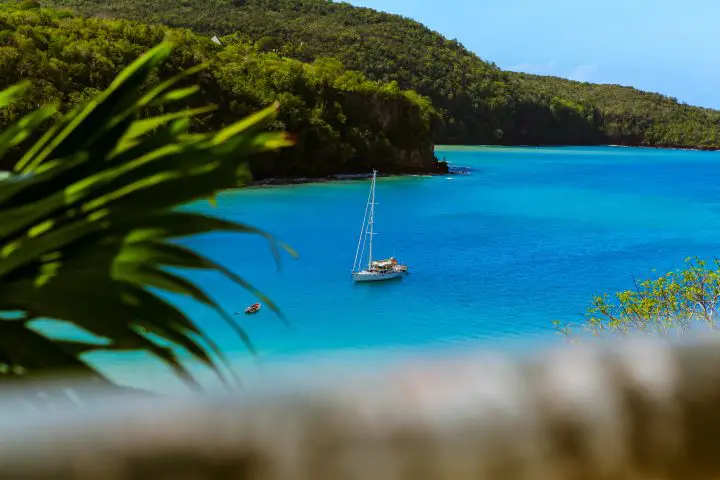
Most people take two full years or longer to complete a circumnavigation as described above, but even that only allows a little time to see the sights. So a more realistic number would be four or five years.
This route isn’t for those looking to get it done in the shortest amount of time. Instead, the Southern Ocean Route is the favored path for those looking to trade a bit of safety for speed. This route, due to the prevailing winds along the route, is completed from west to east.
Races like the Clipper Around the World , Vendee Globe , and the Golden Globe Around the World Race use this path. It utilizes the open expanses of the Southern Ocean. Once you get into these high latitudes, there are no real landmasses in your way, and you can steer a course all the way around the world in record time.
Of course, the Southern Ocean is not for the faint of heart. High-latitude sailing involves biting cold weather and dangerous gales. You’ll be rounding Cape Horn through Drakes Passage, one of the dicest stretches of water on the planet.
It’s a punishing stretch of ocean, and boats are often beaten and bruised. Dismastings and equipment failures are common. In other words, a sailor who chooses this route must be ready for anything, capable of handling whatever the sea throws at them, and sailing an extremely well-founded bluewater vessel.
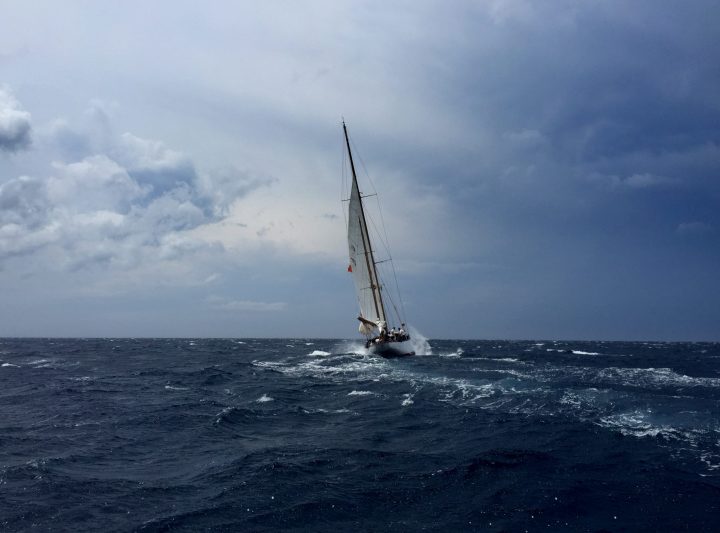
In recent years it has been in vogue to attempt a transit of the Northwest Passage, thereby making it possible to circumnavigate the high latitudes of the Northern Hemisphere. Obviously, this is a summertime endeavor only, and even then, only during years when the ice pack has completely melted. This is happening more and more, so the route is gaining popularity.
The leg that makes this possible starts from the United Kingdom going west across the Atlantic to Greenland through the Labrador Sea. The Northwest Passage itself then bisects Canada’s northern territories. Finally, you end up on the northern coast of Alaska. Then, keeping the mainland of North America to port, you continue south into the Pacific Ocean.
From the Aleutian Islands, the most favorable course is to transit to the west coast of North America. After that, you can make your way south along the famous Inside Passage, a network of fjords in British Columbia that can link you to Puget Sound and the Seattle metro area.
Once in the US, your next steps are southbound transits to Baja, Mexico, or jumps like sailing to Hawaii from California . You can then join the normal routes across the South Pacific islands to Australia or Southeast Asia.
Both the Southern Ocean and the Northwest Passage routes are high-latitude routes that carry more risk than the Milk Run. High-latitude sailing involves dealing with more frequent severe weather systems, stronger winds, and greater variability in the weather in general. They’re also farther from services and more remote, so self-sufficiency is even more vital.
While you can do the Milk Run in nearly any of best bluewater cruising sailboats , these high-latitudes routes are more comfortable in a robust expedition-level vessel. These are the perfect places for that aluminum sailboat you’ve been dreaming about.
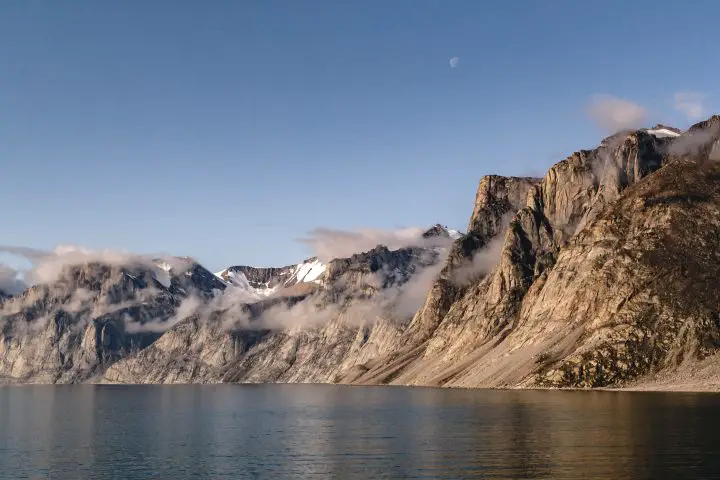
There is much to learn and think about if you want to circumnavigate. If you’re dreaming of sailing the world, consider starting your research by picking up a book or two written by someone who has done it. Here are three stories of circumnavigations, but there are countless others and blogs galore to be found on the internet.

- Add custom text here
Prices pulled from the Amazon Product Advertising API on:
Product prices and availability are accurate as of the date/time indicated and are subject to change. Any price and availability information displayed on [relevant Amazon Site(s), as applicable] at the time of purchase will apply to the purchase of this product.
Jimmy Cornell is the master of how to sail around the world. His “World Cruising” series of guides includes everything you’d ever need to know, from weather systems and route planning to legal formalities. This book, 200,000 Miles , combines some of those technicalities with a biographical story of his journey.

Sailing Around the World Alone is Joshua Slocum’s story of his journey. It’s not a modern tale–Slocum set out in the late 1890s from Nova Scotia. But his adventure is the OG tale of sailing around the world and is worth a read.

- Used Book in Good Condition
Lin and Larry Pardey circumnavigated several times (both eastbound and westbound), but if you totaled up the miles they sailed, it would be more like seven times. The difference, of course, is enjoying every port and stop along the way.
While they never wrote a book specifically about sailing around the world, their cruising tales live on in the various tales and how-to guides they produced over the years.
Capable Cruiser discusses techniques that will get you there, interwoven by the Pardey’s inimitable charm and wit. For more travel inspiration, check out their original series of books: Cruising in Seraffyn , Seraffyn’s European Adventure, Seraffyn’s Mediterranean Adventure, and Seraffyn’s Oriental Adventure.
What route do you take to sail around the world?
There are several ways to circumnavigate, but the most common is the “Milk Run.” This route goes from the Caribbean through the Panama Canal. From there, it heads south to the Galapagos Islands and into the South Pacific. After Tahiti, yachts head to Australia, across the Indian Ocean, and through the Suez Canal into the Mediterranean Sea. Finally, leaving the Med, boats cross the Atlantic to the Caribbean to close the circle, or “cross their wake,” as they say.
How long does it take to sail around the world?
The WorldARC around the world sailing rally usually lasts 18 months, but you can do it quicker by selecting fewer stops or taking faster routes. For most sailors, however, the length of the trip around the world really depends on how much they stop along the way and for how long. If the purpose of the trip is to travel and see the world, it makes little sense to rush and do it in the shortest possible time. Many circumnavigations take five or more years.
How much does it cost per month to sail around the world?
Sailing has been described as the most expensive way to get somewhere for free. The cost to sail around the world is extremely variable–it is impossible to pin down any price. On the one hand, the type of boat makes a difference. The larger the boat, the larger the costs. The lifestyle you choose while sailing matters, too–lavish resort marinas cost more than anchoring away from town. Hiring professionals to do boat maintenance costs more than doing it all yourself. There are ways to do it lavishly and ways to be cheap about it. Comfortable cruising is somewhere in the middle, but where exactly that depends entirely on you.
How big of a sailboat do you need to sail around the world?
Many solo sailors and couples have circumnavigated in boats less than 30 feet long. Lin and Larry Pardy wrote many novels as they circled the globe on 22-foot-long Seraffyn , a Lyle Hess-designed cutter. The size of the boat has everything to do with your cruising style and budget. So long as the vessel is well-founded and designed to take the rigors of bluewater passages, size matters less than many people think.
Matt has been boating around Florida for over 25 years in everything from small powerboats to large cruising catamarans. He currently lives aboard a 38-foot Cabo Rico sailboat with his wife Lucy and adventure dog Chelsea. Together, they cruise between winters in The Bahamas and summers in the Chesapeake Bay.
Leave a comment
Your email address will not be published. Required fields are marked *
Save my name, email, and website in this browser for the next time I comment.

SailingEurope Blog - Sailing, Yacht Charter and Beyond
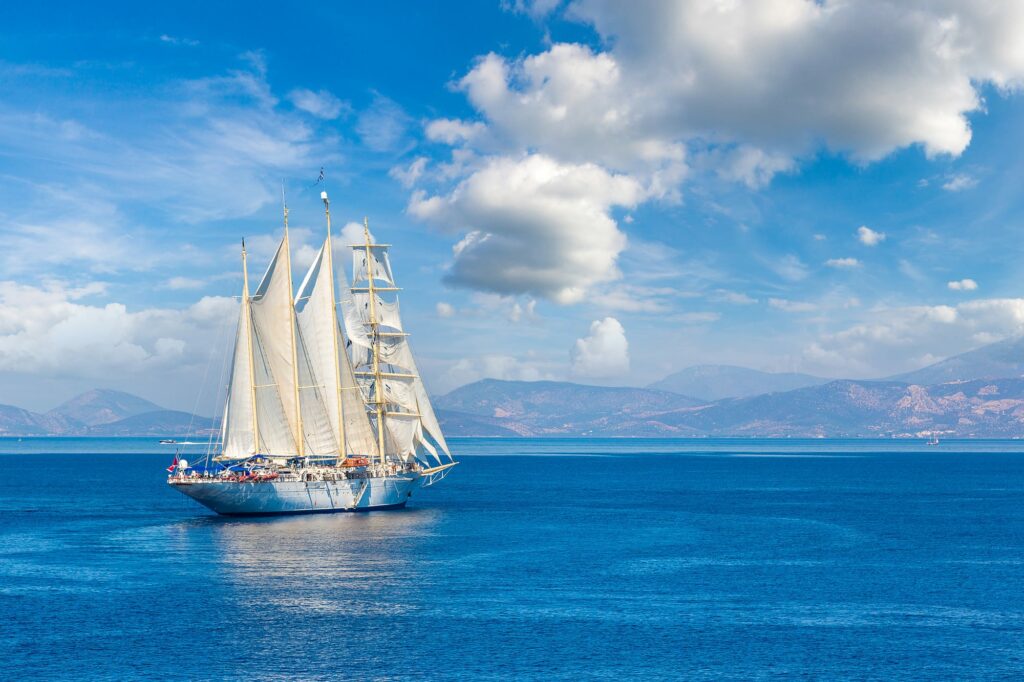
Circumnavigation or Sailing Around the World
Sailing around the world. It has a nice ring to it, doesn’t it? Circumnavigation has always been sort of an obsession of humanity. Since people made the first boat and started sailing and travelling with boats, there was this question: “How far am I able to sail with a boat?” In the beginnings, people only travelled short distances, usually within the same continent because they didn’t know for the existence of other continents. Those travels were predominantly by merchants who were selling their goods. And spontaneously with trade travels, the other kind of travelling by boat came to existence – the exploration kind. But first, let’s tackle the definition of circumnavigation.
What Does Circumnavigation Mean?
Circumnavigation is a complete navigation around an island, continent, a planet or, in modern days, astronomical body like Earth or the Moon.
In this blog post we will focus on sailing around the world. And not the astronomical kind, but the ‘simple’ water-travelling kind. The reason is because that kind of circumnavigation includes sailing. And by sailing, we mean whole lotta sailing.
Exploration of Ancient World
Exploring in the anceint world was quite a bit different than it is today. Nowadays you can simply buy cheap plane tickets and find yourself on other side of the planet in no-time. Famous explorers of the ancient world are Herodotus and Abu Al Hasan Al Masudi . They were both writers, historians and, you’re guessing, explorers. They gave us some of the best descriptions of the ancient world. And they’re quite extraordinary. Let’s get to know the first travelers by boat .

Herodotus is one of the main sources of information when it comes to the ancient world. His writings are exceptional even for today’s standards. He is best known for his description of events because he wasn’t bothered so much with the actual facts as much as he wanted to transfer the emotion or atmosphere of the certain even to the reader.
That’s why his numbers are mostly off. Quite often off by far. He is famous for his description of Greco-Persian Wars and as the father of history and other social sciences such as ethnography. He is also the first who has described the process of mummification.
Other than by his historiographic work, Herodotus is also known for his, in that time, immense travelling . He was the greatest explorer of his time and he traveled throughout all known world. He has been to Africa and to the Middle East, which is very far away from his home town of Halicarnassus considering it was 400 BC. In his travel he has encountered a lot of different people and cultures which he had the privilege of describing first.
In many ways Herodotus travels inspired all the explorers that came after him. And one of such was Abu Al Hasan Al Masudi .
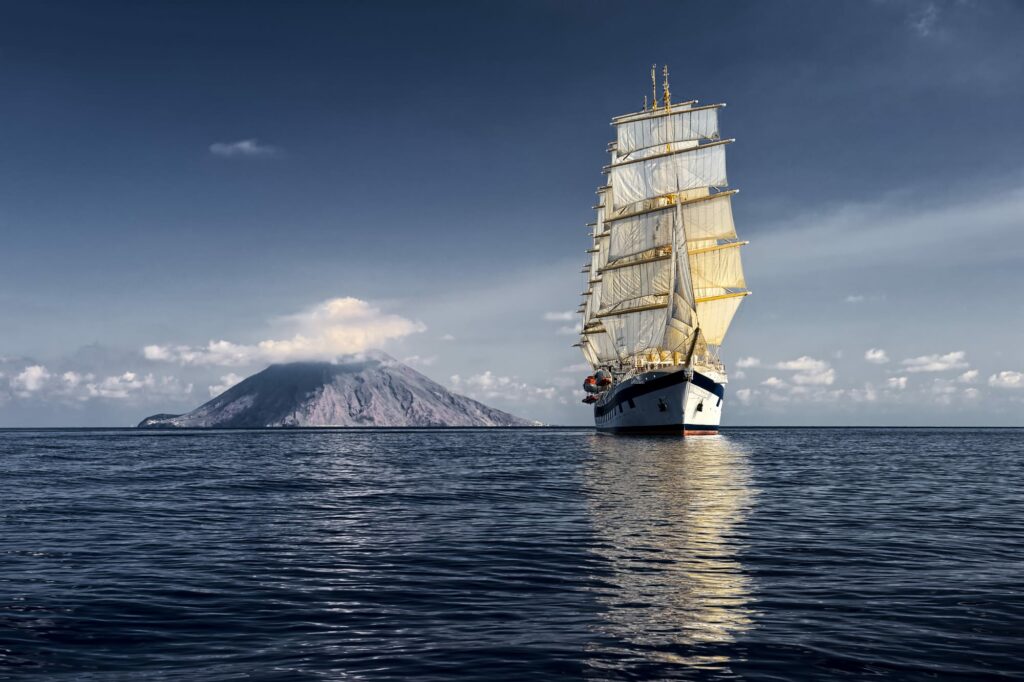
Abu Al Hasan Al Masudi
Abu Al Hasan Al Masudi comes more than a thousand years after Herodotus, but his travels quickly became as well-known throughout all the known world. Much like Herodotus, he was also a historian, but also a geographer. He spent most of his life travelling. Masudi has been to East Africa, the Middle East, Persia, Russia, India and China which is extraordinary considering that he was alive at the end of first century .
He is often called ‘the Herodotus of the Arabs’ and all his travels are combined in the book ‘The Meadows of Gold and Mines of Gems’ .
These two, along with other great explorers of the ancient times set path for all the great explorers that most people know today. We can say that they, in many ways, make up what will soon be known as circumnavigation.
The Beginnings of Circumnavigation
After the Antics, things started to get better for circumnavigation. The world has started to get bigger as other parts of the world were discovered. America was discovered by Christopher Columbus in 1492 . Abel Tasman discovered Australia in 1642. Between people discovering those two nowadays continents, the first circumnavigation took place. But before we go ahead to the first successful circumnavigation , let’s take a look at some of the most famous explorers and how has their discoveries made the first circumnavigation possible.
Famous Explorers
Christopher Columbus (1451 – 1506)
Christopher Columbus was an Italian explorer. Columbus made four ground-breaking voyages to the Americas. The first journey was in 1492 and Columbus got to the Bahamas believing he came to India. Sailing in uncharted seas, Columbus greatly extended the knowledge of crossing the Atlantic and paved the way for the Spanish conquest of the two Americas.
Christopher Columbus was born in the Republic of Genoa , in what is today Northwestern Italy. Columbus learned to sail from an early age and later worked as a business agent, travelling around Europe to England, Ireland and later along the West coast of Africa. Christopher Columbus was a believer in the spherical nature of the world (some Christians still held the view that the world was flat). An ambitious man, Christopher Columbus hoped to find a Western trade route to the lucrative spice markets in Asia. Rather than sailing East, he hoped that sailing West would lead to countries like Japan and China.
Vasco de Gama (1469 – 1524)
Vasco da Gama was a Portuguese explorer who was the first European to reach India by sea. Da Gama made a direct voyage to India – travelling around the Cape of Good Hope in South Africa – arriving in Calicut in 1498.
Vasco da Gama was a Portuguese explorer who became the first European to successfully navigate a naval route from Europe to India. The Portuguese had a strong naval tradition and had already sent ships down the west coast of Africa in search of gold and slaves . Portuguese ships had got as far south as the southern tip of Africa, but loss rates were high and they only received limited riches from the west coast of Africa. In 1481, King John II of Portugal ascended to the throne; he was a keen supporter of encouraging better trade routes. He put Vasco de Gama in charge of finding one.
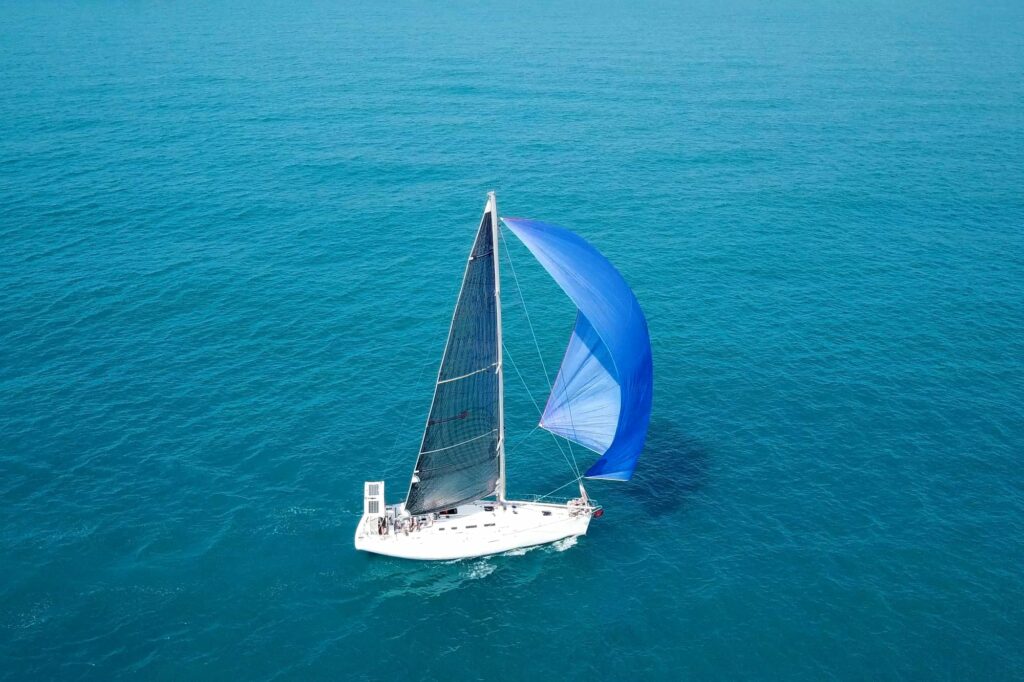
Marco Polo (1254 – 1324)
Polo was a Venetian traveler and explorer who made ground-breaking journeys to Asia and China. His journeys and writings helped to open up the Far East to Europe and inspired Christopher Columbus and many other explorers.
Marco Polo was amongst the first Europeans to travel the famous Silk Road trade route, stretching from the Middle East to China. Significantly, Polo is reputed to have been born in Korčula himself, although evidence to support this thesis is at best sketchy. If Marco’s place of birth is somewhat ambiguous, it is certain that he was taken prisoner by the Genoese in the naval battle of Korčula, between the Venetian and Genovese states .
Having been captured and taken to a Genoese prison, he wrote his book ‘Million’ (see below) about his travels to China. Yet, it was Marco’s cellmate, Rusticello who would later produce a book ‘The Travels of Marco Polo’ . This made Marco’s travelling exploits famous throughout the world. The work caused a sensation in western society when published, since many Europeans were for the first time vividly immersed into the exotic and hitherto unknown culture of the Far East.
Polo noted down the use of coal and ceramics in China, centuries before they became widespread in Europe. However, many of Polo’s stories seemed so far-fetched that people thought that he had made them up. Some of his claims have never been verified . Nevertheless, many merchants would follow Polo’s routes, and many more travelers and explorers, including one Christopher Colombus, were to be inspired by Polo’s achievement.
James Cook (1728 – 1779)
Cook was a British explorer who made groundbreaking voyages to the Pacific Ocean. He made the first European contact with Eastern coast of Australia and he chartered the islands of the Pacific from New Zealand to Hawaii .
Born in the tiny village of Great Ayton, Yorkshire in 1755, Captain James Cook went on to become one of the most famous sea explorers of his age. He helped to find new lands and redraw the maps of the time. After working for a year as a grocer, James Cook gained an apprentice for a Quaker-owned shipping company . It was here that James Cook began learning the arts of navigation and seamanship. During the late eighteenth century, there was great interest in surveying unknown lands.
After serving in the seven-year war with France, he was commissioned in 1768 by the Royal Society on a scientific expedition to the Pacific. This was the start of his travels around the oceans of the world. He helped to chart the coasts of New Zealand and Australia . Cook visited many unknown islands – witnessing human sacrifices in Tahiti amongst other things. He was an explorer of tremendous determination and faith. He helped spread the boundaries of known sea travel and raised standards for the welfare of his men serving under him.
Sir Francis Drake (1540 – 1597)
Drake was an English explorer who made the second successful circumnavigation of the world in 1577-1580. He also fought the Spanish Armada in 1588.
Sir Francis Drake was an English sailor and explorer. Beginning around 1563, he and his cousin, Sir John Hawkins, became the first Englishmen to sell slaves from Africa in the New World . In Panama in 1573, he captured a fortune in silver and gold that the Spanish had seized from the Native Americans and became the first Englishman to see the Pacific.
He was also the first Englishman to sail all the way around the world. Because of this, he was made a knight by Queen Elizabeth I . His rise from commoner to great war hero and influential person was rare for his time.
Ferdinand Magellan (1480 – 1521)
A Portuguese sailor and adventurer who led the first expedition to make a successful circumnavigation of the globe. Magellan also made the first crossing from the Atlantic into the Pacific and also the first successful crossing of the Pacific Ocean. He died before the expedition reached Europe.
Ferdinand Magellan was a Portuguese sailor who, from 1519 to 1522, led the first circumnavigation of the world . He was a skillful sailor whos idea was to discover new routes to reach India. Appointed by the King of Spain, he was given permission to seek India by sailing around the southern point of America.
He successfully led the mission through many turbulent experiences. In doing so, he made notable firsts. Magellan was the first to find the passage from the Atlantic to the Pacific. He was the first one to cross the Pacific. He led the first circumnavigation of Earth .

First Circumnavigation of Earth
The Magellan-Elcano expedition was the first expedition that completed the travel around the world. It started in 1519 in Spanish town Seville by experienced Portuguese sailor Fernand Magellan, but was completed by Spanish sailor Juan Sebastian Elcano in 1522. Even though Ferdinand Magellan didn’t complete the expedition, his name remains written in history as the first person to sail the world. On the other hand, the name of Juan Sebastian Elcano is somewhat forgotten even though he played an important role in completing the circumnavigation.
However, this expedition made all the other circumnavigations possible. Magellan and Elcano were the first to find the route from the Atlantic to the Pacific, they crossed the Pacific first and they found the route back to Sevilla first from the other side of the world. All of that was a huge deal in their time.
The first circumnavigation lasted for three years . The circumnavigation started on 10 August 1519 and was finished on 8 September 1522. The ship that first sailed around the world was called Victoria.
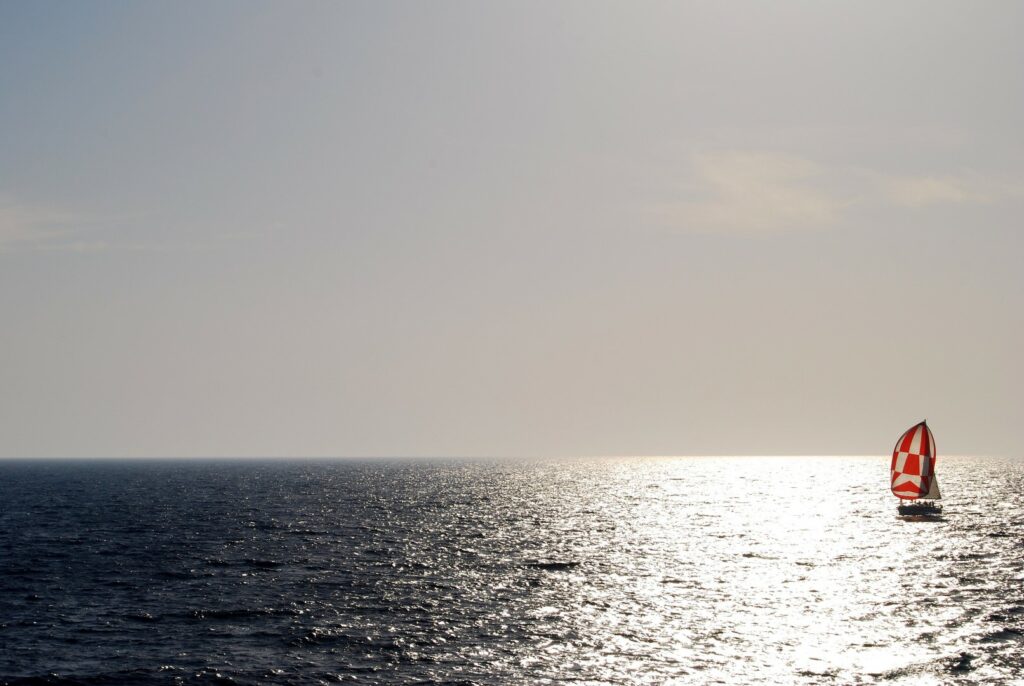
Circumnavigation in Modern Days
Circumnavigation nowadays doesn’t take nearly as long as the first circumnavigations did. People can nowadays sail around the world in a year or a year and a half. Even though, a lot of circumnavigations today take between 3 to 5 years . It is because people usually go sightseeing and take the time to relax and explore.
Sailing around the world costs anywhere around €1500 – €2500 a month . That amount covers all the costs for food and necessities. It also covers additional expenses that may or may not come while sailing. Depending on the personal preferences and a lot of other factors, sailing around the world can be more or less expensive. But this amount of money is which a lot of circumnavigators agree with.
Sailing around the world is a lot easier in modern days . All the modern tools, GPS and navigation make it a lot safer, too. Currently there are a lot of people who are on their expedition around the world. Some for sport, some for the adventure and the other to break world records.
Golden Globe Race is circumnavigation that people do for sports. It is a race around the world on a sailboat with only one crew member. First one was in 1968. The last taking place in 2018 and the next will be in 2022.
Sailors sail east. The starting and finishing point is Les Sables-d’Olonne in France. The competitors usually take five to six months to finish the race. The race in 2022 will start on 4 September. During the race, the competitors can’t use modern equipment.
Others sail the world for the pure adventure. One of those people who do it for the experience is Sailing Togetherness . They are going to sail around the world starting from their hometown in Denmark in 2020. Their plan is to use 100 % green energy and do all the boat work themselves. If you want to joint them, feel free to send them a message on Instagram.

Sailing Togetherness
Sailingtogetherness is a project started by two Danish guys Jakob (22 years) and Mikkel (23 years) aimed to inspire young people to start sailing . Mikkel has seven years of sailing experience and teaches young people in sailing. Jakob has never been on a sailboat but is willing to learn along the way.
The boat a Luffe 54 was built in 1988 as a luxury yacht on a danish boatyard. But it was bought as a insurance claim which means there is a lot of repairs needed. The plan is that the boat, Togetherness, will be ready to start its first circumnavigation in 2021 where it will cross the Atlantic to the Caribbean .
Everybody who wants to join can do so. The boat can house between 6-8 people while sailing . Experience in sailing is not a requirement but will be taught along the way. The crew will share all of the expenses during their stay. Depending on the location we expect it to be around 6500-7500 DKK (870-1000 euro) a month .
The route is not planned. The decisions of where to sail will be taken by the crew on the boat by that time. On sailingtogetherness’ Instagram it is also possible to vote on different locations that should be visited! The dream is to visit as many “local” (not touristed) places as possible. And the circumnavigation takes between 10 and 15 years. Another goal is also to sail along the South American coast and south of Cape Horn.
If people have interest in joining or hearing more they can write on Instagram or Facebook under the name Sailingtogetherness .
Fastest Circumnavigation Around the World
The world record holder for the fastest sail around the world is Francois Gabart . He has beaten the previous world record by 30 minutes in 2018. The record is now 42 days, 16 hours, 40 minutes and 35 seconds. The distance Francois sailed is 27 860 nautical miles with average speed of 27.2 knots and the maximum speed of 39.2 knots .
Francois did it on his trimaran Macif . This record will probably remain for quite some time because sailing around the world that quickly is more than amazing.
Youngest Person to Circumnavigate the World
The youngest person to ever sail around the world is Laura Dekker . Laura Dekker was born in 1995 and she loved sailing since she was a child. She was making her own improvised sailboats as a kid and was in love with the sea. As a result, she bought her first sailboat when she was only 11.
By the time she was 13, she sailed alone from Holland to England. After more than a few sails to England and back, she said that is enough of waiting. She went ahead and decided to fulfil her dream of sailing around the world. A few court cases later she managed to set off. Her starting point was in the Caribbean . She started the journey when she was 14 and returned when she was 16, making her the youngest person to ever circumnavigate the world .

Leave a Comment Cancel Reply
Your email address will not be published. Required fields are marked *
Save my name, email, and website in this browser for the next time I comment.
This site uses Akismet to reduce spam. Learn how your comment data is processed .
7 Legendary Solo Bluewater Sailboats Worth Considering
When setting out to explore the open seas solo, you'll have to choose the right bluewater sailboat from so very many available options. The perfect boat for sailing single-handed is one that's not only safe and seaworthy, but also easy to handle on your own. In this article, we've handpicked the top 7 legendary solo bluewater sailboats worth considering for their excellent track records.
The most legendary solo bluewater sailboats are the Contessa 32, Westsail 32, Hallberg-Rassy 42F, Pacific Seacraft 37, Island Packet 38, Tayana 42, and Amel 54. These boats have it all: from robust designs to a world-renowned reputation for performance and reliability. They are known for their seaworthiness, durability, and comfort.
We understand the importance of balancing comfort and performance when spending prolonged periods at sea. Each of these sailboats has been proven to provide a harmonious blend of these attributes. Let's get to know them more below.
- Solo bluewater sailboats are designed to be sailed by a single person, making them ideal for solo circumnavigation or long-distance cruising.
- You can get the Contessa 32 and Westsail 32 for as little as $30,000.
- The maintenance and repair costs of the seven boats range from $5,000 to $50,000 per year.
- Marina fees and insurance can range from $5,000 to $20,000 per year.
- Factor in upgrades and equipment costs that can reach up to $100,000.
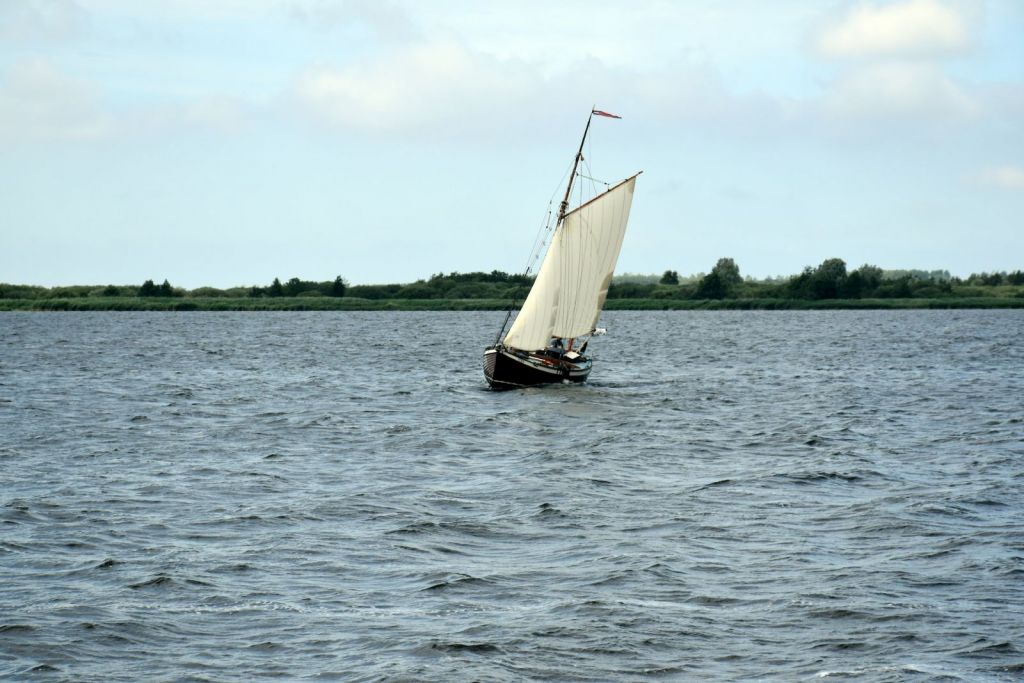
On this page:
The best solo bluewater sailboats, what makes a good solo bluewater sailboat, cost considerations when choosing a sailboat, maintaining your bluewater sailboat.
| Initial Purchase Price | Maintenance and Repairs | Marina Fees and Insurance | Upgrades and Equipment | |
|---|---|---|---|---|
| $30,000 to $60,000 | $5,000 to $10,000 per year | $5,000 per year | $5,000 to $15,000 | |
| $30,000 to $80,000 | $5,000 to $10,000 per year | $5,000 per year | $5,000 to $20,000 | |
| $200,000 to $400,000 | $10,000 to $20,000 per year | $10,000 per year | $20,000 to $50,000 | |
| $100,000 to $200,000 | $10,000 to $20,000 per year | $10,000 per year | $20,000 to $40,000 | |
| $100,000 to $200,000 | $10,000 to $20,000 per year | $10,000 per year | $20,000 to $40,000 | |
| $100,000 to $250,000 | $10,000 to $20,000 per year | $10,000 per year | $20,000 to $50,000 | |
| $500,000 to $1,000,000 | $20,000 to $50,000 per year | $20,000 per year | $50,000 to $100,000 |
Contessa 32 is a classic, compact, and seaworthy sailboat
Contessa 32's sturdy construction and excellent sailing performance have earned it a legendary reputation among sailors. With a well-designed interior layout, it has space for living aboard during your solo adventures. The Contessa 32 is a classic bluewater sailboat designed by David Sadler in the 1970s. It is known for its excellent balance, seaworthiness, and speed. It has a full keel, moderate displacement, and a classic design that has stood the test of time.
Westsail 32 is known for its rugged construction
The Westsail 32 gained fame as an affordable, rugged, and capable long-distance cruiser. Its full keel and sturdy hull ensure a comfortable ride in rough seas. The practical, function-driven interior makes it easy for solo sailors to maintain and navigate the vessel while providing essential amenities for an extended voyage.
Westsail 32 is another classic bluewater sailboat that was designed by William Crealock in the 1970s. It is known for its rugged construction, spacious interior, and excellent performance in heavy weather. The Westsail 32 has a full keel, heavy displacement, and a classic double-ender design.
Hallberg-Rassy 42F is known for its top-notch craftsmanship
The Hallberg-Rassy 42F is another superb choice for single-handed bluewater sailing. This Swedish-built yacht is well-renowned for its top-notch craftsmanship, stability, and comfort. It offers a spacious, well-lit interior, ensuring you'll enjoy your time below deck while cruising the open seas.
Hallberg-Rassy 42F is a modern bluewater sailboat designed by German Frers in the 1990s. It is known for its luxurious interior, excellent performance, and high-quality construction. The Hallberg-Rassy 42F has a fin keel, a spade rudder, and a modern design that combines comfort and performance.
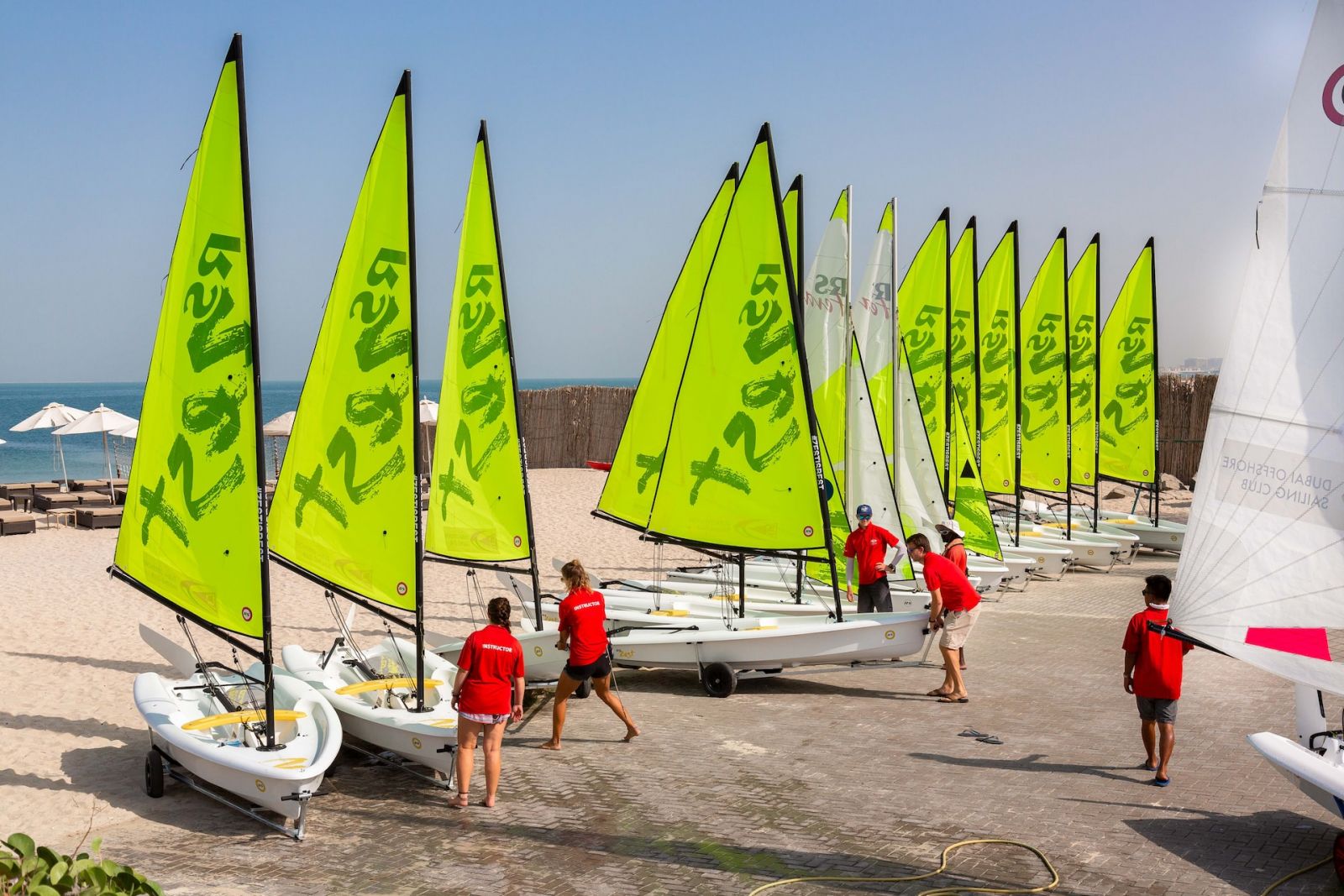
Pacific Seacraft 37 is designed for serious cruising
Pacific Seacraft 37 is a sturdy and reliable boat for solo sailors. Its moderate displacement and full keel provide excellent stability, while the well-thought-out interior layout includes abundant storage and comfortable living quarters. Its reputation as a proven bluewater cruiser makes it a top choice for solo sailors. The Pacific Seacraft 37 is another classic bluewater sailboat designed by Bill Crealock in the 1970s. It is known for its excellent balance, seaworthiness, and comfort.
Island Packet 38 is known for its spacious interior
Island Packet 38 is a popular choice among solo cruisers, thanks to its stable full keel design and living space. Its build quality, comfort, and performance make it well-suited for long-distance sailing. The spacious interior and practical layout ensure you have everything needed for a successful solo journey. Island Packet 38 is a modern bluewater sailboat designed by Bob Johnson in the 1990s. It 38 has a full keel, moderate displacement, and a modern design that combines comfort and performance.
Aside from bluewater sailing , there are other types of sailing discussed in this article.
Tayana 42 is known for its excellent balance, seaworthiness, and comfort
Tayana 42 is a comfortable, sea-kindly sailboat, ideal for single-handed offshore cruising. Its balanced performance, easy handling, and well-equipped interior ensure a safe and comfortable journey. It is well-regarded among sailors for its proven bluewater capabilities and timeless styling. The Tayana 42 is another classic bluewater sailboat designed by Bob Perry in the 1970s. It has a full keel, heavy displacement, and a classic design that has stood the test of time.
The Amel 54 is known for its luxury and exceptional build quality
This French-built vessel offers a spacious and comfortable interior with top-of-the-line amenities, making it an excellent option for solo sailors seeking a bluewater cruiser to explore the world in style and comfort. Its easy-to-handle design with advanced sailing systems allows you to sail solo with confidence and ease. The system includes electric winches, furling sails, and a self-tacking jib, which make it easy to handle the boat in all conditions.
To learn more about bluewater sailing , here's our comprehensive article on it.
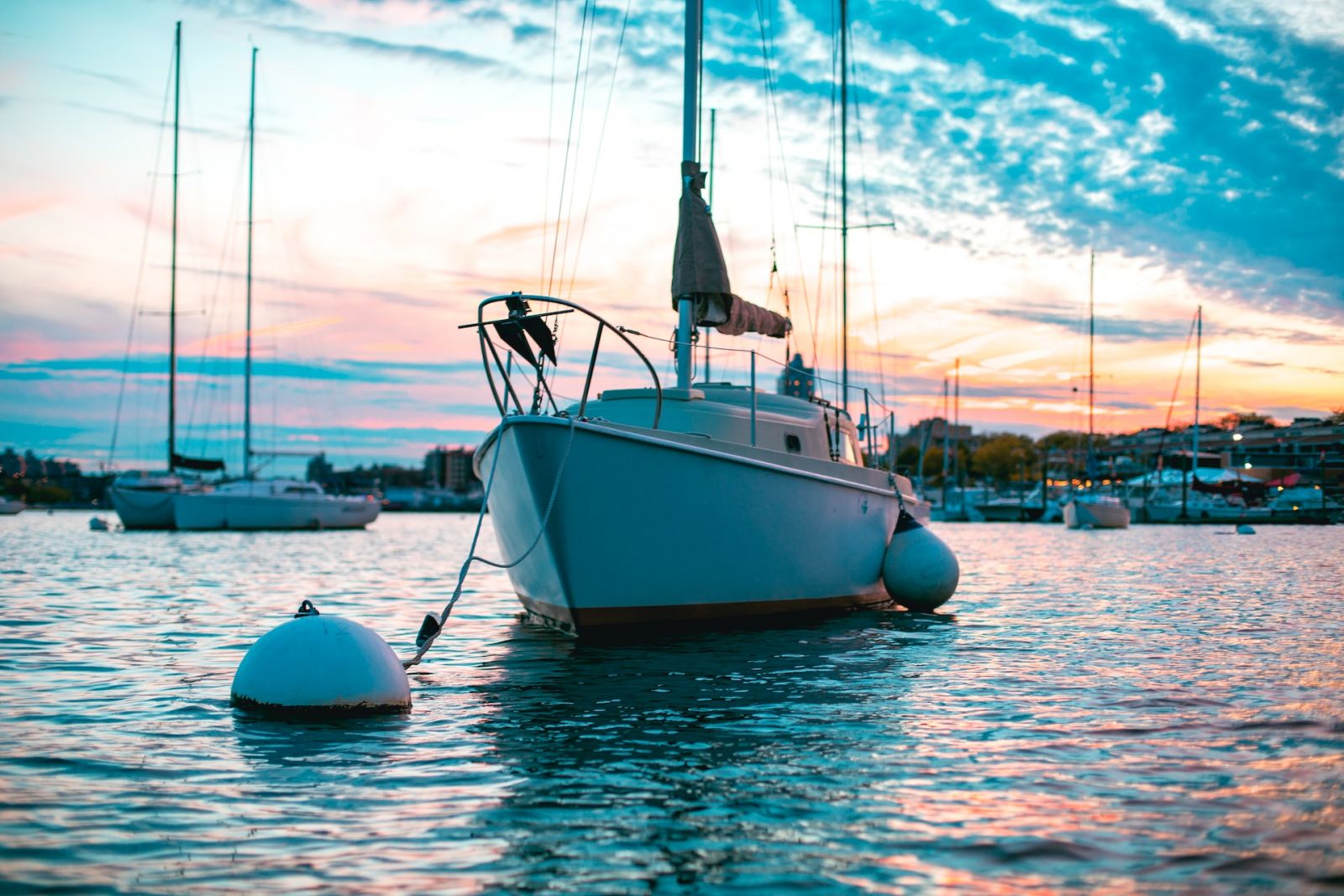
These factors will ensure not only your safety but also your comfort and ease during your sailing adventure.
Size and stability of a solo sailboat
A boat with a wide beam and short waterline provides more stability, making it easier for you to handle the vessel on your own. Some popular sailboat models known for their size and stability include the Westsail 32 and the Hunter Channel 31.
A good solo bluewater sailboat should be large enough to provide adequate storage space for supplies and equipment, while also being stable enough to handle rough seas and high winds. It should also have a well-designed hull shape that provides good stability and balance, and a keel that provides good tracking and prevents the boat from capsizing.
Ease of use and maneuverability of any solo sailboat
Features like roller furling and an electric windlass can make handling the sails and anchor much more straightforward. Also, hydraulic bow/stern thrusters with remotes can help you maneuver your boat easily and safely. Make sure to look for these features when choosing your bluewater sailboat.
A good solo bluewater sailboat should be easy to handle and operate by a single person. It should have a sail plan that is easy to adjust and control, and a steering system that is responsive and easy to use. It should also have a well-designed cockpit that provides good visibility and protection from the elements.
Durability and seaworthiness for long-term safety
A well-built sailboat with a history of proven offshore performance should be at the top of your list. Some of the best and most famous bluewater sailboats include the Alberg 30 and Hanse 371.
A good solo bluewater sailboat should be built to withstand the rigors of extended ocean voyages. It should have a strong, well-built hull that is capable of withstanding heavy seas and high winds. It should also have a well-designed rigging system that is strong and durable, and a keel that is designed to provide good stability and balance.
To learn more about the best keel design for bluewater sailing , here's our article on it.
Comfort and livability of a solo sailboat
Consider the layout and features of the boat, ensuring that it has a comfortable sleeping area, a well-equipped galley, and ample storage space. A good example is the Valiant 40, known for its excellent layout and seaworthiness.
A good solo bluewater sailboat should be comfortable and livable for extended periods of time. It should have a well-designed interior that provides adequate storage space, comfortable sleeping quarters, and a functional galley and head. It should also have good ventilation and lighting, and be well-insulated to provide protection from the elements.
Affordability and availability determine the sailboat's practicality
Set a budget and research suitable sailboats within that price range. Some budget-friendly options include the J/109 and Westsail 32. A good solo bluewater sailboat should be reasonably priced and readily available. It should be affordable for most sailors who are interested in long-distance cruising, and should be available for purchase or charter in most parts of the world.
If you're looking for bluewater sailboats under 40 feet , here's our article where we picked the top 13 most famous ones.
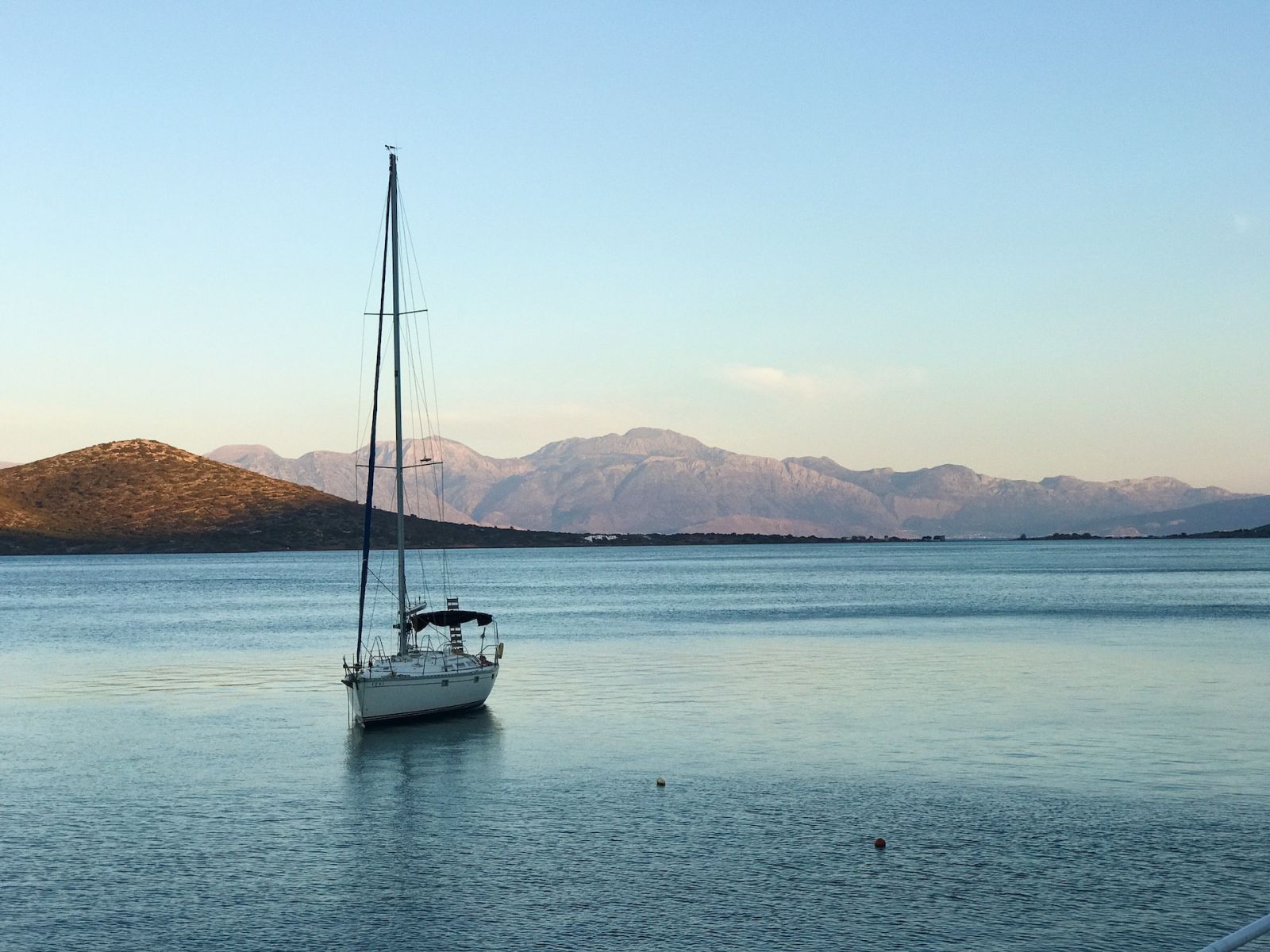
You'll be faced with a range of solo bluewater sailboat options, from budget-friendly to luxury models. Let's explore some factors you should keep in mind to make the best decision for your needs and budget.
Initial purchase price : This is often the first thing people think of when it comes to the cost of a sailboat. There's a wide range in prices, depending on factors like age, size, and brand. For example, a used Alberg 30 might cost between $10,000 and $15,000, while a new Amel 54 could be in the range of hundreds of thousands of dollars. It's important to find a balance between quality and affordability that suits your needs and financial capabilities.
Maintenance and repairs : Owning a sailboat comes with ongoing expenses to keep it in good sailing condition. Regular maintenance tasks like painting, replacing worn rigging, and inspecting safety equipment can add up over time. Be prepared to allocate a portion of your budget for these essential tasks, as neglecting them could lead to more expensive repairs down the line.
Marina fees and insurance : Depending on where you plan to keep your boat, you may incur costs for marina or dockage fees. Additionally, securing insurance coverage for your sailboat is a must to protect your investment. Both of these costs can vary widely, so make sure you factor them into your overall budget.
Upgrades and equipment : To ensure your sailboat is well-suited for solo bluewater sailing, you might need to invest in upgrades to improve its safety and performance. For instance, you may want to add a roller furling system, wind vane, or more advanced navigation equipment. These enhancements can amount to a significant investment, so it's wise to plan financially for any desired upgrades.
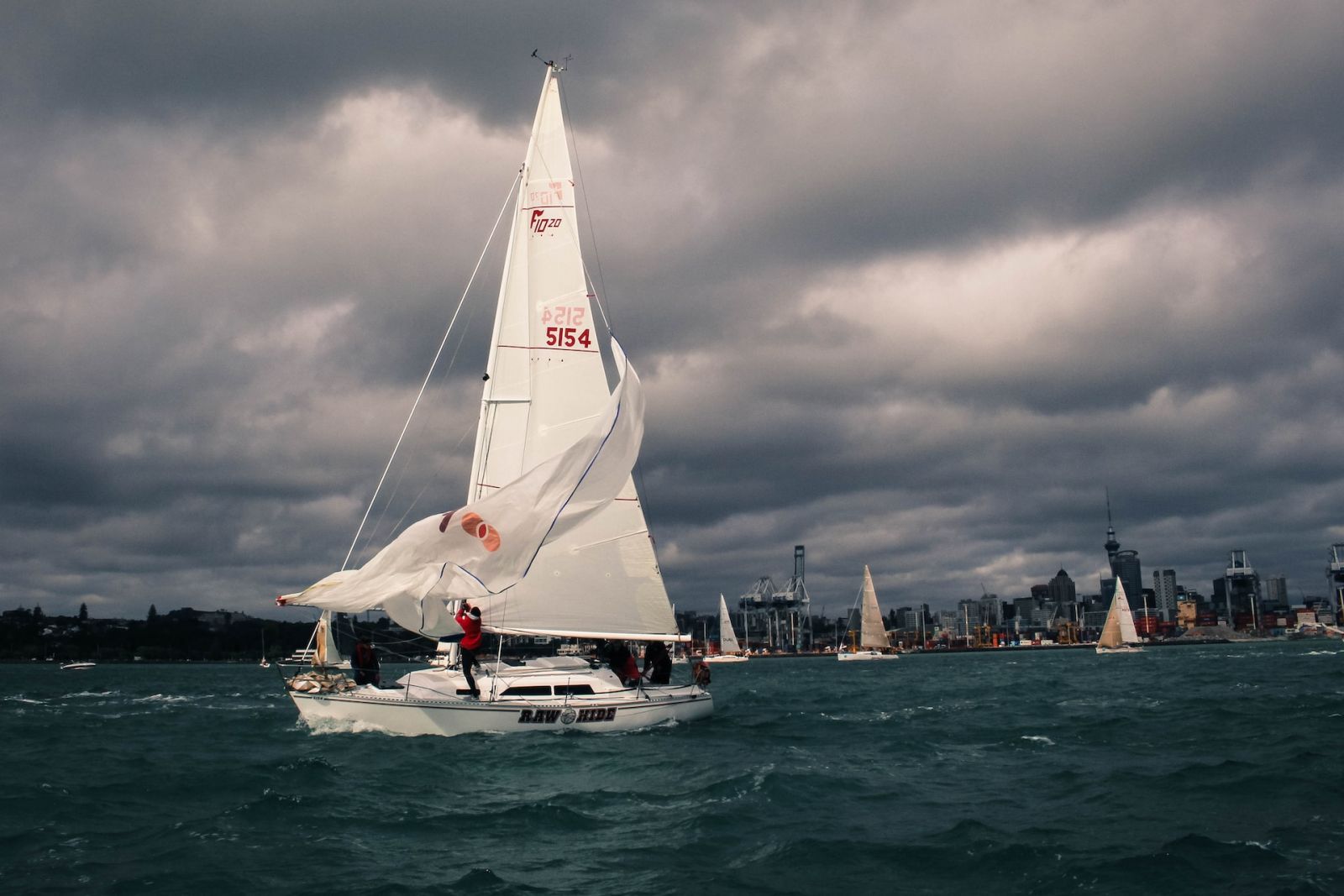
Here are some essential tips to keep your boat in top shape, and ensure its long life and performance during solo journeys:
Regular inspections : Make it a habit to perform a thorough inspection of your sailboat periodically. Examine the rigging, sails, hull, and all mechanical components. Routine inspections allow you to detect any signs of wear, damage or potential problems before they escalate.
Cleaning : Keep your sailboat clean by washing it regularly with freshwater and appropriate cleaning solutions. This simple practice prevents the buildup of dirt, salt, and other debris, which can cause corrosion and damage to your vessel over time.
Checking the bilge : Ensure that your bilge pump is working efficiently and that there's no water accumulating in the bilge area. If there are any signs of water accumulation, investigate the source and address any leaks or issues promptly.
Servicing the winches : Winches play a crucial role in your sailboat’s performance, so it’s essential to inspect, clean, and grease them regularly. This practice will guarantee their smooth operation and prolong their lifespan.
Sail care : Inspect your sails frequently for any tears, wear, or damage. Repair or replace them as necessary. To protect your sails from the sun’s harmful UV rays, always use a sail cover when not in use.
Keeping records : Maintain a logbook to document all maintenance tasks, inspections, and repairs. Not only will this help you keep track of what has been done, but it will also provide valuable information if you decide to sell your sailboat in the future.
Leave a comment
You may also like, what is bluewater sailing.
It's easy to confuse offshore sailing with bluewater sailing - and it's no wonder. Many people do, including myself. So I've decided to list the difference once and …
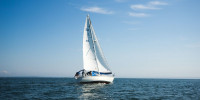
13 World-Famous Bluewater Sailboats Under 40 Feet

What's the Best Keel Design for Bluewater Sailing?

Different Types of Sailing and Racing Explained

41 Sailboat Cruising Essentials for Long Trips
World Sailing Circumnavigation Summary
THIS POST MAY CONTAIN AFFILIATE LINKS. PLEASE READ OUR DISCLOSURE FOR MORE INFO.
Last Updated on September 3, 2020 by Amy
From almost the very first day that we talked about selling all of our things and living on a sailboat, we talked with the goal of circumnavigating in mind. It took us nearly ten years to get from starting to talk about sailing around the world to actually completing our goal.
To complete a circumnavigation, one must*:
- start and end at the same port
- cross all meridians of longitude
- cross the equator
- travel at least 21,600 nautical miles
On March 26th, 2020, we sailed into Antigua and crossed our wake, making us world circumnavigators!
*this is according to the World Sailing Speed Record Council
Table of Contents - Click to Jump
Circumnavigation Summary
- Left Antigua December 30th, 2015
- Arrived Antigua March 26th, 2020
- 34,140 nm sailing
- 22 nm/day on average
- 10 long passages (1,000+ nm)
- 93.5% of those miles we sailed double-handed
- 27 Countries & Territories
- 4 Equator Crossings
- 4 Ripped Sails
- 6 Haul Outs
- 7 Trips Home
- 1100 Engine Hours (each)
- 3390 Generator Hours
Our World Circumnavigation Path
There is a lot that goes into planning a world circumnavigation . Some people might think sailing around the world means you can have ultimate freedom; in reality, the route is very restricted as there are places that bottleneck or parts of the world to avoid for piracy reasons.
We believe we got to visit a good mix of places; six continents, 27 countries or territories, places that are tourist hot spots, and places hardly anyone ever goes to. We explored amazing food, ancient cultures, and saw some of the most impressive wildlife in the world.
Before Our Circumnavigation
Since a circumnavigation must start and end at the same port, we’re primarily discussing our adventures since we left Antigua, the island where we crossed our wake. Of course, at the time, we didn’t know that would be where we would finish our world circumnavigation.
Our life onboard Starry Horizons started in October 2014, when she was launched in La Rochelle and we moved aboard . We self-delivered our boat to Florida, where we outfitted her for world cruising. We left Florida June 18th, 2015, which we consider the start of our cruising life.
Because we took so long in Florida, we only sailed the Bahamas for three weeks and then shot up to spend hurricane season in Nova Scotia and Maine . We made our way back down to the Caribbean and spent three months sailing the Caribbean islands .
2016: Sailing the Caribbean and South Pacific
We started the year in Guadeloupe and hopped our way down to Grenada, we sailed to Panama, where we transited the Panama Canal and set off across the Pacific . We spent three months in French Polynesia before sailing to Niue , Tonga , and Fiji . We ended the year in New Zealand for the cyclone season.
2017: Back to the South Pacific
We started the year off with five weeks on a road trip around New Zealand . After cyclone season, we realized that we loved sailing the South Pacific , and wanted to get out there again, extending our circumnavigation for another year. So we did; we went back up to Tonga , returned to Fiji , and then sailed on to Vanuatu and New Caledonia before coming to Australia for cyclone season.
2018: Australia and Southeast Asia
After spending New Year’s Eve in Sydney , we started to work our way up, sailing the eastern coast of Australia . We didn’t leave the country until July, so that was over six months exploring, including six weeks flying around Australia .
After Australia, we joined the Wonderful Sail 2 Indonesia rally and spent 100 days cruising Indonesia. Then we stopped in Singapore and Malaysia (mostly Langkawi ) before finishing the year in Thailand .
2019: The Indian Ocean and Africa
We left Thailand to sail across the Indian Ocean . Our first stop was Sri Lanka , where we traveled for twelve days inside the country. Then we island-hopped through the Maldives , Chagos , and Seychelles . We got stuck in Seychelles – we didn’t mind – and arrived in Madagascar early October and then crossed the Mozambique Channel to South Africa . We made it to Cape Town by the end of the year.
2020: Sailing up the Atlantic
This was the year of long passages. We sailed twelve days from Cape Town to Saint Helena , twelve days to Recife, Brazil , and fifteen days to Antigua . That’s a lot of miles!
How Long Should a Circumnavigation Take?
Our circumnavigation took four years and three months. The World ARC does it in 18 months. We’ve known people who’ve done it in 15 years. I think our time frame was pretty perfect.
For people who are just starting their circumnavigation plans, I’d say start with the World ARC route and expand it. If you do some research and think about what part of the world you are most excited about, plan to spend an extra year there. I think three to five years is a great time frame.
We wanted to spend a moderate amount of time on our circumnavigation. We were worried if we took too long, there would be too many things about cruising we didn’t like and we would choose to stop. And that was a legitimate concern. Many people we know stopped cruising earlier than planned or worse, split up with their partners because it wasn’t working in such a high-stress environment.
Read more about planning a circumnavigation .
How Often Did We Sail?
Here is a breakdown of how we spent our nights:
| Total | 1,547 | % of total |
| Dock | 292 | 18.88% |
| Mooring | 134 | 8.66% |
| Haul Out | 177 | 11.44% |
| At Sea | 199 | 12.86% |
| Anchor | 745 | 48.16% |
This greatly depends on where you are in the world too.
| Nights | Dock | Mooring | Haul Out | At Sea | Anchor | Total |
| 2019 – Indian Ocean and Africa | 181 | 15 | 15 | 42 | 112 | 365 |
| 2018 – Australia and Southeast Asia | 67 | 15 | 60 | 33 | 190 | 365 |
| 2017 – South Pacific | 19 | 66 | 99 | 25 | 156 | 365 |
| 2016 – Caribbean and South Pacific | 25 | 38 | 3 | 60 | 240 | 366 |
We docked a lot more in 2019 than any other year. Here’s the breakdown of nights in a marina by year:
| Nights | Dock | % of year |
| 2019 – Indian Ocean and Africa | 181 | 49.59% |
| 2018 – Australia and Southeast Asia | 67 | 18.36% |
| 2017 – South Pacific | 19 | 5.21% |
| 2016 – Caribbean and South Pacific | 25 | 6.83% |
We went the entire 2017 cruising season without docking in a marina. We spent so many nights in marinas in 2019 because we opted to stay in Eden Island Marina for nearly two months in Seychelles and South Africa is not generally conducive to being at anchor.
Moorings are necessary in some places, though it can be difficult to trust them. For times when there was no room to anchor, or it was too deep, or we needed a place to leave the boat for cheap, we picked up a mooring ball.
| Mooring | Mooring | % of year |
| 2019 – Indian Ocean and Africa | 15 | 4.11% |
| 2018 – Australia and Southeast Asia | 15 | 4.11% |
| 2017 – South Pacific | 66 | 18.08% |
| 2016 – Caribbean and South Pacific | 38 | 10.38% |
In 2017 we left Starry Horizons on a mooring ball in Tonga while we worked a crewing position and were gone for six weeks.
Learn how to pick up a mooring ball .
We hauled out six times on the circumnavigation. Four of those times were short haul outs for projects. Two of those, we combined projects (usually a bottom job) with traveling; we were hauled out for six weeks in New Zealand and eight weeks in Australia, and both times we traveled around the country for a majority of the haul out.
| Haul Out | Haul Out | % of year |
| 2019 – Indian Ocean and Africa | 15 | 4.11% |
| 2018 – Australia and Southeast Asia | 60 | 16.44% |
| 2017 – South Pacific | 99 | 27.12% |
| 2016 – Caribbean and South Pacific | 3 | 0.82% |
We spent 199 nights underway on Starry Horizons during our world circumnavigation. That’s only 12.86% of our nights.
| At Sea | At Sea | % of year |
| 2019 – Indian Ocean and Africa | 42 | 11.51% |
| 2018 – Australia and Southeast Asia | 33 | 9.04% |
| 2017 – South Pacific | 25 | 6.85% |
| 2016 – Caribbean and South Pacific | 60 | 16.39% |
This is something to consider when thinking about the living space on your boat. Read our thoughts on bigger versus faster boats .
How fast does Starry Horizons sail? As a fully kitted-out cruising boat, we averaged 6.65 knots over our longest 25 passages.
Of our time at sea, ten passages were longer than 1,000 nautical miles. The longest passage on our circumnavigation was crossing the Pacific Ocean at 19 days and 3,142 nm.
Our fastest passage was sailing to Australia when we averaged 7.76 knots over 4.7 days. Starry Horizons’ optimum point of sail is about 90 degrees on the beam. Conditions were calm and the apparent wind speed was between 10-15 knots most of the way, perfect for our screecher.
And, no big surprise, almost half our nights were at anchor.
| Anchor | Nights | % of year |
| 2019 – Indian Ocean and Africa | 112 | 30.68% |
| 2018 – Australia and Southeast Asia | 190 | 52.05% |
| 2017 – South Pacific | 156 | 42.74% |
| 2016 – Caribbean and South Pacific | 240 | 65.57% |
We’ve got a great trustworthy anchor and anchor system .
Cruising Costs
Our blog post about the costs of cruising around the world has recently been updated, comparing marina and formality costs all over the world. Please keep in mind that this is for a 44′ catamaran.
Favorite Places
Check out our post detailing the best of our travel life !
The Best Parts of Sailing Around the World
This short list is in additon to our post, One Year Cruising: The Perks .
In our previous post, I’d talked about how we get to visit such amazing exotic locations. I grew to realize that cruising doesn’t just get you to fabulous exotic hot spots like Bora Bora and Fiji, but you also get to visit places other people literally can not get to without arduous voyages, places of extreme isolation . Places like Beveridge Reef , with no land, or Chagos , with no airport outside of the military base, are places that cruisers get to enjoy, but the rest of the world would have difficulty getting to. Even some places we went to, like Fulaga in Fiji , only have a connection to the outside world via supply boats and satellite internet.
Cruising is very conducive to slow travel . While, like in the ARC, you can jet-set around the world, it’s much more likely that cruisers are traveling slow. We spent 100 days in Indonesia, 70 in South Africa, 56 in the Maldives. These allowed us to get a truly wide view of each country.
In the South Pacific, we’d found quite a few boats who were on a pretty similar schedule to us. They came and went from our lives, meeting up with us again and again. In Australia, we met two boats that would become our closest cruising friends : Mirniy Okean (Carlos & Linda) and Slow Flight (Kimi & Trevor). In the Indian Ocean, there are a lot fewer boats making the passage, and we got incredibly lucky to click so well with these two boats. Though we weren’t on the exact same path, we did the rally together, caught up in Thailand, spent weeks with Slow Flight in the Maldives, hung out with Mirniy Okean in Seychelles, saw both boats in Madagascar and South Africa. Having this friendship was amazing.
Cruisers are generally an interesting and very diverse group of people . Along the way we’ve met people younger than us (we’re 35 right now) who are out sailing on shoe-string budgets. We’ve met some of the biggest sailing vloggers on YouTube (or in China). We’ve met families homeschooling as they go, people who’ve started and sold tech companies, people who’ve retired with simple pensions.
Thanks to the breadth of travel we’ve done, I think we’ve become better world citizens by exposing ourselves to different cultures. We’ve seen what it’s like to live in some of the biggest cities (Sydney, Singapore , Cape Town ) but also what it’s like to live in incredibly rural parts of incredibly poor countries.
We know how big the world is now. Sailing all the way around it (take that, flat-earthers) was a huge accomplishment and gave us a better appreciation for the ability to travel so easily via other methods.
The Worst Parts of Sailing Around the World
This short list is in addition to our post, One Year Cruising: The Challenges .
We have an expression we like to use when we say goodbye to cruisers: “another day another bay” . Parting ways with our friends is doubly hard in the cruising life, because we truly have no idea when we might see them again. Plans change, and you can never count on reconnecting with your friends in person. Mirniy Okean, who we last saw in Madagascar? It’s very likely the two boats will never see each other again.
Even with over four years to sail around the world, some places we still felt rushed . A lot of that was weather constraints . At the start of every hurricane or cyclone season, there’s always the looming deadline of the next place you have to get to for a safe storm season.
While we were out sailing around the world, we missed so much time with our friends and family . Grandparents passed away, friends got married and had kids. While we returned to the states for funeral services of our grandparents, we missed other occasions that gathered friends and family for celebrations. That was tough.
While cruising is great for getting us out to see the world, there is definitely a social-economic bubble within cruising . Almost everyone is white and straight, most are native English speakers, older, and fairly affluent.
It seemed like the longer we cruised, the more difficult formalities became . In the Indian Ocean and Africa, we usually had to hire an agent (Sri Lanka, Maldives, Seychelles) and it was expensive. In Madagascar and South Africa, we had to visit offices in every port we went to. Back in the Caribbean? David checked us into Guadeloupe using a computer in the back of a souvenir shop, and it was free.
The longer we go, the more boat projects pile up . Living full time on the boat, things break constantly, even on a brand new boat. We’ve had a few situations where something breaks and we have to urgently fix it – usually, we have no idea how to start.
The Indian Ocean and Africa were also difficult to get boat supplies . Thailand has East Marine Asia , the Caribbean has Budget Marine and Island Water World , but in between, there wasn’t really much. Even South Africa didn’t seem to have a big all-inclusive chandlery like West Marine , or maybe we just weren’t looking in the right places. Even in Antigua, where we have a Budget Marine ten minutes away, we might have to wait a few weeks to have a $10 part delivered to the island. It’s always been a general frustration that some companies, even marine companies, don’t understand that we are nomadic and will have to wait for their package to arrive, so when they mail us the wrong part, or “forget” to ship something, it takes a larger toll. Patience is key!
In some places like Indonesia, acquiring fuel is difficult – there are no fuel docks. Sometimes the fuel dock has huge black rubber fenders that leave marks all over the boat.
The lack of a schedule can sometimes get to us. When we are on the move a lot, like day hopping through islands or along a coast, it’s hard for us to have a routine down. Usually, David and I try to exercise every day around sunrise. But what if we need to leave in the early hours to move anchorages? Boat projects always take 3x longer than the 3x you calculated off of how long you thought it would take. Committing to doing anything at the same time of day or the same time every week is nearly impossible. Being in lockdown these past few weeks has shown us how truly lovely it is to be able to create our own schedule and stick with it every day.
Need to take a break from cruising? Here are my tips for how to break out of the cruising funk .
What About Pirates and Bad Weather?
Generally, we avoided the areas with the most violent piracy levels (the Philippines and the Horn of Africa). We were really fortunate that nothing was stolen off our boat the entire circumnavigation. We lock our boat up every night but have no security system. We put our dinghy up in the davits EVERY SINGLE NIGHT. The outboard is locked to the dinghy.
As far as bad weather, the worst weather we encountered usually lastest just a few hours. We had a storm hit us coming into Bermuda and our screecher started to unfurl and flap around. Coming into Seychelles, a storm blew directly from our destination. In both those situations, the wind wasn’t incredibly high, but it was coming from directly ahead of us, making the conditions very uncomfortable.
Sailing over the tip of Madagascar was a tough one. The current was so strong, and we were vacillating between 10 knots surfing down the waves and 1 knot getting sucked back up. Meanwhile, the wind was blowing strong and at a high wind angle (I think 50?). We turned our engines on and ran perpendicular to the current to get out of it as fast as possible.
Sailing the coast of South Africa , we saw high winds – up to 40 knots, but it was always dead downwind. I think that every time we arrived in port in South Africa, we did so with a little bit of the genoa unfurled and chugging along comfortably.
Well, your favorite Star Chasers are currently in Antigua, riding out this COVID-19 thing and waiting for the weather to clean up so we can head outside of the hurricane zone. We are planning to haul out June 1st at Cape Charles Yacht Center in Virgina.
Starry Horizons will spend hurricane season taking a rest. David and I will buy a car and drive to Texas and split our time between Houston and Dallas. We hope that we can hold parties in both cities to celebrate the end of our circumnavigation (especially since our party in the Caribbean was canceled!).
In October we will drive back to Starry Horizons and launch her for the 2020-2021 season. Our current plan is to sail down to Turks & Caicos and spend the season working our way downwind (no overnight sails! no upwind sailing!). We won’t have a particular goal in mind, which will be a relief for all of us (except for, you know, getting out of the hurricane zone again).
Beyond that….we don’t know yet!
38 Comments
Have you ever considered the psychological impact of constantly being on the move and how it may affect your ability to maintain a routine or sense of stability in your life?”, “refusal
- Pingback: Un tour du monde à la voile en catamaran : une aventure de 1 546 jours à travers 27 pays
- Pingback: Una vuelta del mundo en catamarán: una aventura de 1.546 días a través de 27 países. - Alquiler Catamarán
- Pingback: Starry Horizons, Fountaine Pajot 44’ | Harbormoor Blog
My wife and I have just finished your series and congratulations on completing a fantastic adventure that required an amazing amount of planning and learning and sharing that with everyone! Have you been able to execute your plan to leave for Virginia for June 1?
Hi Bob! No, we are still in Antigua, waiting for the weather to get better. It’s ok, everything is pretty great here!
Wow that’s absolutely amazing! What an incredible adventure and love all the stats you’re sharing!
Thank you! We have loved sharing our adventures!
This is beyond inspiring!! What a journey. You guys are awesome!!
Aw thank you!
Wow this is so cool. I want to learn sailing. I had no idea about circumnavigation until now. Thanks!
What??? First time that happened was 500 years ago.. better study some history…
The first world circumnavigation? Yes, you are correct. Nowhere do we say that we are the first to circumnavigate… that would be ridiculous!
Thank you! It’s easy to start small, at a local sailing club, or chartering a boat!
WOW! I have no other words! Such an adventure you lived guys! I am REALLY impressed!!! Congrats for completing the circumnavigation!
Such an excellent recap of your adventures! You continue to amaze me with the organization of your writing and the detail of the statistics you keep. I imagine being finished with the official circumnavigation brings both relief and sadness. Finishing your goal is tremendous, but for planners like you guys, maybe it puts you at loose ends a little? Then again, knowing you don’t have a set schedule must be freeing too! I’m terribly sorry you couldn’t have your celebration of the completion! But I bet you will have plenty of folks who will happily celebrate with you at the delayed parties. We are truly happy for you and proud of your accomplishments. And your detailed writing and summary will guide us as we travel, so thank you. Love from Mary Grace and Frank
Thanks so much yall! You’ve been an awesome part of our journey, and I hope we get to hug and celebrate in person sometime soon!
This trip sounds incredible! I’ve never thought about sailing but this sounds amazing.
Thank you! Sailing around the world has some amazing perks!
This is literally something I dream about doing, but I have no sailing knowledge! How does one get into this?? I’ll def be poking around more of your site!
Start small! I learned to sail on small boats called sunfish. There are a lot of small sailing boats out there, or classes, where you can learn the basics. Check in with a local yacht club if you can!
Wow what an incredible trip! So much knowledge, thank you for your insight. Would love to sail the world but have a very slight fear of the open ocean haha.
That would make it tough! 🙂
So impressed. It was great you could do it together.
Yet another great article Amy. So much valuable info in “power pack” format. Our global cruise might come sooner than I expected, COVID might just force our hand.
Glad you found it helpful! I hope whatever happens, its a good thing!
Brilliant Amy and David, thank you for sharing your amazing trip and being so open and honest with your wealth of knowledge. Lynda and I have applied numerous of your thoughts and suggestions aboard our Helia Itiki. Hopefully we will cross paths when we are in the Caribbean once we settle down into however the New World pans out.
I hope so too! Would be great to catch up!
Your writing, Amy, is truly excellent! I sense a spreadsheet or two behind all that data. What a wealth of information!
Lots of spreadsheets and help from a finance guy! 😉
Congratulations and THANKS! We have been following you for several years as we prepared and launched our circumnavigation on our Helia. Your content, attitude, and approach are truly inspirational and appreciated!! Jeff & Debby SV Making Memories
Aw thank you! We really appreciate the kind words!
So proud of you both. This was a great post, a very well written recap of the trip.
Thanks mom! 🙂
Lovely article Amy. Super well put together and, oh my, the details! It’s amazing you have all that information. Congratulations on the circumnavigation and glad to hear you’ll carry on cruising!!
Thanks Ryan! I hope we see each other out here someday!
Leave a Reply Cancel reply
Your email address will not be published. Required fields are marked *
Notify me of followup comments via e-mail. You can also subscribe without commenting.
This site uses Akismet to reduce spam. Learn how your comment data is processed .
Yachting World
- Digital Edition

Sailing around the world: Cruising couples’ top tips for a dream voyage
- Helen Fretter
- June 19, 2019
Is sailing around the world with your partner the ultimate bluewater dream? Helen Fretter meets World ARC couples who’ve done just that

Who would you pick as your round-the-world cruising companion? Photo: Tor Johnson
If you could choose anyone to go on a grand adventure with, would it be your life partner? For many couples that’s the ideal.
But what if you don’t have the same level of experience, or one of you isn’t confident to co-skipper? Perhaps you plan to take friends and family with you. But what happens if those plans change halfway round? I talked to World ARC crews near the finish of their circumnavigation to find out how different couples had answered those unknowns over their round the world voyage.
Over the 2017, 2018 and 2019 World ARC rallies (the round-the-world rally organised by World Cruising Club) around 20-30% of yachts set off double-handed. But by the time the fleet reached Tonga or Fiji that proportion had risen to about 50%.

Ruud and Laurie Bosman recruited crew from within the ARC rally after deciding to complete their world voyage
Grenada was a homecoming celebration for the World ARC fleet. While St Lucia marked the end of the 2018-19 rally, Grenada signalled the fleet’s return to the Caribbean. A full circumnavigation for most, 438 days sailing for those who’d completed it in a single World ARC loop.
Some 38 yachts started in St Lucia in January 2018, 16 were gathered in Grenada this March. Some had started in 2017 – or even earlier – but peeled off to linger in the Pacific or return to normal life for a while, then hooked into the 2018 rally on its way past. Others had diverted to explore New Zealand, Ascension Island, or another outpost, before rejoining their fleet.
No matter how they’d done it, all had sailed some 30,000 miles, crossed the Pacific , Indian and Atlantic Oceans, and lived at anchor for months on end.
With very few exceptions, most of the boats belonged to couples taking on their first trip sailing around the world. Some had sailed the entire voyage jointly, on others one partner had flown home for a stage or two. Some had taken crew from day one, others had switched between double-handing and sailing with more aboard. Several started with one plan, and finished with a very different set up indeed.
Article continues below…
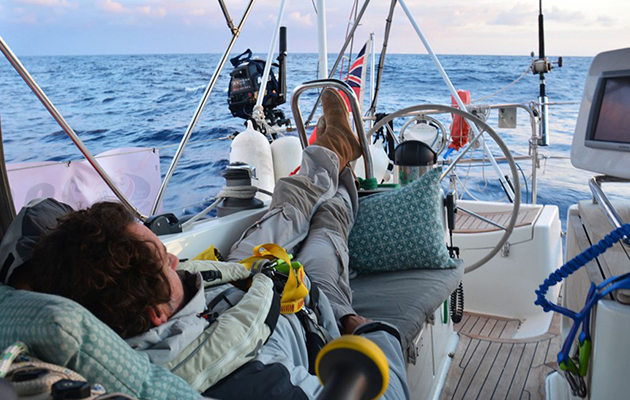
How much does it cost to sail around the world? The real costs of liveaboard cruising
Two years ago my partner Nick and I set off from the UK to fulfill our dream of sailing around…

Onboard creature comforts: Little luxuries for sailing around the world
Cruising sailors who also call their boat their home usually give plenty of consideration to making life on board as…
Personal space
One such couple was David and Wendy Tipton. A former farmer from Staffordshire, UK, David had built up a recycling business that he sold, enabling them to buy Mischief , a Jeanneau Sun Odyssey 479, and sail around the world. There was only one problem: Wendy hated the water and considered herself an inexperienced sailor.
Before they set off on the 2017 ARC transatlantic, Wendy had to learn to swim before she could even do a sea survival course. “It was never my dream to circumnavigate, it was David’s. So I went along with it, but it was totally out of my comfort zone,” she recalls.
Wendy’s initial condition of agreeing to do the World ARC was that they would take a crew to sail Mischief with them. They sent a round robin email to friends and sailing contacts to see who wanted to join them, and garnered an enthusiastic response, with many signing up for different legs. One was a very experienced sailor who sailed with the Tiptons for the first six months, which Wendy says gave her a lot of confidence.

David and Wendy Tipton began their World ARC with crew, but later switched to sailing two-up. Photo: James Mitchell
But 15 months is a long time to share your home, with up to six aboard at times, and Wendy admits having no personal space nearly drove her to breaking point. “I did have my bags packed to go home at one point. I was so fed up. It was nothing to do with the sailing, I was just sick of people.
“We were at the stage of needing down time on our own. It’s very intense – I didn’t appreciate how intense the whole trip would be. You wouldn’t have people living with you for six or seven months, and things that wouldn’t normally irritate you become irritating. For my own sanity I needed some time on our own.”
They decided instead to sail on double-handed from South Africa, and arrived in St Helena bowled over by how smoothly it had gone. “It was an absolute revelation,” David recalls. “The watches worked well, the boat worked well, and we were just asking ourselves why have we not done that before?”

The World ARC can include stop-offs for shoreside adventures including a South African safari. Photo: Haley Haltom
Before switching to sailing double-handed Wendy had sought advice from other crews on the ARC, many of whom had become close friends. She particularly asked the women for honest opinions, and says that they were overwhelmingly positive – with the obvious caveat that it could be more tiring sharing the sailing between just two.
They began their first double-handed passage with David sleeping in the cockpit during his off watches, “just in case she needed me quickly,” he recalls. “But after a few days of that regime she said, ‘You might as well go down below, I’m fine.’”
But things didn’t go so well on one of the next stages, from Cabedelo, Brazil, to Devil’s Island, French Guiana. “It was a bit of a catalogue of events,” he explains. “Our radar stopped working, so we were not able to monitor squalls.
“We had another boat who was monitoring them for us, but one came through that went from 7 to 35 knots and we had a spinnaker up in the dark. It broke the spinnaker halyard, the spinnaker went round the keel, the helm wouldn’t come off autopilot so we broached, an outhaul and a batten in the main broke.”

The Bay of Islands in Fiji’s Lau Group. Photo: Haley Haltom
Dealing with such a litany of problems between just the two of them was unknown territory, but Wendy says that while the situation did scare her, they were able to calmly work through and solve each issue.
“What the World ARC has given us – not just from the easy passages, but from the difficult passages – is the confidence that you could throw most stuff at us and we’d be OK,” David added. When they received the Division A 1st prize for the leg to Grenada, sailors across the fleet voiced their pride in Wendy for the progress she’d made.
Another couple that decided they were better off completing the rally two-up were Dan and Agnes Long from Florida on Smoke & Roses . Dan, a former firefighter, and Agnes, a former florist – hence the boat name – ran their Leopard 47 as a charter boat before the World ARC and were experienced sailing in home waters, both holding US Captain’s licences.

Setting off on the Lagoon 47 Smoke & Roses
Like many, they began their World ARC with trusted friends, and were also joined by their adult daughter for stages. But they later took on an unknown crewmember who had been recommended to them.
“She way overstated her sailing experience,” Dan recalls. “She could not trim sails, and she’d argue with you about it.” The final straw for Dan was waking up to find them sailing 90° off course. When he challenged the crew on deck she replied: “Because it’s faster.”
Fearful that they would run aground or make some other catastrophic error, Dan found himself supervising every watch – defeating the point of having a third person aboard. “So instead of being up for my shift, I’m up for my shift and her shift. But with Agnes [on watch] I’ll sleep through the night because I trust her.”
Having sailed two-up for some of the shorter legs around the Society Islands, the Longs also decided to go double-handed from Cape Town and found themselves easily handling the longer distances, setting a spinnaker for three days straight and covering 200-plus miles a day.
Bringing in reserves
For other couples taking on crew turned out to be a positive switch. Peter and Anissa Pappas, from Wyoming, USA, had never sailed any overnight passages with just themselves aboard their Amel Super Maramu 2000 Callisto before signing up to the rally. Anissa describes herself as a very inexperienced sailor, but they sailed from Grenada to Cape Town double-handed.
Their Amel is set up for single-handed sailing, with push button controls from a protected centre cockpit. The duo sailed conservatively, never over-canvassed. “And we set radar guard zones and cross-track error in case our autopilot started wandering around,” explains Peter. But Anissa still found night watches hard.

Night watches can be a long and lonely experience
“I was always worried if we were going to hit somebody. I never felt totally comfortable with that. I always felt that if something is going to happen, it’s going to happen on my watch.” She says she would frequently wake her husband for a second opinion.
But when one crewmember who had been sailing on another boat found himself without a berth for the leg from Cape Town, the Pappas’s made a snap decision to invite him to join them.
“We’d said no on countless occasions to taking other crew,” recalls Anissa. “It’s been hard [going two-up], especially hard on my husband because everything falls to him. But for us transitioning to crew has been easy, and our new crew has been the easiest person.”
With an extra hand they were soon able to carry more sail area, enjoying having the 52ft ketch flying along under four or five sails, including two spinnakers and a staysail.

The start of the 2018 World ARC Leg 16 heading out of St Helena
“With hindsight, I think we should have started out with crew,” admits Anissa. “Peter and I had not really been on the boat together for enough time to really get all the sails up and learn what we needed to learn. And later maybe – or even maybe not – we would have downsized.
“Two was tough, but we did it. But for couples I would say keep an extremely open mind about bringing crew aboard.”
Roving crew
While the Pappas’s made a sudden decision to take a third hand along, the 2018-19 World ARC was characterised by an unusually high number of crew who joined to sail one boat, and ended up becoming such a fixture of the rally community that they extended their trip by joining others.
Several of the roving crew had sailed on three or four different yachts by the time they reached Grenada. Karen Slater, a former fire service worker from the UK, was a very popular member of the ARC family and was about to join her sixth boat for the final cruise to St Lucia.

Freediving with whale sharks in Namibia. Photo Haley Haltom
Having a floating pool of experienced crew became an invaluable resource for some boats. American retirees Ruud and Laurie Bosman on the Hylas 54 Blue Pearl had originally only planned to sail the first half of the rally.
“But by the time we were in Australia Ruud felt very strongly that he wanted to complete the circumnavigation and do it all at once, and I felt very strongly that I did not want to cross the Indian Ocean,” recalls Laurie.
Both aged 71, the pair never wanted to sail double-handed and had organised crew for the Pacific legs, but no further. “Because we had never planned to do the whole circumnavigation we had made no plans beyond French Polynesia,” Ruud explains.

The unspoilt beauty of the Marquesas. Photo: Haley Haltom
When Laurie returned home to spend a few weeks with family, they invited other ARC crew aboard, some staying for the entire second half of the circumnavigation.
“It’s been quite easy, you are relatively familiar with the people because they have been in the fleet. They have a bit of a reputation, and importantly you know why they’re leaving boats,” he adds.
There are still no guarantees that an experienced ARC crewmember will be a good fit. Flashpoints were usually over domestic niggles like food preferences (several couples commented on how provisioning was much simpler with just two aboard, reducing one area of work).
Another issue for the boat-hopping crews was where their ‘home’ base was during stopovers. Peter Pappas commented: “It’s great having crew when you’re underway, but really when you get to your destination you assume they will get off the boat after a couple of days, so you and your wife can have some privacy, and have your home back.”
Many of the World ARC crew strategically took themselves away during long stopovers: diving in Australia, going on land tours, or even climbing Kilimanjaro during the fleet’s visit to South Africa.
Sharing the load
For those who did sail as a couple, how they divided the roles often reflected home life. Peter and Wendy on Mischief , and Dan and Agnes on Smoke & Roses , had both worked together so were used to spending extended periods of time with each other. Other couples, where one had spent much of the marriage putting in long hours at the office, had a bigger adjustment to make.

Mark and Helen Chatfield sailed Mad Monkey with their son Josh. Photo: James Mitchell
Some had chosen to time their world tour with natural breaks in their children’s education. Mark Chatfield on the Grand Soleil 56 Mad Monkey sailed with his wife Helen as well as his adult son Josh, timing it between Josh finishing school and starting university: “I worked as a sales director, with constant travel. So during the week, his schooling and upbringing, I didn’t see a lot of him – for me this trip was predominantly to get to know him better.”
The majority of boats divided roles along fairly traditional ‘pink and blue’ job lines when in port, with the women in charge of provisioning and domestics, the men in charge of repairs and systems. There were exceptions: on Misto British ex-pat Rosalind Cheetham skippered their Nautitech 443 and was hands-on with maintenance.
At sea the roles tended to shift slightly. Domestic jobs were more frequently shared underway, although the majority of ‘skippers in charge’ were the male partners.
Most couples ate an evening meal together before settling into some kind of night watch system, the most popular being a three or four hours on/off pattern, before reconvening for the 10am radio-net. Many adopted a much more fluid watch pattern during the day, each taking naps whenever needed. Several skippers took longer night watches than their partners, but would set alarms to allow 15-20 minute naps on open ocean legs.

Photo: YachtEmily Morgan.com
On Smoke & Roses Dan and Agnes changed their running rigging so reefs could be taken in and out from the cockpit. “It’s made life a lot easier for me because I was getting up for sail changes no matter who was on watch, every single time. Even with three people on the boat I was getting tired,” explains Dan.
They also modified their safety rules. “We did have a rule about not going out of the cockpit at night, but I was in the Pacific just to move the barber-hauler on the genoa,” recalls Agnes.
Several boats started out with conventional spinnakers and ordered furling Code Zero or asymmetric kites to replace them en route as they became more confident in sailing double-handed.

Suwarrow in the Cook Islands is one of the more remote destinations that the World ARC visited
A positive for many crews of joining a rally – and particularly reassuring for double-handed boats – was the option to ‘buddy boat’ for passages, particularly in areas of high traffic, where there were any concerns about piracy, or when one yacht had a technical issue. Even on the final ‘free cruising’ leg to St Lucia several yachts chose to sail in a loose flotilla to enjoy their friendships.
Experience of a lifetime
Every couple I spoke to emphasised that while the World ARC schedule was intense, and some stages had been very challenging, the rewards were hugely worth it.
“It’s been pretty incredible,” recalls Laurie Bosman from Blue Pearl . “Things like going through the Panama Canal, in your own boat – I get teary when I think about it. Those early mornings where you’ve got the sun rising and the moon setting, and nothing but you, water, sun and moon. You think you’ve died and gone to heaven.”

Swimming with manta rays at Suwarrow in the Cook Islands. Photo: Haley Haltom
“It changes you as a person,” said Wendy Tipton. “You have to improvise, shop for what you can get. We went home for Christmas and I was looking at all my bits and pieces and realised you don’t need it. I’ve been quite humbled by how people actually do live and how happy they are with so little.”
Her husband David added: “If you have the opportunity to do it, you’d be mad not to.”
Getting ready: Things to take or prep before you go
Downwind sails.
Many boats ordered new sails in Darwin, Australia, or South Africa – several of which did not clear customs in time to reach the yachts before they set off on the stage they were ordered for. The most popular were furling downwind sails.

Instruments and electrical systems
Multiple boats had issues with faults on one system triggering an issue on the other – an update to the MFD, for example, causing a fault on the SSB radio.
Bones Black, who runs the Bowman 57 charter yacht Emily Morgan with his wife, Anna, was widely praised across the fleet for helping troubleshoot and fix problems on almost every yacht. He suggests splitting systems to avoid interference.
“On Emily Morgan , all the comms runs down one side of the boat and all the power supplies run down the other side of the boat,” explains Black.
Likewise he advises against installing AIS and VHF using splitter boxes to share the same antenna: “I would always advise separate antenna, then if you have a problem you can always transfer over.”

Google Maps and Open CPN
Many boats used Open CPN to overlay chart data with satellite images from Google Maps, particularly in areas where charts alone were not reliably accurate, such as Fiji and the San Blas Islands.

Experienced bluewater cruisers Bones and Anna Black run charter yacht Emily Morgan and were a source of expertise for many rally participants
Anna Black, who skippers Emily Morgan , spent a lot of time preparing by looking at cruising blogs and other free resources, such as the Fiji Atlas for Mariners website and Noonsite. She also recommends Fastseas.com for affordable weather routeing.
Bones suggests taking digital and hard copies of the owner’s manual – and, if possible, an installation manual – for every system and piece of hardware on board.
Seagull water filter
Emily Morgan is set up with a double filter (coarse and carbon) of water going into the tanks, then drinking water is filtered a second time through the Seagull unit, so they can refill reusable drinking bottles from the taps.

Finding a quiet spot on Emily Morgan
Several boats had to replace dinghies or outboards in far-flung locations such as Fiji, due to being lost or simply coming apart after weeks of extreme heat and UV. The cost could easily be five times the equivalent price at home.
Washing machine
This was the most recommended ‘luxury’ item, mainly because it avoided wasting precious time in stopovers finding a laundry and dealing with missing items. If you can’t fit a machine, it seems prudent to make friends with a yacht that has one…
Cash savings
Some crews felt the costs had been surprising. Marina fees were higher than many had anticipated, and the social aspect of the rally made a few feel under pressure to eat out more.
David Tipton commented: “You need to know what this is going to cost you. We have a repairs budget of £5,000 every three months, but you only have to start doing a few jobs and that gets eaten up.
“We had a boat that was pretty much under warranty for the whole trip, but a lot aren’t. If you suddenly have a big ticket item, like putting a new engine or gearbox in, you’ve got to have £20-30,000 that you can put your hand on.”
Halyard breakages were commonplace. Bones found undiscovered sharp edges in the rigging had contributed to some halyard failures: “We also have independent blocks for our spinnakers, so as the boat and spinnaker moves the block moves.”
Adding Kevlar reinforced outer covers to halyards and sheets worked well on some yachts, others added padded protection to stop the main chafing on spreaders.

- Forums New posts Unanswered threads Register Top Posts Email
- What's new New posts New Posts (legacy) Latest activity New media
- Media New media New comments
- Boat Info Downloads Weekly Quiz Topic FAQ 10000boatnames.com
- Classifieds Sell Your Boat Used Gear for Sale
- Parts General Marine Parts Hunter Beneteau Catalina MacGregor Oday
- Help Terms of Use Monday Mail Subscribe Monday Mail Unsubscribe
Production Boats That Have Circumnavigated
- Thread starter Maine Sail
- Start date Oct 2, 2011
- Forums for All Owners
- Ask All Sailors
Hi All, I would like to start a list of links to known production boats, Hunter, Catalina, Beneteau, Jeanneau, O'day etc. that have gone around without serious modifications. The rules: 1- Production boats that have circumnavigated this list CAN include other than the above mentioned vessels but they MUST be similarly designed and constructed to the mentioned boats. The list will not include boats sold as "blue water", have a reputation as "blue water", have a full keel or cutaway, are known to be stoutly built etc. etc.... East Coast short jaunts, carib etc. does not count. Boats must have crossed either the Pacific or Atlantic oceans or both. Roaring 40's even better. 2- Boats shall have been, for the most part stock. No structural improvements, hull stiffening, chain plate mods, rudder mods, added bulkheads, drastic port light modifications (through bolting ports is fine) etc. etc.. Wind gen, solar, self steering, life rafts, & standard cruising equipment etc. are all fine. This is a list of non "blue water" production boats that have done it. 3- Submissions shall include a link to a blog discussing the circumnavigation or the boats name, make and model and the route they chose. 4- PLEASE DO NOT POST unless you have a boat that meets the above criteria. I want this list to be a tool for folks to use when these discussions come up so they can see that this CAN be done if you are competent and plan accordingly. 5- Posts in this thread that are not relevant and do not include the information will simply be deleted or moved to keep this discussion clean.
Beneteau 393 Sailor = Mark J. Boat = Beneteau 393 Vessel Name = Sea Life Route Traveled = Circumnavigation Blog/Web Site = http://www.ourlifeatsea.com/ (warning very slow site) Last Known Location = Grenada Personal Statements = "Sea Life is a much loved Beneteau 393 sailing yacht. Mark and Sea Life have just completed their first circumnavigation of the world. Leaving in 2008 and visiting the Caribbean, Panama, Galapagos, Marquesas, Tonga, Australia, Indonesia, Malaysia, Singapore, Thailand, Salalah, Oman, Egypt, Turkey, Greece - The Greek Islands, Italy, France, the Canary Islands and back to the Caribbean via the Atlantic Ocean. We have relaxed under palm trees, anchored in a catagory 5 cyclone, witnessed a Somali Pirate attack, and met wonderful people and seen the worlds most spectacular sights."
http://www.latitude38.com/features/circumnav.html This is a latitude 38 list of boats and crews that have circumnavigated. It reads like an inventory of all of the boat brands we have ever known.
Hunter 34 Hunter 34 ' s Sailor = Peter Keating Boat = 1984 Hunter 34 Hail Port = Hobart, Australia Route Traveled = Sailed the boat across the Atlantic to Lisbon via the Azores, and then down and across the Atlantic to West Indies and Panama and across to Australia and Tasmania. 2007/2008 Blog/Web Site = ? Current Location = Completed? Sailor = Richard Bennet, Boat = Hunter 34 Route Traveled = Atlantic Crossing / Chesapeake to home in England, 2007. Blog/Web Site = ? Current Location = Completed? Relevant Link: http://forums.hunter.sailboatowners.com/showthread.php?t=103943
Sailor = Liz & Andy Copeland Boat = Beneteau 40 Vessel Name = Bagheera Route Traveled = Circumnavigation ? Blog/Web Site = ? Sailor = Andy Lepiarczyk Boat = Beneteau 30 Vessel Name = Mighty Chicken Route Traveled = Circumnavigation ? Blog/Web Site = ?
Sailor = Tony Skidmore Boat = Albin Vega Vessel Name = Lorna Doone Route Traveled = Victoria B.C. to Hawaii, Line Islands, Tonga, New Zealand, New Caledonia, Cairns Australia, Indian Ocean to Reunion, Durban, around the Cape of Good Hope and north to Antigua, Colon and through the Panama Canal to Balboa, to Hawaii completing the circumnavigation and then return to Victoria. Blog/Web Site = http://americanvega.org/images/Lorna_Doone_pt_1.pdf Last Known Location = Completed Personal Statements = Stock boat except for a refit before the trip. Singlehanded and completed in 30 months, from 1994 to 1996. EDIT: I'll keep this on the list for now but Lorna Doone was structurally modified and, IMHO, rather stoutly built to begin with. Not quite a typical "production" boat by today's standards...
Sailor = Patrick Childress Boat = Catalina 27 Vessel Name = Juggernaut Route Traveled = Circumnavigation Blog/Web Site = http://www.catalinayachts.com/pdf/halfoffame/ACFB0.pdf EDIT: I'll keep this on the list for now but that boat was FAR from stock and was heavily modified.
Guys, Please feel free to copy & paste the format into your posts as it will make this reference far easier to read for future reference. Sailor = Boat = Vessel Name = Route Traveled = Blog/Web Site = Last Known Location = Personal Statements = You don't have to have all the bullets, but the more info the better. We also don't need the sailors full names just a John & Patti C. would be fine..
Sailor = Mike Harker Boat = 2007 Hunter 49 Vessel Name = Wanderlust III Cruise = Circumnavigation 2007-08 Blog/Web Site = http://www.h-tv.com/wanderlust/default.htm
Sailor = Mike Harker Boat = Hunter 46 Vessel Name = Wanderlust II Cruise = Two solo Atlantic crossings, Pacific crossing, etc. Blog/Web Site = http://www.cruisingworld.com/news/eight-bells
Sailor = Martins Boat = Catalina 42 Vessel Name = Ohana Kai Route Traveled = West thru Suez & Panama Canal Blog/Web Site = http://ohanakai.net/adventurefolder/Adventure/adv.html Last Known Location = Central America? Personal Statements = Not sure if they modified the boat though.
I knew I had seen a couple stories about Catalina 36s too - Took a few minutes to find: Sailor = Mortensen Boat = Catalina 36 Vessel Name = Patriot Route Traveled = West to Suez & Panama Blog/Web Site = http://www.catalinayachts.com/pdf/halfoffame/Patriot-HOF-web.pdf Last Known Location = ? Personal Statements = No clue on modifications Sailor = Burns family Boat = Catalina 36 Vessel Name = WIndancer Route Traveled = Alaska to NZ Blog/Web Site = http://www.sailblogs.com/member/winddancer/ Last Known Location = ? Personal Statements = Supposedly not many
And now for a Catalina 36 Failure just to keep folks from saying I'm being selective ;-) http://www.equipped.com/0698rescue.htm
Sailor = Gerry & Nicky Cooper Boat = 1991 Hunter 433 Vessel Name = Orpailleur Route Traveled = Jax, FL to Townsville, Australia. Blog/Web Site = www.orpailleur.blogspot.com Last Known Location = NZ Personal Statements =6 months thru Caribbean, then Panama and 6 months thru Pacific to Australia.
Ocean Crossing in my Hunter 41DS I just completed making 6500 miles across the Atlantic Ocean and Mediterranean sea in my Hunter 41DS production boat. She performed very well with no structural improvements, in fact, if anything, the addition of solar panels, wind turbine, davits, SSB antennae might be considered a slight reduction in structural integrity. We experienced varied weather and sea conditions including 25-35 knot winds on the nose for over 4 days. We utilized a storm sail that worked perfectly sleaved over the rolled up headsail. We also flew a large a-sail in 15-18 knot tail winds with no problems. I must say, I did not feel I was on a whimpy boat and actually felt very secure with her pounding through some very steep waves and furthermore, when we finally reached the point of coastal cruising, we had much comfort with this production boat. I still have approximately another 8500 miles to go including one more crossing of the Atlantic ocean and can give a better update in 2 years. Don
Contessa 25. Idylle 15.5, J-145, J-160, Hylas 54, Pan Oceanic 43, Does Fatty's boat count?
Bob Dobbins Pearson Triton ca. 1988. US to Spain and return. don't suppose my Vancouver 32 counts but it circumnavigated with previous owner and I sailed it trans Atlantic to Seville in 2004.
Sailor = Jean Vaury Boat = Beneteau First 285 Vessel Name = Little Wing Route Traveled = US to Italy Blog/Web Site = http://www.first285.com/atlantic/ Last Known Location = ? Personal Statements =
Dan Johnson
The Coronado 27 I owned was originally commissioned in Sausalito by the first owner, sailed out of the San Francisco Bay, down the west coast, through the Panama Canal, across the Carribean, around Florida, up the east coast to the Chesapeake Bay. After three more owners, I bought it and eventually sold it to a young Navy petty officer out of Norfolk. When last spoken with several years ago, he was planning to head down the intercoastal and cross to the Bahamas.
Windjammer III
Hunter 460 Sailor = David and Jenny Boat = Hunter 460, 2000 model. Route Traveled = Atlantic crossing just completed from New York City to Lisbon via the Azores. Purchased boat in the British Virgin Islands and so have also sailed the Caribbean and east coast of the US. Intend to cruise Med for a few years before taking boat home to Australia. Blog/Web Site = http://windjammer3.blogspot.com Current Location = Portugal, Portimao General Comments = We experienced one gale on the way across and did not feel threatened or less than confident with the boat's ability to handle it. In fact the boat and wind vane coped very well. Windjammer III has had a different rudder fitted ie one with a stainless steel shaft which replaced the carbon fibre/frp-stocked rudder as there had been a number of failures of these type rudders on these designs. The replacement rudder is a stock item and was purchased through Hunter I might add. If I remember correctly, Hunter have had stainless stocked replacement rudders available since around 2005. I also converted the boat to a cutter rig from a sloop rig, which I'm pleased I did.
- This site uses cookies to help personalise content, tailor your experience and to keep you logged in if you register. By continuing to use this site, you are consenting to our use of cookies. Accept Learn more…

An attempt at circumnavigating Earth on a small sailboat
Sailing from San Francisco to San Francisco

Preparation
Please note that I haven’t updated this page much following the acquisition of Changabang, so it’s all generic stuff. I recommend reading through my blog though. It’s not much technical as there are plenty resources for the one who wants to get detailed technical information about certain aspects of the preparation; this blog is more about my journey.
Let’s talk about how to prepare a sailboat for a singlehanded circumnavigation. Experience has taught us that one can never be ready enough for an offshore passage. Why is that? It’s simple: the oceans can be very destructive. If the time it takes to complete the course or passage is significantly longer than the forecast horizon you’re never certain that no storm will hit you, nor can you really avoid them unless you’ve got one very fast boat. Depending on where you live and the time of year the forecast horizon could be as little as 1-2 days, or as long as 7-10 days. We’re planning for a circumnavigation, non-stop, solo, without external assistance, where we will cross hurricane zones during local hurricane season, which will last about 200 days, so, yes, being ready is pretty much like the Holy Grail for us.

Never enough
In addition, in the interest of time and cost, we will have to make choices. We also lack experience, which is truly essential for this type of adventure. As a result, some corners will be cut, some things will be forgotten, omitted. It’s not going to be perfect. But let’s make it clear: luck is a significant factor in this kind of adventure. Some of the historical circumnavigations were completed in spite of some serious flaws (Sir Robin Knox Johnston’s boat had a leaking keel , the fixing of which required shooting a shark down; the hull of Webb Chiles’ boat was cracking open at the seam – seriously; in his sailboat circumnavigation aboard Gypsy Moth IV Sir Francis Chichester thought is boat of very poor design but he left anyway).
On the other hand, some very experienced skippers aboard professionally prepared sailboats did not come back. So, as was written somewhere else, planned for the worst, hope for the best, and cross your fingers!
With that out of the way, we will look at the preparation in several categories (each addressing the core items, replacement and repair strategies, required tools, etc.):
- Boat preparation , which includes everything that would be considered non-removable: hull, keel, rudder, spars (mast, boom, spreaders, etc), standing rigging, etc; for the sake of simplification we’re going to included sails and running rigging here;
- All equipment : engine, electronics, electrical systems, life raft, etc.;
- Navigation : everything that relates to navigation such as weather forecasts, charts, weather routing software, etc.;
- Human factors : food, water, mental preparation, training, medical preparedness, etc.
Common themes throughout this preparation will be S.P.A.R.:
- S implify: if something is hard to do, it will not be done when tired and pressed for time; all systems operations and boat manoeuvers should simple to execute;
- P ractice: it takes many repetitions to be able to execute any task; one must be well prepared such that tiredness, stress, injuries won’t impede on the outcome ;
- A ttitude: there is nothing more powerful than a positive attitude; learning to cultivate one is intrinsic to the success of this adventure;
- R edundancy: things will fail, backup solutions will fail; there should be a back for the back up of everything, and the ability to repair everything.
So much planning! Are you ready for more?
Share this:
- Click to share on Twitter (Opens in new window)
- Click to share on Facebook (Opens in new window)
- Skip to primary navigation
- Skip to main content
- Skip to primary sidebar
- Skip to footer
Yacht Cruising Lifestyle
Everything fun you can do from your yacht
20 Bluewater Cruising Sailboats Under $100,000
January 5, 2021 by Travis Turgeon 2 Comments
Choosing the right bluewater yacht for your needs requires a ton of research. With so many designs and features available, it can be overwhelming trying to narrow down your options. The process gets even more complicated when you begin to consider the personal opinions of other sailors.
So how do you know where to start? Every person’s definition of comfortability will vary when it comes to onboard living. What suits a family of four won’t necessarily suit a couple or a single-handed sailor. Your budget, style, and needs are all unique to you and your situation, so it’s essential to know just what to look for when buying a new or used vessel .
To start you off in the right direction, we put together a list of our top choices for bluewater cruising yachts under $100,000.
Allied Princess 36
Built as a long-keel ketch or cutter, the Allied Princess 36 was in production from 1972 to 1982. Around 140 vessels were manufactured in total, so you can occasionally find them on the used market.
While these cruisers’ design and construction are considered sufficient, the excessive use of fiberglass makes the design a bit bland. Although they may not have the most appealing design, these bluewater yachts certainly tick a lot of boxes.
With the full-keel measuring just four-foot six inches, it’s a design that holds steady on its course without pointing as high as a fin-keel design.
Overall, the Allied Princess 36 is a wonderful option for bluewater sailing.
Prices range between $30,000 and $60,000.
Cabo Rico 38
The Cabo Rico 38 is at the top of its class, constructed with a long-keel cutter rig design that gives it outstanding bluewater capabilities for its price point. The vessel was produced in two models – Pilothouse, and Trunk Cabin – although the Pilothouse design is less common.
Cabo Rico i s consistently successful with it s 38 models, and t hey remain one of the most prominent cruising boats on the water.
Internally, this boat has various features required for a bluewater cruiser: Large water and fuel tanks, a solid design with balsa wood cores for thermal and noise insulation, and an overall seaworthy design.
While this boat wasn’t m eant to win races, it is a fantastic choice for a crui sing vessel.
Prices range between $30,000 and $80,000.
Celestial 48
The Celestial 48 is the largest boat on our list and is commonly sought after by the cruising fraternity. The problem is, these vessels are scarce on the used market.
The Celestial 48 is a ketch rig with a shoal-draft, fin-keel design, and a center-cockpit configuration that is comfortable and ideal for bluewater sailing. One of our favorite features is the six-foot, two-inch headroom in the cabin, along with high-capacity water and fuel tanks.
The Celestial 48 was built in China by the Xiamen boatyard, although it’s no longer in production.
If you can find one, the Celestial 48 will make an excellent bluewater cruiser.
Prices start near our $100,000 mark.
The Corbin 39 is manufactured in two designs, aft or center cockpit. Designed and built in Canada by Robert Dufour and Marius Corbin, the 39 is now (sadly) out of production. This cruiser remains a favorite of many and is still commonly searched for on the used market.
One thing to note is that most of the boats were sold as unfinished kits, leaving owners to complete the interiors themselves. For this reason, the standard of interior design finish will vary, so it’s worth checking and comparing with other vessels carefully.
When found, the Corbin 39’s present a very reasonable price tag, but a full survey is essential.
Prices range between $40,000 and $60,000.
The Freedom 36 is one of the smaller yachts on our list, but it has an exciting design that attracts cruisers. The wide beam and long waterline design allow for a much larger interior than most other boats of similar length. As a cruiser, space is a top priority, so this cruiser should be on your list of considerations.
A unique feature of this Freedom yacht is the stayless carbon fiber mast. It looks a little odd for most, with no forestay or backstay and a mast that flexes alarmingly in the wind. It’s a proven design, though, and gives clean lines just like an aircraft wing.
The Freedom 36 is certainly an exciting cruiser to keep an eye on.
Prices range between $40,000 and $80,000.
Gulfstar 44
Known as a capable cruiser or live-aboard boat, the Gulfstar 44 is a spacious yacht that can take you around the world.
Designed with a fin-keel and skeg-rudder, the Gulfstar is comfortable and well built.
Internally, you’ll find a large galley, king-size aft cabin, and spacious fore cabin, with ample room in the saloon. Earlier Gulfstar vessels suffered from inconsistent build quality, but from around 1976 onwards, the company made huge improvements.
For a spacious bluewater sailboat with excellent heavy-weather handling characteristics, the Gulfstar 44 is a great choice.
Prices start around $60,000.
Hans Christian 38
If you’re considering cruising the world in a bluewater yacht, then the Hans Christian 38-T should be added to your shortlist of candidates.
With a full-length keel design and laden with solid teak, this boat weighs in at 12.5 tons, making it a heavy displacement vessel that you can rely on to take you through some of the harshest conditions.
Manufactured in Taiwan, these cruisers can be a chore to acquire. One of the most common downfalls of the Hans 38-T is electrical problems, so be sure to get the wiring checked out by a professional.
Outside of electrical issues, this boat is a proven winner in the cruising world.
Prices start around $70,000 but expect to pay well over $100,000 for the more admirable models.
Hinckley Bermuda 40
The Hinckley Bermuda 40 was in production for over 30 years, from 1959 until 1991, but only 203 boats were manufactured in total. Many Bermuda 40s were used as racing vessels throughout their production, winning the Northern Ocean Racing Trophy in 1964.
The design also gained many admirers in the cruising world thanks to the long keel and centerboard, which allows the boat to maneuver through shallow waters. The Hinckley Bermuda 40 is hard to beat for versatility, combining classic looks with the shallow draught and generous interior space.
Early models from the 60s and 70s start around $80,000, but later models land well above our $100,000 threshold.
Island Packet 35
Although only in production for six years, 178 Island Packet 35s made their way onto the market. These vessels have become justifiably popular with coastal cruisers and bluewater sailors alike.
These cruisers are available in two designs; long-keel or long-keel with centerboard – both of which come with cutter rigging.
The design is conservative and built for comfort rather than speed. Inside space is very generous, with a 12-foot beam, a v-berth cabin in the forepeak, and a double cabin on the aft port side.
Island Packet 35’s appear on the used market regularly, so locating one shouldn’t be too much of a hassle.
Prices start at around $65,000.
The Niagara 35 is a popular cruiser available in two exciting models, each one coming with a fantastic interior design.
The original model features a center galley and marine toilet that separates the fore and aft areas. The saloon is completely closed off, making it useful during extended passage journeys.
The later model has a double-berth forward, separated from the saloon by the head and shower. Both models include a spacious cockpit design. Through its 12 years of production, 260 Niagara 35’s went on the market – so you can regularly find them for sale.
Early models start around $30,000, with later models coming in closer to $70,000.
Only 32 of the Robert Perry-designed Nordic 40s went through production, making them exclusive and difficult to find. If you do manage to get your hands on one, however, you won’t be disappointed.
The fin-keel and skeg-mounted rudder design allow for up to six people to stay comfortably, including extra storage space for luggage and provisions.
The Perry design is recognized for the quality of its fittings, including rod-rigging and full hull insulation on early models. After 1987, they cut back on a few design features, but it’s still a quality boat.
If you can manage to find a Nordic 40, it will make an excellent investment.
While it may be rare to find one below our $100,000 mark, it is possible.
Passport 40
Built in Taiwan, the Passport 40 is another excellent design by Robert Perry. Sporting a fin-keel and a skeg-mounted rudder, the design is known for its well-balanced performance.
Originally supplied with a sloop-rig, the majority have an inner stay, fitted to allow a double headsail. This cutter-style rig makes the Passport 40 even more suitable for ocean crossings.
The interiors are well designed – as you’d expect from a Robert Perry – and make for comfortable living during long passages.
Peterson 44
The Peterson 44 was designed and built as a performance cruiser, combining sufficient speed and sea-kindly handling.
A low center-cockpit, 10,000 pounds of lead ballast, and a long fin keel allow this vessel to take turbulent conditions in stride without sacrificing the crew’s comfort.
Internally, there is plenty of space in the well-designed cabin. For long passages, there’s a 132-gallon water tank and a 117-gallon fuel tank.
Finding a Peterson 44 may be your only problem. They manufactured about 200 boats, but owners rarely like to part with them – adding to their intrigue and value.
Prices for these yachts vary widely. Expect to pick up an older model between $50,000 and $75,000.
Prout Snowgoose 37
As the only catamaran on our list, the Prout Snowgoose 37 is a proven boat for circumnavigation on the bluewater trail.
A standout feature of the early Snowgoose models is its narrow beam, which allows them to navigate canals easily. These boats are popular in Europe and are common on the journey between Spain and France on the Mediterranian. Additionally, the Prout Snowgoose 37 can fit into a single-hull marina, reducing berthing costs when compared to most other catamarans.
If you have never considered a catamaran in the past, the Prout Snowgoose 37 may change your mind.
Prices start near $45,000, with later models reaching over $100,000.
The Shannon 38 comes in two styles, with either an aft cockpit or pilothouse. Shannon Yachts are known for their build quality and attention to detail, and the 38 is no exception. The boat is available as either a ketch or cutter rig, but it’s renowned for its performance at sea in both forms.
Only 100 were built, with the final boat launched in 1988. If you can find one on the used market, it will make a competent bluewater cruiser.
Prices start at $40,000 for older models, with newer models inching closer to our $100,000 mark.
Only 80 of the Tartan 41s were manufactured, although they produced a similar Tartan 43 with the same molds. It is a fin keel design, with a skeg-mounted rudder and sloop-rigging. In its day, it was considered a fast cruiser, but now they’re mostly made for comfort.
If you’re looking at a Tartan 41, check out the keel dimensions. The keel was undersized on earlier models, which caused heavy-weather steering issues. The boatyard redesigned the later models, and some retrofitting has been done on the originals.
Prices start around $45,000 and reach upwards of $70,000.
No list of bluewater sailboats would be complete without the Tayana 37. It’s a beautiful boat designed by Robert Perry that comes in three variants; cutter, ketch, and pilothouse.
Built to compete against the popular Westsail 32, the 37 became a good seller – with almost 600 launched to date. Today, they are manufactured in limited numbers, as the traditional teak-heavy design is now less popular.
If you can find a good Tayana 37, cruising the oceans will be a pleasure in this sturdy and robust vessel.
Early models cost around $45,000, with newer or retrofitted models topping $75,000.
Another boat designed by Robert Perry, the Valiant 40 is one of the most sought-after bluewater cruisers on the used market. By the end of production, two manufacturers were able to put out around 200 boats, so it’s certainly possible to get your hands on one.
With a fin keel, reasonably heavy displacement, and solid build, open ocean cruising is made comfortable in the Valiant 40.
The Valiant’s trademark is the canoe stern, something Perry has carried over into many of his designs. The boat’s performance sets it apart from the more traditional heavy-cruisers, and it still has many admirers.
Expect to pay upwards of $45,000 for an early Valiant, but well-maintained vessels will command much higher prices.
Wauquiez Pretorien 35
When the weather gets rough, most people prefer bigger, heavier cruisers. Small boats generally don’t perform as well in harsh conditions, but the Pretorien 35 is an exception.
Built to IOR specifications, it’s a short, wide-beam design, with a ballast in the keel that makes up half of the displacement. It may be disappointing in light winds, but as the breeze picks up, the Pretorien comes alive.
Wauquiez built boats are known for their quality finish, so you shouldn’t hold any doubts when buying a used Pretorien.
Prices start around $39,000.
Westsail 32
At just 32 feet, the Westsail might be a surprising inclusion on our list. However, the design has proven itself many times over and remains popular with many cruisers.
With a long keel, transom-mounted rudder, and heavy displacement, these are seaworthy yachts.
The flipside to this is that the performance can be underwhelming. The Westsails are known for being slow, safe boats that will get you wherever you need to go – making them perfect for leisurely cruising.
Over 800 vessels entered the market between 1971 and 1981, so there should be plenty available if you look hard enough. The other point to remember is that they sold them as owner-completion kits, so the internal fitments, in particular, will vary in quality.
With so many available, the prices remain reasonable – with an early Westsail 32 fetching around $29,000 and well-maintained older models coming in closer to $50,000.
Remember: When buying a bluewater cruising yacht for less than $100,000, compromise is inevitable.
If you’re looking for a seaworthy, heavy-displacement design, you’ll have to compromise on the boat’s age. Choosing a modern, light design will allow you more for your money.
The best advice for buying a boat is to be truly honest with yourself by defining your needs and separating them from your desires.
Want to join the community at #BoatLife? Get a conversation started on our new forum by leaving a question or comment!
If you found this article helpful, please leave a comment below, share it on social media, and subscribe to our email list.
For direct questions and comments, shoot me an email at [email protected]
Sharing is caring!
Reader Interactions
November 15, 2021 at 6:30 pm
You guys didn’t mention Cape dory or pacific seacraft. How long have you been sailing?
February 18, 2022 at 1:37 pm
Very nicely done. There will always be people who disagree with your list but they reserve the right to comment without creating any value which is what you provided. Thanks for putting this together.
Leave a Reply Cancel reply
Your email address will not be published. Required fields are marked *
Save my name, email, and website in this browser for the next time I comment.
MB #20512 PO BOX 480 Sevenoaks Kent TN13 9JY
Tel: +44 56 0386 9163
Keep In Touch
Thank you for reading.
Join our online crew and find more about the #boatlife

The global authority in superyachting
- NEWSLETTERS
- Yachts Home
- The Superyacht Directory
- Yacht Reports
- Brokerage News
- The largest yachts in the world
- The Register
- Yacht Advice
- Yacht Design
- 12m to 24m yachts
- Monaco Yacht Show
- Builder Directory
- Designer Directory
- Interior Design Directory
- Naval Architect Directory
- Yachts for sale home
- Motor yachts
- Sailing yachts
- Explorer yachts
- Classic yachts
- Sale Broker Directory
- Charter Home
- Yachts for Charter
- Charter Destinations
- Charter Broker Directory
- Destinations Home
- Mediterranean
- South Pacific
- Rest of the World
- Boat Life Home
- Owners' Experiences
- Conservation and Philanthropy
- Interiors Suppliers
- Owners' Club
- Captains' Club
- BOAT Showcase
- Boat Presents
- Events Home
- World Superyacht Awards
- Superyacht Design Festival
- Design and Innovation Awards
- Young Designer of the Year Award
- Artistry and Craft Awards
- Explorer Yachts Summit
- Ocean Talks
- The Ocean Awards
- BOAT Connect
- Between the bays
- Golf Invitational
- BOATPro Home
- Superyacht Insight
- Global Order Book
- Premium Content
- Product Features
- Testimonials
- Pricing Plan
- Tenders & Equipment
15 lessons in circumnavigation
Choose the right superyacht.
With the development in design and technology you might think modern-day circumnavigation is an easy task but girdling the globe is far from a case of setting the autopilot and sitting back.
A panel of experienced owners – Sietse Koopmans ( Zeepard ), Tom Perkins ( Andromeda La Dea, Atlantide , Maltese Falcon ), Mike and Judy Ryan ( Tenaz ) and the owners of Twizzle – have each completed a circumnavigation and here they share their 15 lessons in circumnavigation.
The first thing to consider when planning a circumnavigation is your choice of superyacht, says Koopmans – go for the wrong one and you’ll be paying for it all the way around.
“My experience is that yachts are designed in committee by people that have no cruising experience,” he says. “My boat, Zeepaard , is an explorer which is as close as you can get to the best boat. I don’t believe in sailboats – I like day sailing and racing – but cruising with a sailboat is cumbersome. For the same price you have a motorboat with three times the space.”
Pick your crew well
Koopmans learned the hard way to pick crew with great care. “You learn to work with crew and their wits. Generally we had a great crew apart from one criminal chef who made transfers to her own account and disappeared.”
Go with the current and the winds
"Go with the current and the winds, then you will stay in the bandwidth of good weather,” advises Koopmans. Zeepaard ’s circumnavigation started in Malta in 2009. The superyacht cruised the Mediterranean before setting off west across the Atlantic – the best way, according to Koopmans.
Westabout is best for a circumnavigation
The owners of Twizzle have gone round the world twice: east to west and west to east. The best, they say, is westabout. “The most practical direction (taking into account weather and seasonal winds) is to go counter-clockwise. Head for the Panama Canal, then through to the Galápagos and across the Pacific, then on to the Far East, Indian Ocean and Suez. Going clockwise is much more complex to programme,” they counsel.
Avoid Egypt
During Koopmans' three-year circumnavigation aboard Zeepaard , he and everyone on board were held hostage for three days while anchored off a town near Alexandria. “That was the end of our tour in Egypt,” he says matter-of-factly. “I decided there and then never to return.”
Perkins also remembers his time spent in Egypt with some negativity: “I have transited the Suez Canal only once and will never do so again.”
lessons in circumnavigation
Cape Horn should be rounded in December, according to Perkins, but even then it can be calm or horrific.
“We had only a perfect 20-knot breeze on the beam, so we sailed around the island and then on across the Drake Passage to Antarctica. The following year at the same time a friend with a similar yacht encountered 120 knots of wind and was unable to round,” he remembers.
Don't miss out British Columbia
“Everyone talks about Alaska but no one mentions British Columbia and the Inner Passage,” say the owners of Twizzle. “But it is just spectacular and so remote from the rest of the world, with incredible wildlife, whales and animals and the most beautiful scenery in the world.
"Watching killer whales put on a 30-minute performance for us all around the boat, and bobbing about in a dinghy watching 12 humpbacks cooperatively bubble fishing for herrings was, as the Americans say, awesome! The glaciers were pretty good too.”
Prepare for pirates
The homeward journey across the Indian Ocean took Zeepaard into pirate territory , something Koopmans was well prepared for.
“We made extensive modifications, including wrapping her up in chicken fence, barbed wire and electric fencing,” he recalls. “We also stuck a military number – ZP01 – on the bow, fitted shooting bunkers on deck and modified the engine room into a citadel from where we could operate all controls.”
For extra security, four Dutch Navy Seals joined the yacht for the journey.
Watch out for red tape
Another headache on Koopamans’ trip was caused by red tape, most notably in Cuba. “Watch out in Cuba,” he warns. “Eleven government officials came to inspect, fill in and sign the same papers.”
Be careful of jellyfish
Perkins recalls: “There was a crewmember who got stung by a Portuguese man o’ war jellyfish while cooling off mid-Atlantic and went into anaphylactic shock – twice. He pulled through thanks to the extensive medical facilities on board, but still wears the whip-like scars across his back.”
Sponsored listings

Home » Blog » Buy a boat » 5 best small sailboats for sailing around the world
5 best small sailboats for sailing around the world
By Author Fiona McGlynn
Posted on Last updated: April 19, 2023

A small sailboat can take you big places
Small sailboats are the ticket to going cruising NOW — not when you retire, save up enough money, or find the “perfect” bluewater cruising boat. In fact, it’s the first principle in Lin and Larry Pardey’s cruising philosophy: “Go small, go simple, go now.”
Small yachts can be affordable, simple, and seaworthy . However, you won’t see many of them in today’s cruising grounds. In three years and 13,000 nautical miles of bluewater cruising, I could count the number of under 30-foot sailboats I’ve seen on one hand (all of them were skippered by people in their 20s and 30s).
Today’s anchorages are full of 40, 50, and 60-foot-plus ocean sailboats, but that’s not to say you can’t sail the world in a small sailboat. Just look at Alessandro di Benedetto who in 2010 broke the record for the smallest boat to sail around the world non-stop in his 21-foot Mini 6.5 .
So long as you don’t mind forgoing a few comforts, you can sail around the world on a small budget .

What makes a good blue water sailboat
While you might not think a small sailboat is up to the task of going long distances, some of the best bluewater sailboats are under 40 feet.
However, if you’re thinking about buying a boat for offshore cruising, there are a few things to know about what makes a small boat offshore capable .
Smaller equals slower
Don’t expect to be sailing at high speeds in a pocket cruiser. Smaller displacement monohulls are always going to be slower than larger displacement monohulls (see the video below to learn why smaller boats are slower). Therefore a smaller cruiser is going to take longer on a given passage, making them more vulnerable to changes in weather.
A few feet can make a big difference over a week-long passage. On the last leg of our Pacific Ocean crossing, our 35-foot sailboat narrowly avoid a storm that our buddy boat, a 28-foot sailboat, couldn’t. Our friend was only a knot slower but it meant he had to heave to for a miserable three days.

Small but sturdy
If a pocket cruiser encounters bad weather, they will be less able to outrun or avoid it. For this reason, many of the blue water sailboats in this list are heavily built and designed to take a beating.
Yacht design has changed dramatically over the last 50 years. Today, new boats are designed to be light and fast. The small sailboats in our list are 30-plus year-old designs and were built in a time when weather forecasts were less accurate and harder to come by.
Back in the day, boat were constructed with thicker fiberglass hulls than you see in modern builds. Rigs, keels, rudders, hulls and decks – everything about these small cruising sailboats was designed to stand up to strong winds and big waves. Some of the boats in this post have skeg-hung rudders and most of them are full keel boats.
The pros and cons of pocket cruiser sailboats
Pocket cruiser sailboats present certain advantages and disadvantages.
More affordable
Their smaller size makes them affordable bluewater sailboats. You can often find great deals on pocket cruisers and sometimes you can even get them for free.
You’ll also save money on retrofits and repairs because small cruising sailboats need smaller boat parts (which cost a lot less) . For example, you can get away with smaller sails, ground tackle, winches, and lighter lines than on a bigger boat.
Moorage, haul-outs, and marine services are often billed by foot of boat length . A small sailboat makes traveling the world , far more affordable!
When something major breaks (like an engine) it will be less costly to repair or replace than it would be on a bigger boat.

Less time consuming
Smaller boats tend to have simpler systems which means you’ll spend less time fixing and paying to maintain those systems. For example, most small yachts don’t have showers, watermakers , hot water, and electric anchor windlasses.
On the flip side, you’ll spend more time collecting water (the low-tech way) . On a small sailboat, this means bucket baths, catching fresh water in your sails, and hand-bombing your anchor. Though less convenient, this simplicity can save you years of preparation and saving to go sailing.
Oh, and did I mention that you’ll become a complete water meiser? Conserving water aboard becomes pretty important when you have to blue-jug every drop of it from town back to your boat.
Easier to sail
Lastly, smaller boats can be physically easier to sail , just think of the difference between raising a sail on a 25-foot boat versus a 50-foot boat! You can more easily single-hand or short-hand a small sailboat. For that reason, some of the best solo blue water sailboats are quite petite.
As mentioned above small boats are slow boats and will arrive in port, sometimes days (and even weeks) behind their faster counterparts on long offshore crossings.
Consider this scenario: two boats crossed the Atlantic on a 4,000 nautical mile route. The small boat averaged four miles an hour, while the big boat averaged seven miles an hour. If both started at the same time, the small boat will have completed the crossing two weeks after the larger sailboat!
Less spacious
Living on a boat can be challenging — living on a small sailboat, even more so! Small cruising boats don’t provide much in the way of living space and creature comforts.
Not only will you have to downsize when you move onto a boat you’ll also have to get pretty creative when it comes to boat storage.
It also makes it more difficult to accommodate crew for long periods which means there are fewer people to share work and night shifts.
If you plan on sailing with your dog , it might put a small boat right out of the question (depending on the size of your four-legged crew member).

Less comfortable
It’s not just the living situation that is less comfortable, the sailing can be pretty uncomfortable too! Pocket cruisers tend to be a far less comfortable ride than larger boats as they are more easily tossed about in big ocean swell.
Here are our 5 favorite small blue water sailboats for sailing around the world
When we sailed across the Pacific these were some of the best small sailboats that we saw. Their owners loved them and we hope you will too!
The boats in this list are under 30 feet. If you’re looking for something slightly larger, you might want to check out our post on the best bluewater sailboats under 40 feet .
Note: Price ranges are based on SailboatListings.com and YachtWorld.com listings for Aug. 2018
Albin Vega 27($7-22K USD)

The Albin Vega has earned a reputation as a bluewater cruiser through adventurous sailors like Matt Rutherford, who in 2012 completed a 309-day solo nonstop circumnavigation of the Americas via Cape Horn and the Northwest Passage (see his story in the documentary Red Dot on the Ocean ).
- Hull Type: Long fin keel
- Hull Material: GRP (fibreglass)
- Length Overall:27′ 1″ / 8.25m
- Waterline Length:23′ 0″ / 7.01m
- Beam:8′ 1″ / 2.46m
- Draft:3′ 8″ / 1.12m
- Rig Type: Masthead sloop rig
- Displacement:5,070lb / 2,300kg
- Designer:Per Brohall
- Builder:Albin Marine AB (Swed.)
- Year First Built:1965
- Year Last Built:1979
- Number Built:3,450
Cape Dory 28 ($10-32K USD)

This small cruising sailboat is cute and classic as she is rugged and roomy. With at least one known circumnavigation and plenty of shorter bluewater voyages, the Cape Dory 28 has proven herself offshore capable.
- Hull Type: Full Keel
- Length Overall:28′ 09″ / 8.56m
- Waterline Length:22′ 50″ / 6.86m
- Beam:8’ 11” / 2.72m
- Draft:4’ 3” / 1.32m
- Rig Type:Masthead Sloop
- Displacement:9,300lb / 4,218kg
- Sail Area/Displacement Ratio:52
- Displacement/Length Ratio:49
- Designer: Carl Alberg
- Builder: Cape Dory Yachts (USA)
- Year First Built:1974
- Year Last Built:1988
- Number Built: 388
Dufour 29 ($7-23K)

As small bluewater sailboats go, the Dufour 29 is a lot of boat for your buck. We know of at least one that sailed across the Pacific last year. Designed as a cruiser racer she’s both fun to sail and adventure-ready. Like many Dufour sailboats from this era, she comes equipped with fiberglass molded wine bottle holders. Leave it to the French to think of everything!
- Hull Type: Fin with skeg-hung rudder
- Length Overall:29′ 4″ / 8.94m
- Waterline Length:25′ 1″ / 7.64m
- Beam:9′ 8″ / 2.95m
- Draft:5′ 3″ / 1.60m
- Displacement:7,250lb / 3,289kg
- Designer:Michael Dufour
- Builder:Dufour (France)
- Year First Built:1975
- Year Last Built:1984
Vancouver 28 ($15-34K)

A sensible small boat with a “go-anywhere” attitude, this pocket cruiser was designed with ocean sailors in mind. One of the best cruising sailboats under 40 feet, the Vancouver 28 is great sailing in a small package.
- Hull Type:Full keel with transom hung rudder
- Length Overall: 28′ 0″ / 8.53m
- Waterline Length:22’ 11” / 6.99m
- Beam:8’ 8” / 2.64m
- Draft:4’ 4” / 1.32m
- Rig Type: Cutter rig
- Displacement:8,960lb / 4,064 kg
- Designer: Robert B Harris
- Builder: Pheon Yachts Ltd. /Northshore Yachts Ltd.
- Year First Built:1986
- Last Year Built: 2007
- Number Built: 67
Westsail 28 ($30-35K)

Described in the 1975 marketing as “a hearty little cruiser”, the Westsail 28 was designed for those who were ready to embrace the cruising life. Perfect for a solo sailor or a cozy cruising couple!
- Hull Type: Full keel with transom hung rudder
- Hull Material:GRP (fibreglass)
- Length Overall:28′ 3” / 8.61m
- Waterline Length:23’ 6” / 7.16m
- Beam:9’ 7” / 2.92m
- Displacement:13,500lb / 6,124kg
- Designer: Herb David
- Builder: Westsail Corp. (USA)
- Number Built:78
Feeling inspired? Check out the “go small” philosophy of this 21-year-old who set sail in a CS 27.
Fiona McGlynn is an award-winning boating writer who created Waterborne as a place to learn about living aboard and traveling the world by sailboat. She has written for boating magazines including BoatUS, SAIL, Cruising World, and Good Old Boat. She’s also a contributing editor at Good Old Boat and BoatUS Magazine. In 2017, Fiona and her husband completed a 3-year, 13,000-mile voyage from Vancouver to Mexico to Australia on their 35-foot sailboat.
Saturday 1st of September 2018
Very useful list, but incomplete - as it would necessarily be, considering the number of seaworthy smaller boats that are around.
In particular, you missed/omitted the Westerly "Centaur" and its follow-on model, the "Griffon". 26 feet LOA, bilge-keelers, weighing something over 6000 pounds, usually fitted with a diesel inboard.
OK, these are British designs, and not that common in the US, but still they do exist, they're built like tanks, and it's rumored that at least one Centaur has circumnavigated.
Friday 31st of August 2018
This is a helpful list, thank you. I don't think most people would consider a 28' boat a pocket cruiser, though!
Terms and Conditions - Privacy Policy
- BOAT OF THE YEAR
- Newsletters
- Sailboat Reviews
- Boating Safety
- Sails and Rigging
- Maintenance
- Sailing Totem
- Sailor & Galley
- Living Aboard
- Destinations
- Gear & Electronics
- Charter Resources
- Ultimate Boat Giveaway

40 Best Sailboats
- By Cruising World Editors
- Updated: May 24, 2024
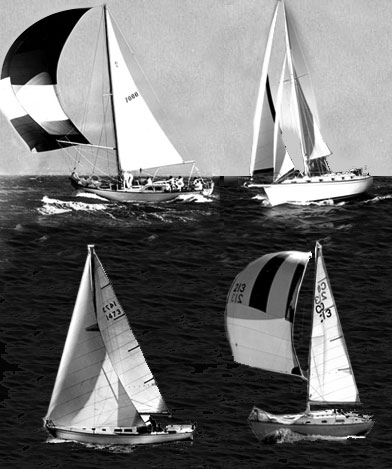
Sailors are certainly passionate about their boats, and if you doubt that bold statement, try posting an article dubbed “ 40 Best Sailboats ” and see what happens.
Barely had the list gone live, when one reader responded, “Where do I begin? So many glaring omissions!” Like scores of others, he listed a number of sailboats and brands that we were too stupid to think of, but unlike some, he did sign off on a somewhat upbeat note: “If it weren’t for the presence of the Bermuda 40 in Cruising World’s list, I wouldn’t even have bothered to vote.”
By vote, he means that he, like hundreds of other readers, took the time to click through to an accompanying page where we asked you to help us reshuffle our alphabetical listing of noteworthy production sailboats so that we could rank them instead by popularity. So we ask you to keep in mind that this list of the best sailboats was created by our readers.
The quest to building this list all began with such a simple question, one that’s probably been posed at one time or another in any bar where sailors meet to raise a glass or two: If you had to pick, what’re the best sailboats ever built?
In no time, a dozen or more from a variety of sailboat manufacturers were on the table and the debate was on. And so, having fun with it, we decided to put the same question to a handful of CW ‘s friends: writers and sailors and designers and builders whose opinions we value. Their favorites poured in and soon an inkling of a list began to take shape. To corral things a bit and avoid going all the way back to Joshua Slocum and his venerable Spray —Hell, to Noah and his infamous Ark —we decided to focus our concentration on production monohull sailboats, which literally opened up the sport to anyone who wanted to get out on the water. And since CW is on the verge or turning 40, we decided that would be a nice round number at which to draw the line and usher in our coming ruby anniversary.
If you enjoy scrolling through this list, which includes all types of sailboats, then perhaps you would also be interested in browsing our list of the Best Cruising Sailboats . Check it out and, of course, feel free to add your favorite boat, too. Here at Cruising World , we like nothing better than talking about boats, and it turns out, so do you.
– LEARN THE NAVIGATION RULES – Know the “Rules of the Road” that govern all boat traffic. Be courteous and never assume other boaters can see you. Safety Tip Provided by the U.S. Coast Guard
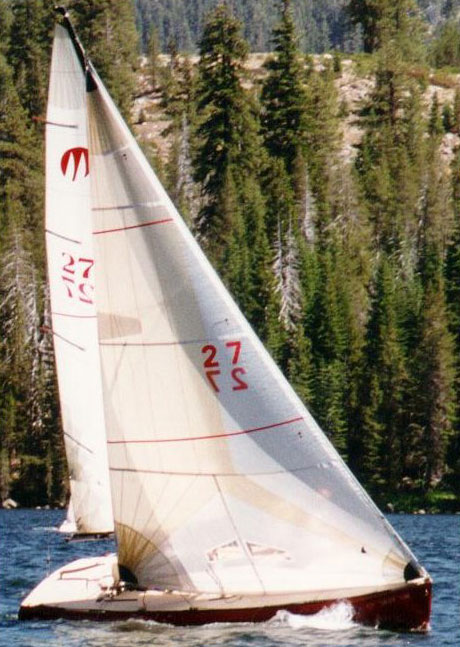
40. Moore 24
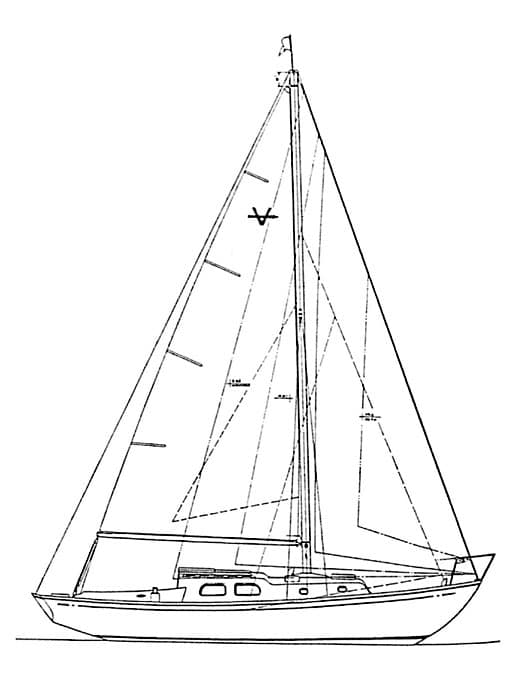
39. Pearson Vanguard
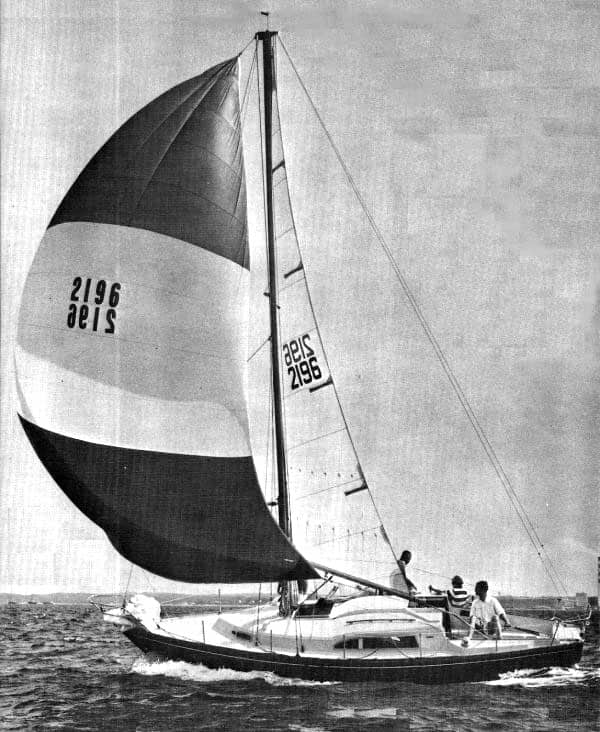
38. Dufour Arpege 30
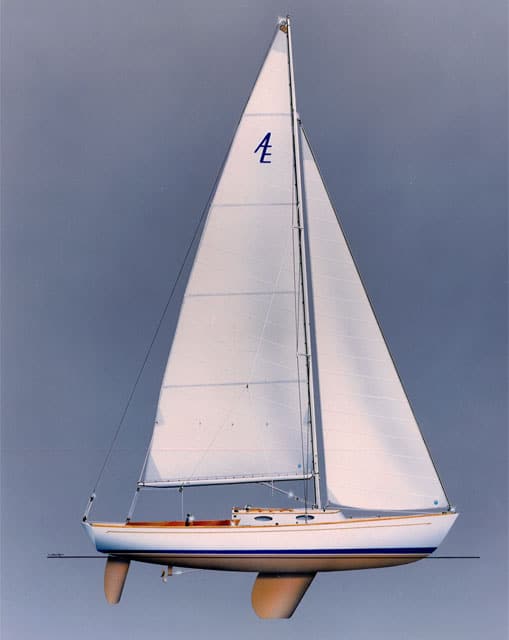
37. Alerion Express 28
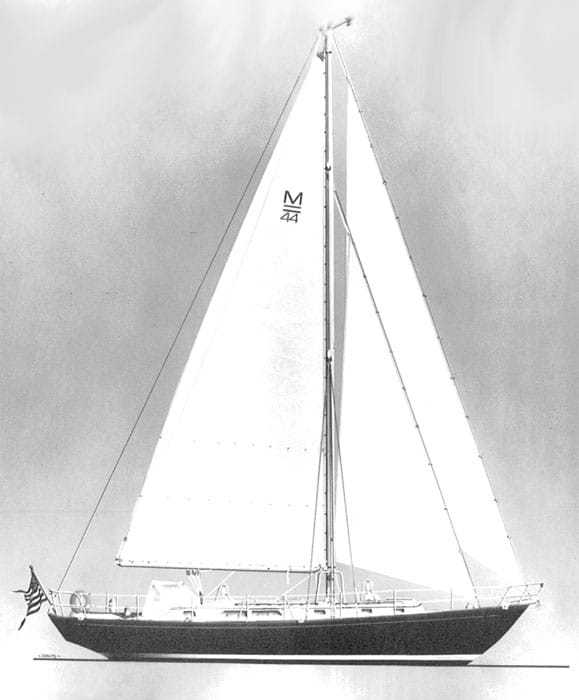
36. Mason 43/44
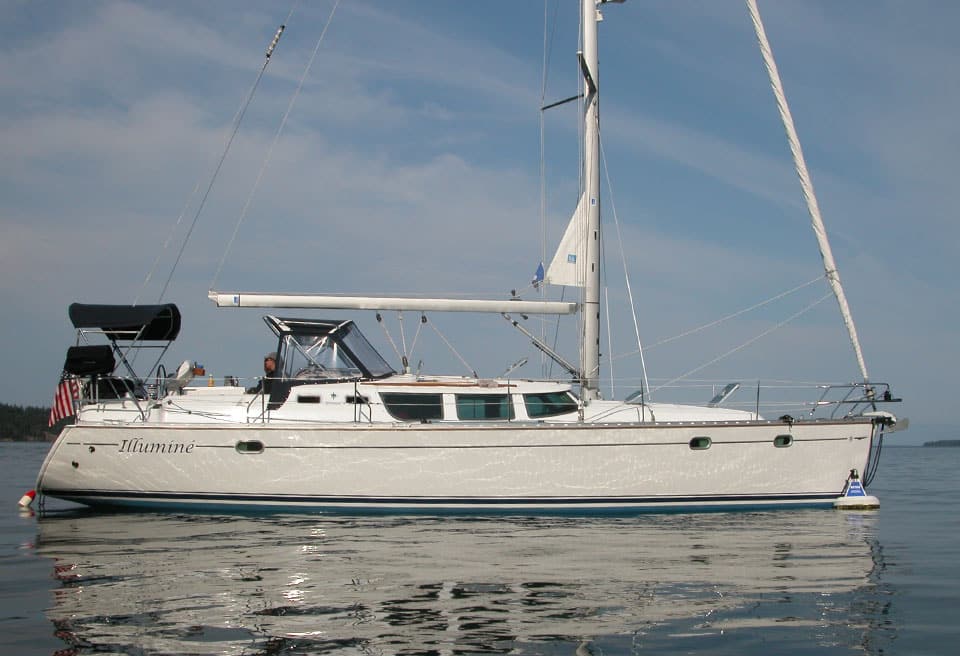
35. Jeanneau Sun Odyssey 43DS
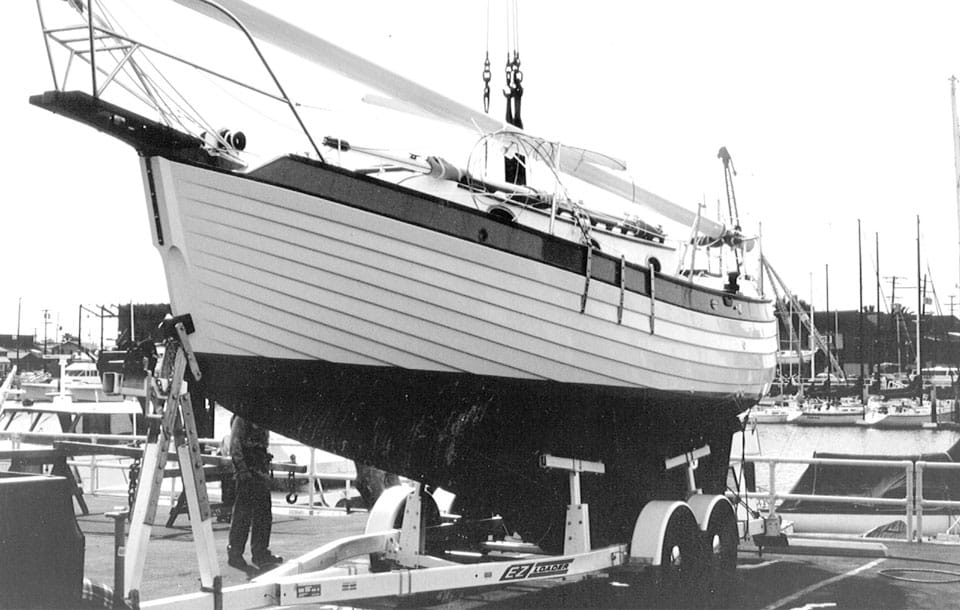
34. Nor’Sea 27
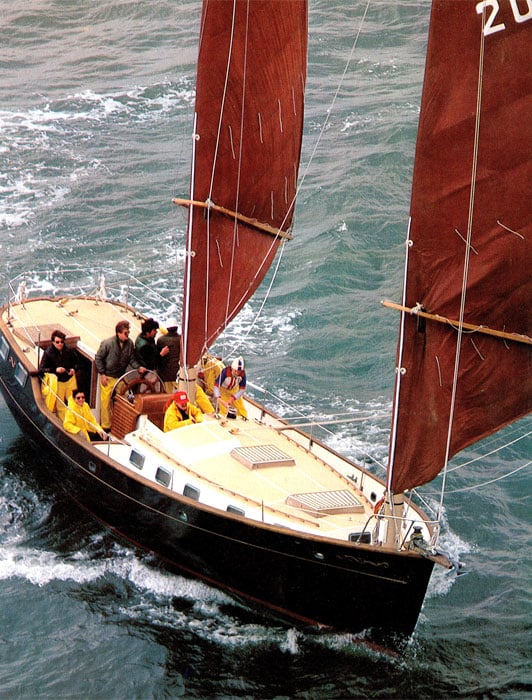
33. Freedom 40
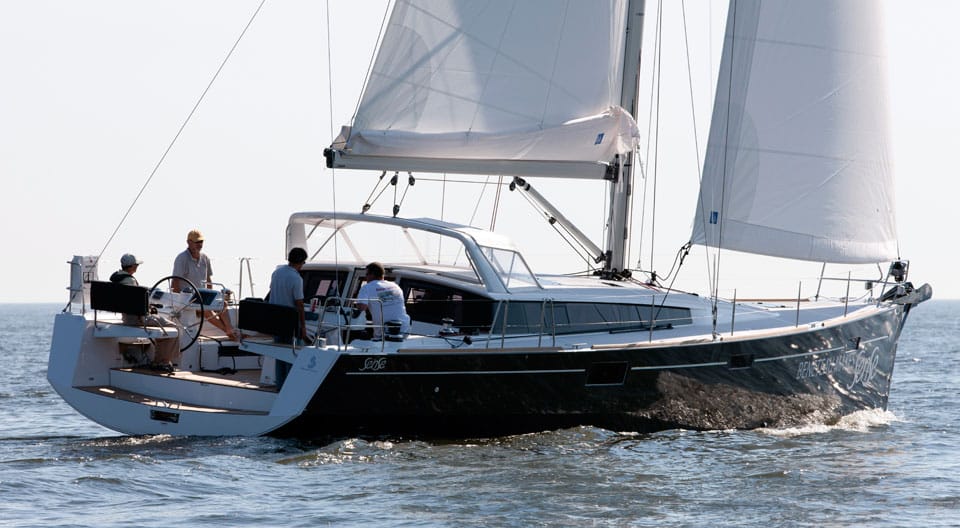
32. Beneteau Sense 50
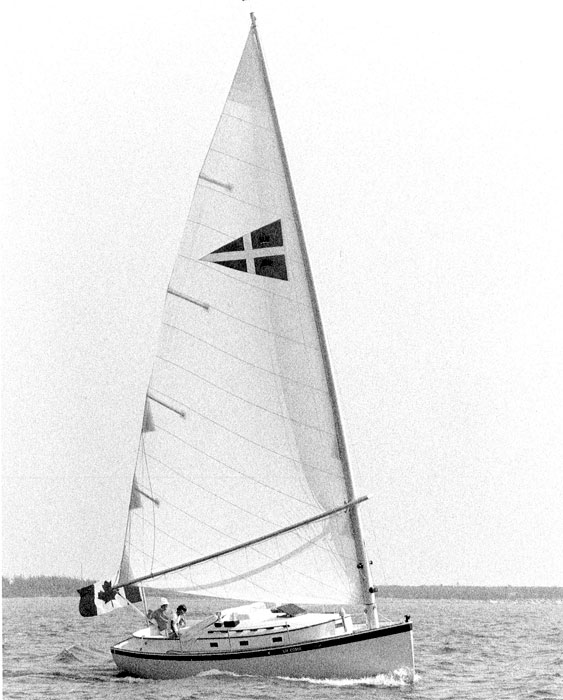
31. Nonsuch 30
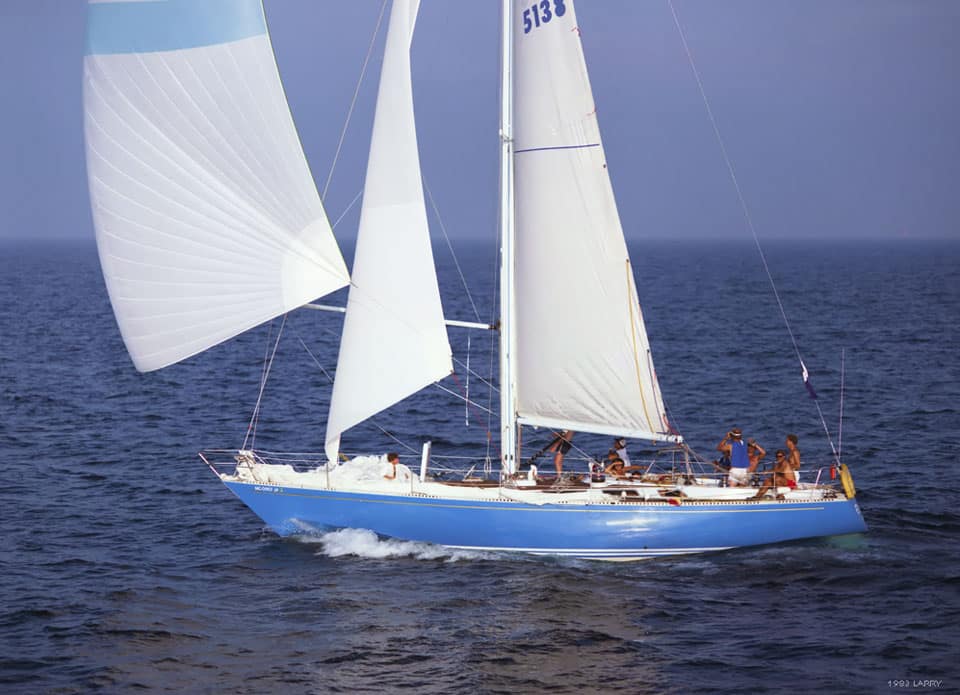
30. Swan 44
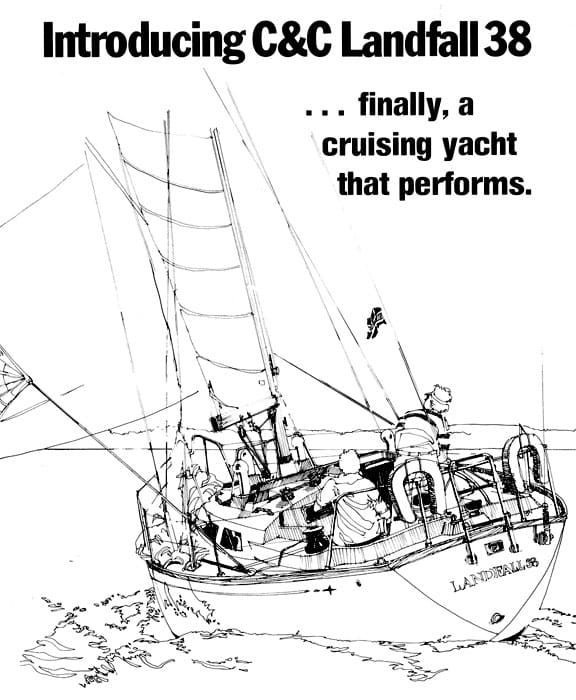
29. C&C Landfall 38
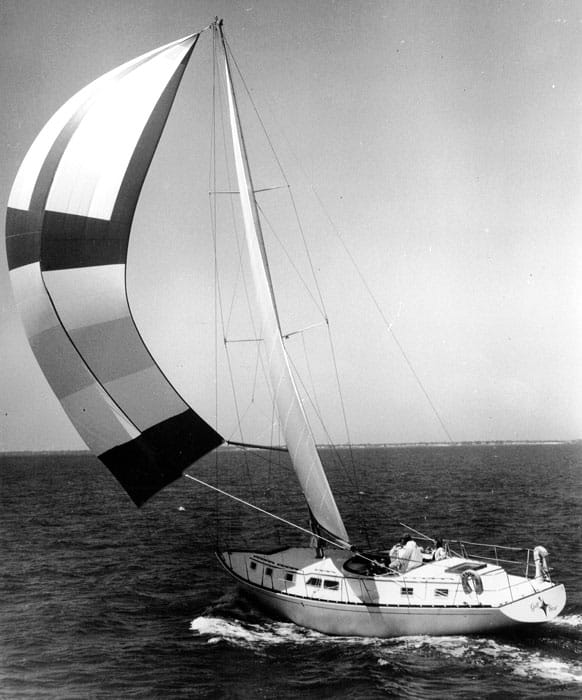
28. Gulfstar 50
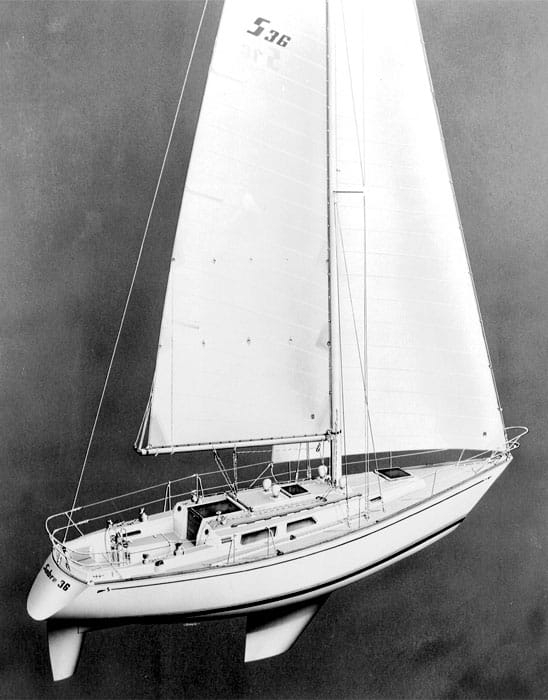
27. Sabre 36
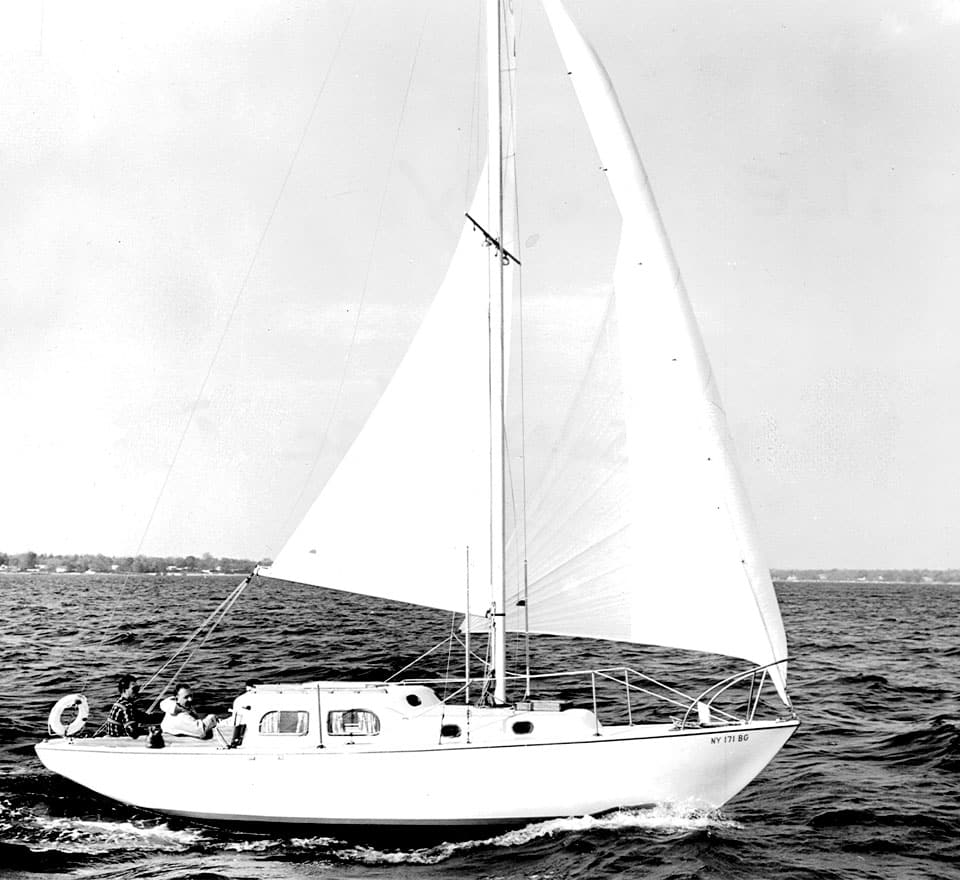
26. Pearson Triton
– CHECK THE FIT – Follow these guidelines to make sure your life jacket looks good, stays comfortable and works when you need it. Safety Tip Provided by the U.S. Coast Guard
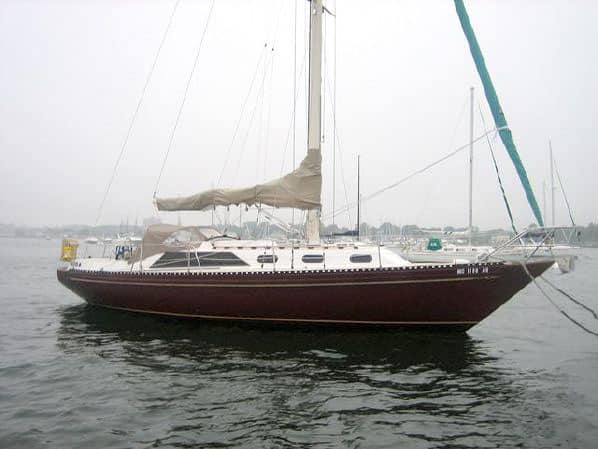
25. Islander 36
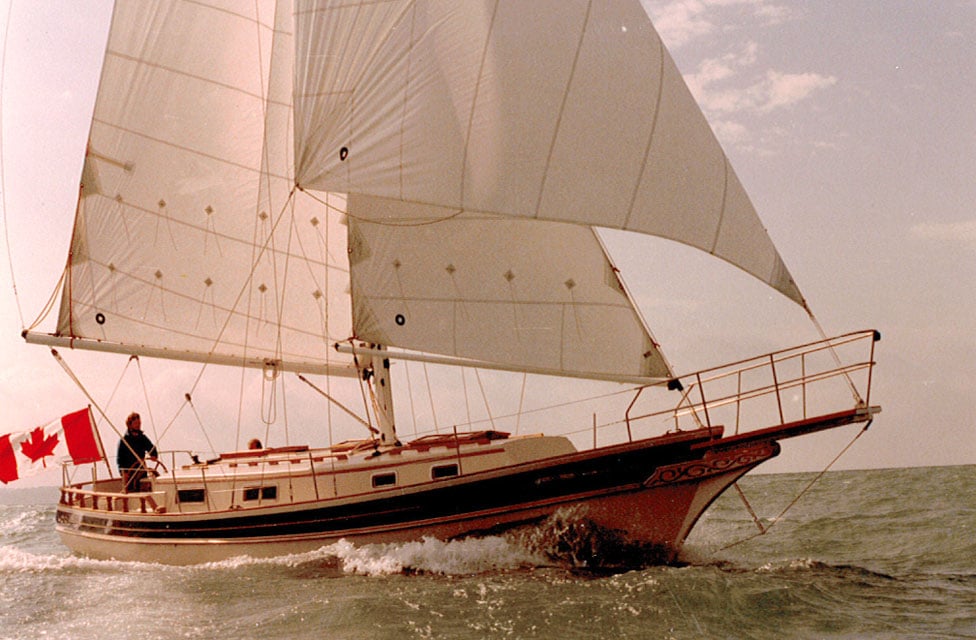
24. Gozzard 36
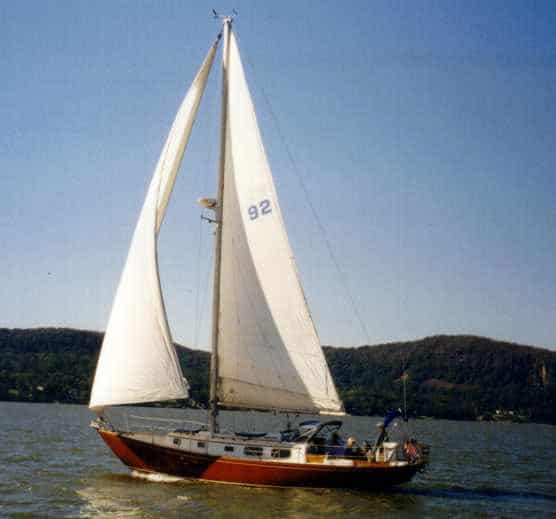
23. Bristol 40
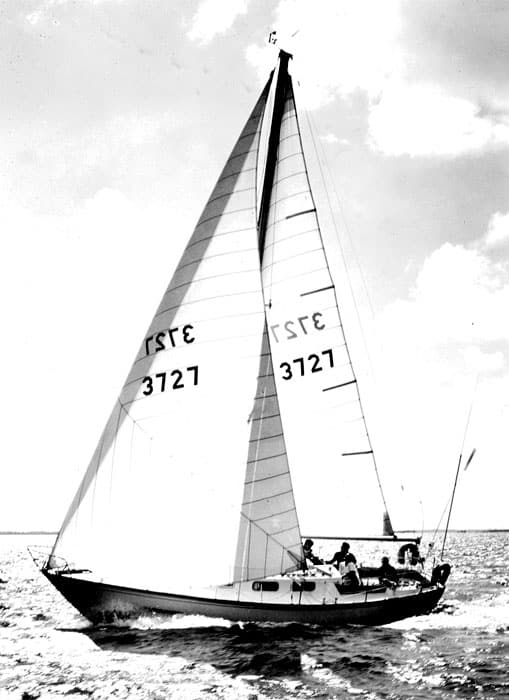
22. Tartan 34
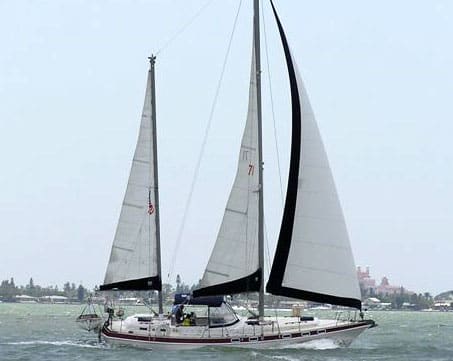
21. Morgan Out Island 41
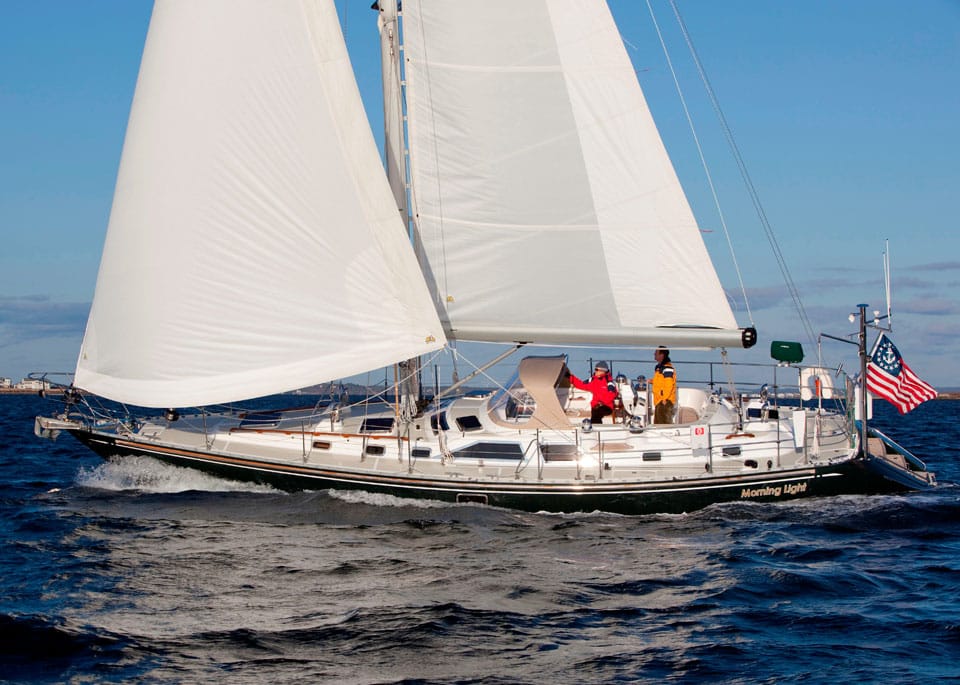
20. Hylas 49
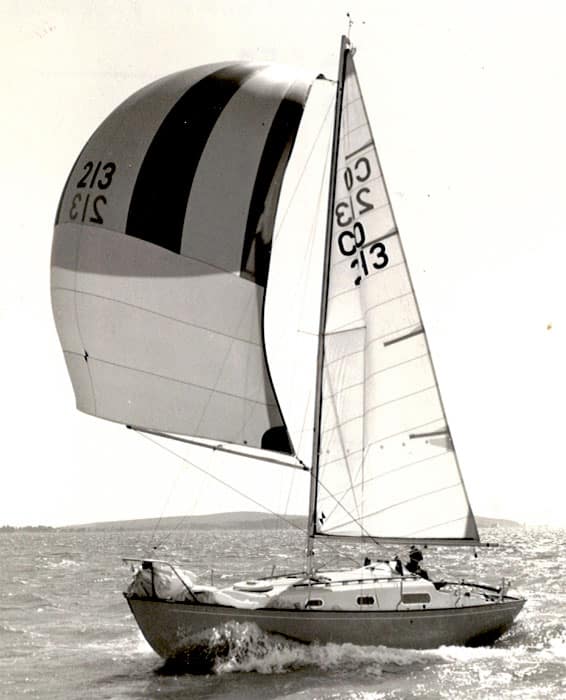
19. Contessa 26
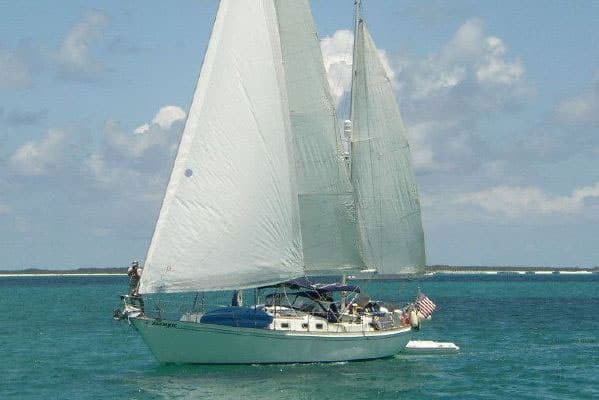
18. Whitby 42
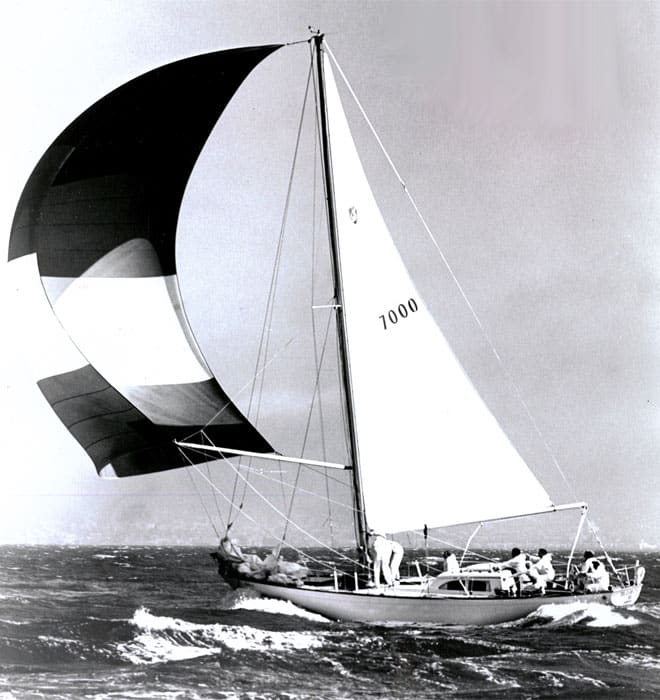
17. Columbia 50
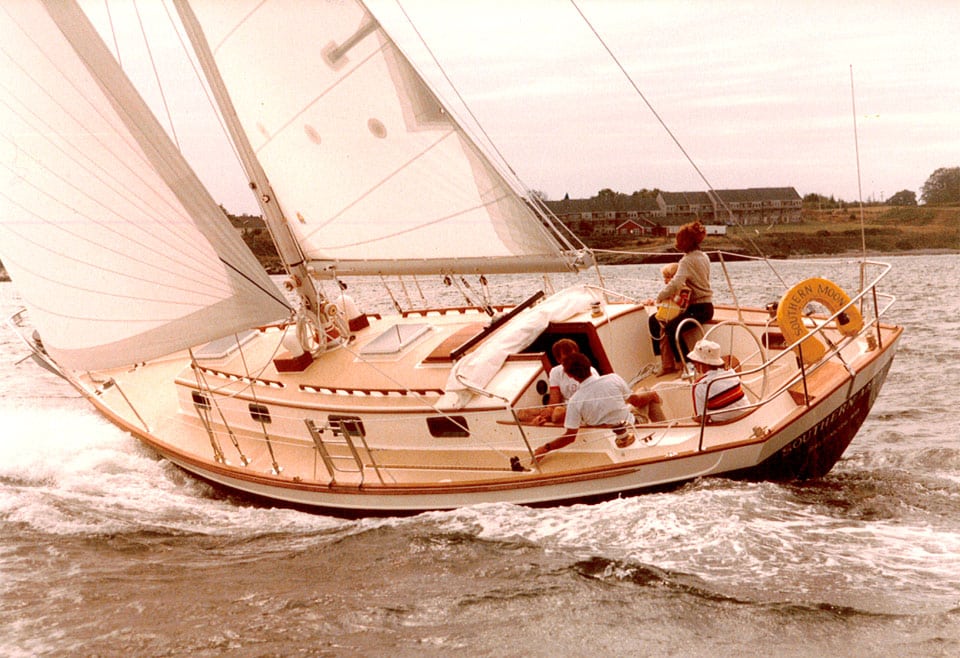
16. Morris 36
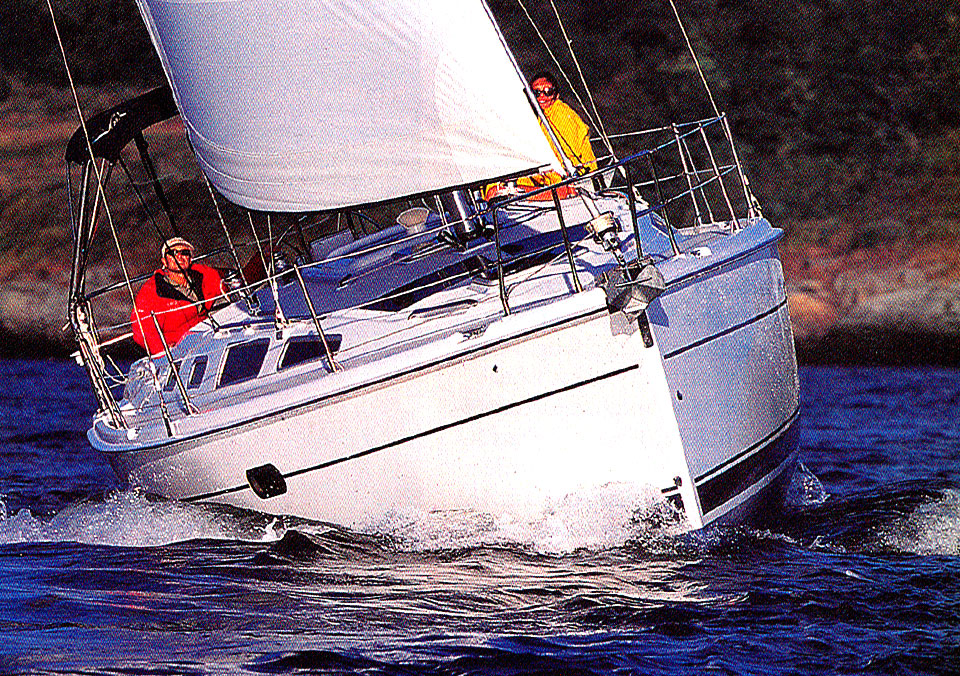
15. Hunter 356
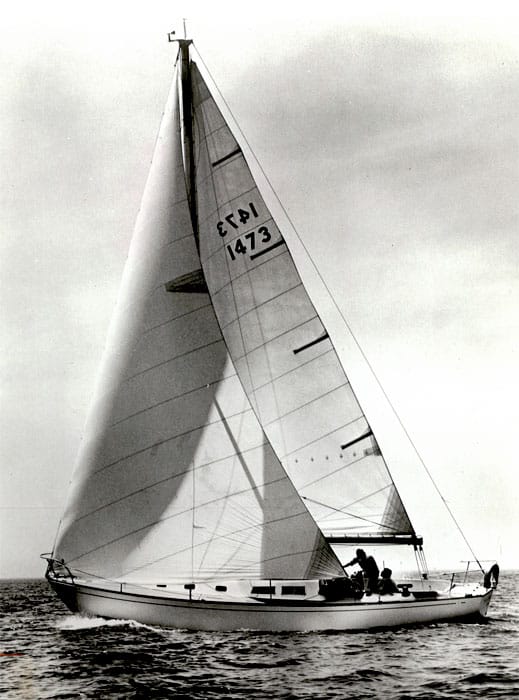
13. Beneteau 423
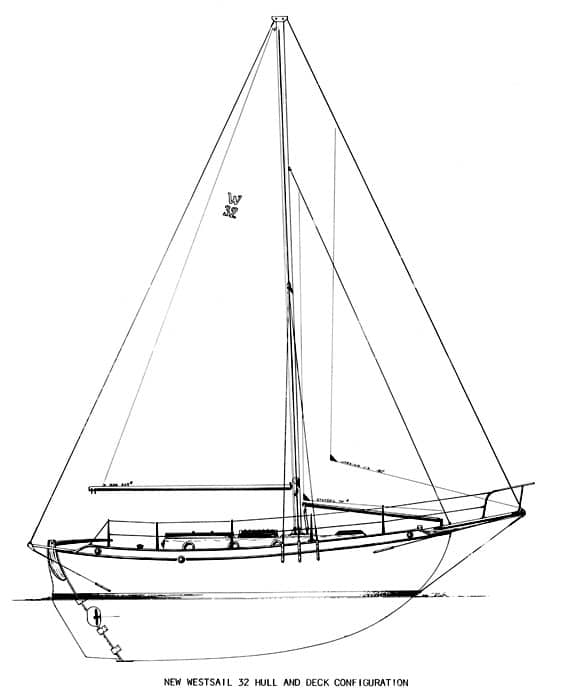
12. Westsail 32
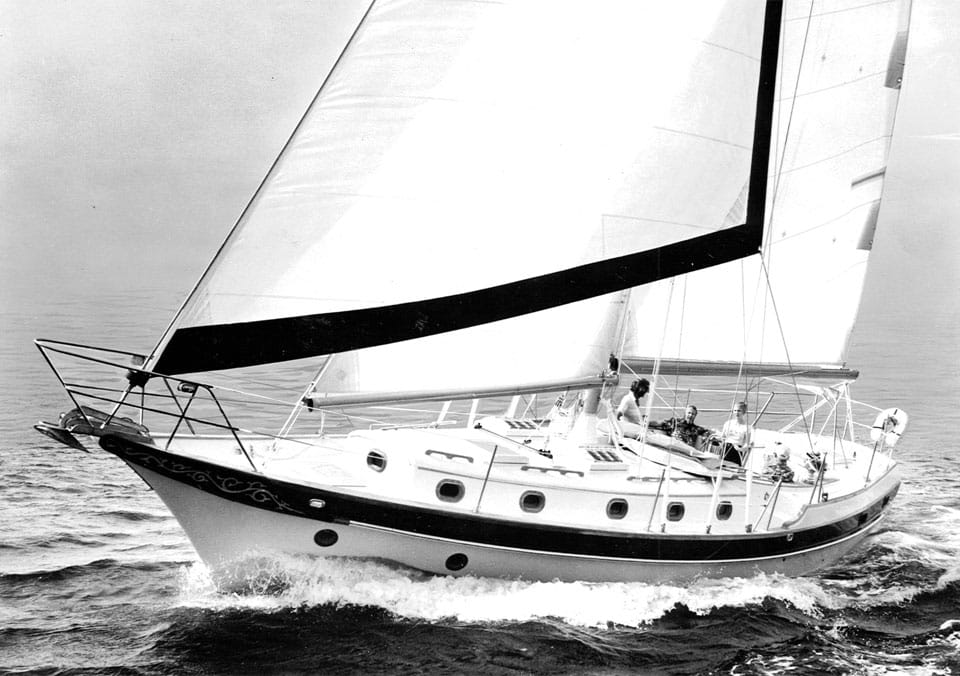
– CHECK THE WEATHER – The weather changes all the time. Always check the forecast and prepare for the worst case. Safety Tip Provided by the U.S. Coast Guard
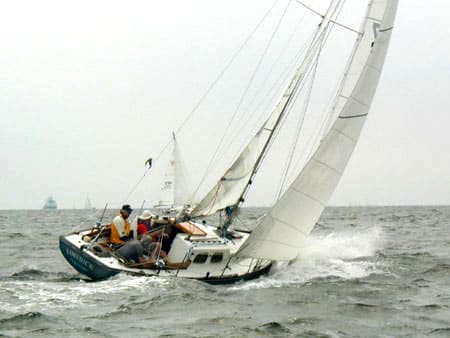
10. Alberg 30
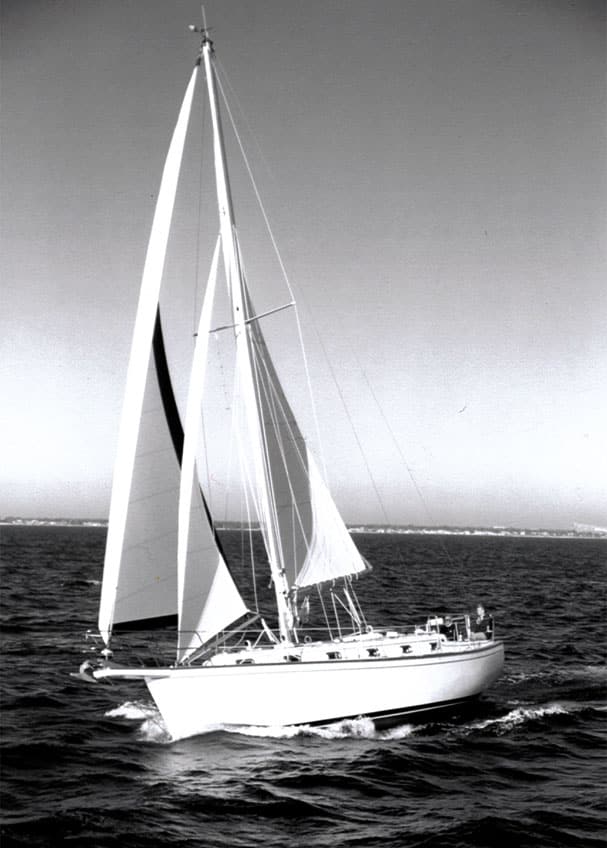
9. Island Packet 38
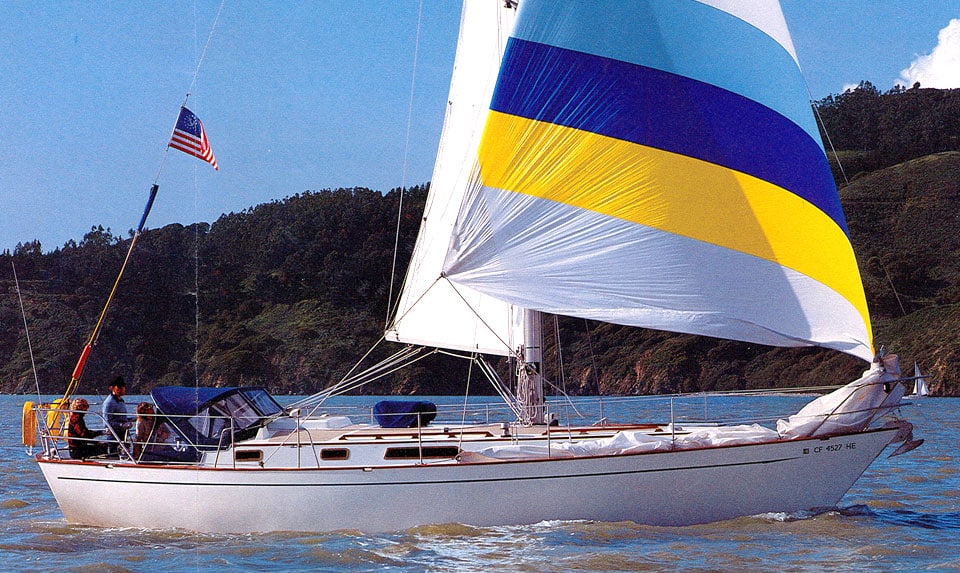
8. Passport 40
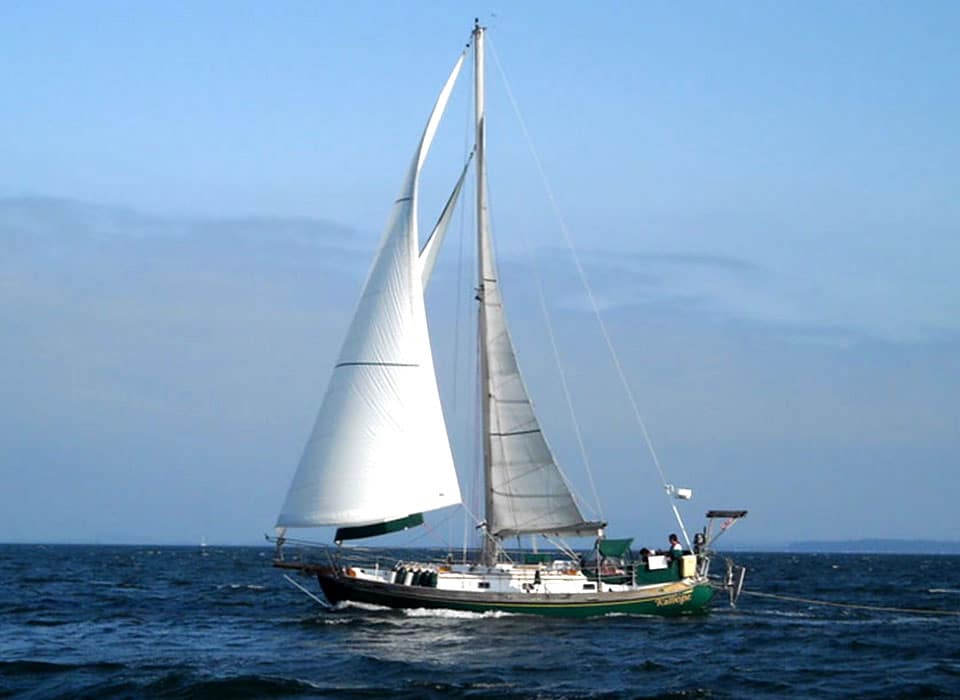
7. Tayana 37
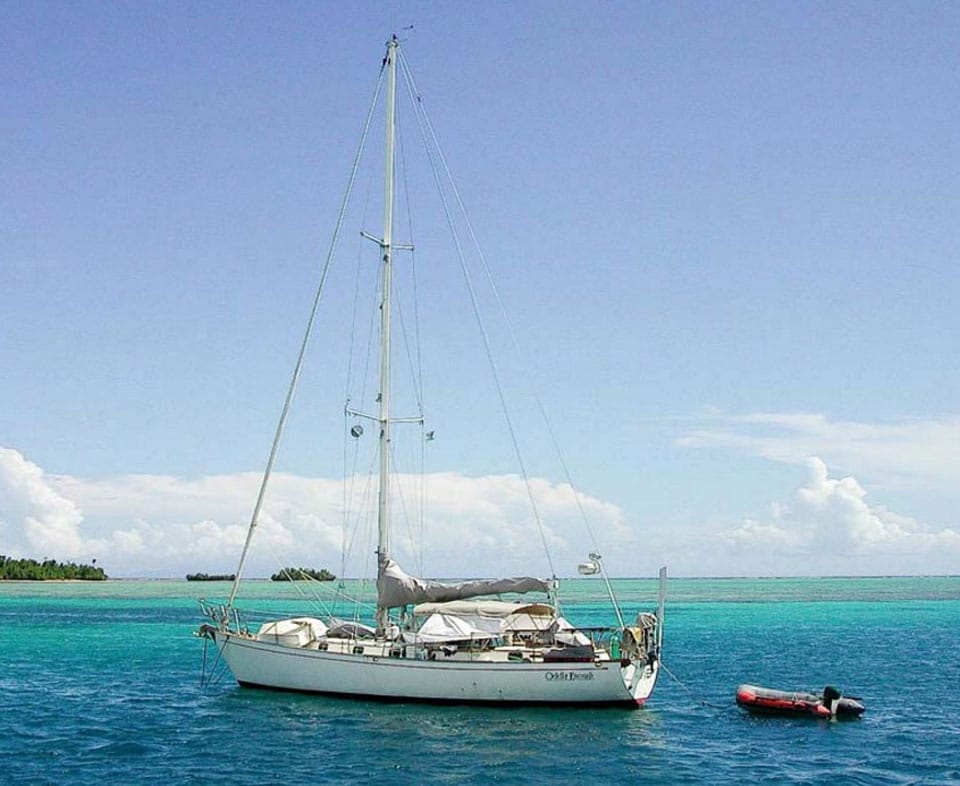
6. Peterson 44
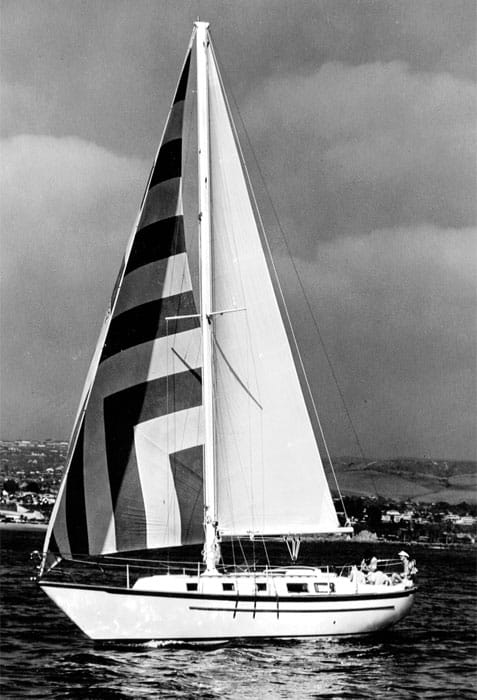
5. Pacific Seacraft 37
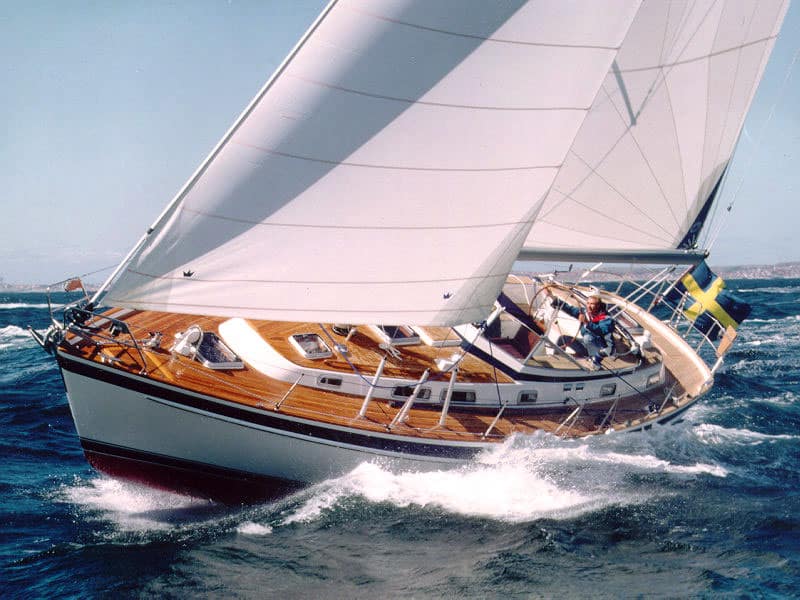
4. Hallberg-Rassy 42
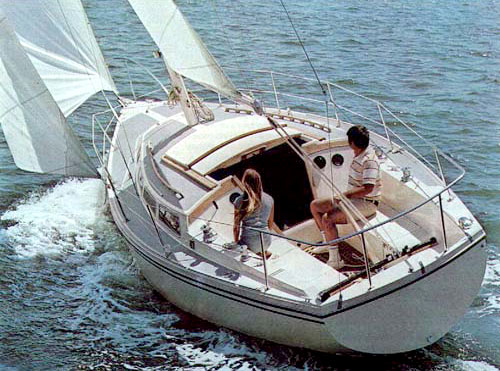
3. Catalina 30
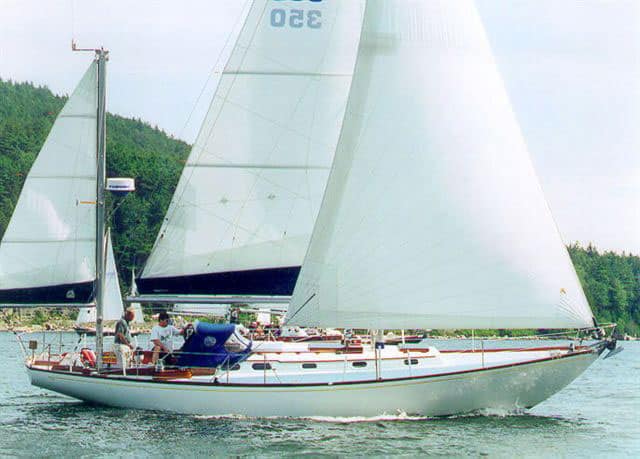
2. Hinckley Bermuda 40
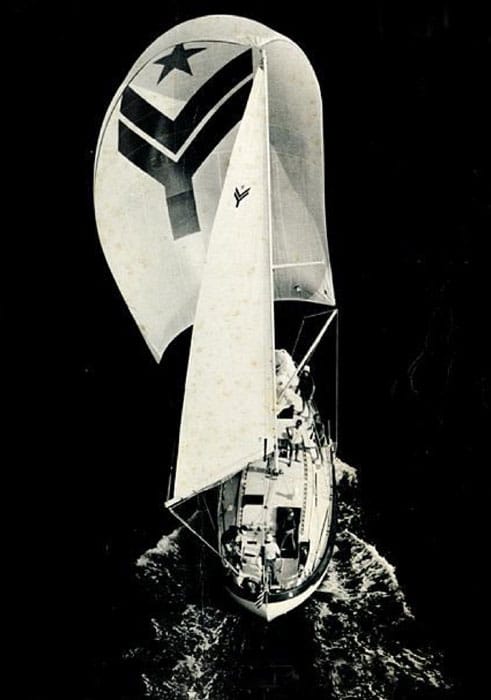
1. Valiant 40
- More: monohull , Sailboats
- More Sailboats

Sailboat Preview: Elan GT6 Explorer

For Sale: 1984 Camper & Nicholsons 58

Alubat Updates OVNI Models

For Sale: Little Harbor 63 Ketch

From Paradise to Medical Emergency: A Bahamas Nightmare Turns Lesson Learned

Free Medical Advice: The Unwarranted, Unprofessional Edition

Gatekeepers of the Waterway

Rigging Redo: Our Switch to Synthetic
- Digital Edition
- Customer Service
- Privacy Policy
- Terms of Use
- Email Newsletters
- Cruising World
- Sailing World
- Salt Water Sportsman
- Sport Fishing
- Wakeboarding
More From Forbes
One haute yacht, the spirit bartech f35 owns speed, style, and control.
- Share to Facebook
- Share to Twitter
- Share to Linkedin
The Spirit Yachts BARTech F35's stylish design dovetails classic lines with modern technology, ... [+] flying on foils while taking on the appearance of a golden era film star.
BAR Technologies and Spirit Yachts dovetailed talent and expertise to deliver a chic luxury launch in May of 2023, the Spirit BARTech F35 . With a gleaming mahogany skin and a nostalgic profile taking inspiration from the Rum Runners of the 1920s, the F35 is a distinctive, scene-stealing craft.
The first fully electric yacht to own a 100 nautical mile range, the F35 flies on foils while powering ahead at what is described as thrilling speed, courtesy of its electric motor and battery system. The yacht set a speed record for the circumnavigation around the Isle of Wight for electric vessels, slashing the existing best time from six hours to just one hour and 56 minutes.
The Spirit Yachts F35 is all about BAR Technologies' foiling design, offering a high level of speed, ... [+] control, and stability.
UK firm BAR Technologies , branched from Ben Ainslee Racing, employs advanced strategies and innovations to deliver efficient, sustainable solutions in answer to client requests. Using Artificial Intelligence, Computational Fluid Dynamics, Design Optimization, Finite Element Analysis, Performance Analysis, and expertise gained from America's Cup designs, BAR Technologies appears at the forefront of engineering for leisure craft as well as commercial vessels and work boats, delivering systems that are sustainable with an emphasis on exceptional results.
Ipswich, Suffolk, UK-based Spirit Yachts is known for precision woodworking and classic yacht design placing an emphasis on sustainable methods and materials. Universally recognized for a high quality aesthetic and functional purpose, Spirit Yachts builds custom wooden motor and sailing yachts. They are experts in creating everything from day sailors and performance racing yachts to blue water cruisers. And, as they point out on their website, occasionally the owner's brief requesting the design embraces all three.
Today’s NYT Mini Crossword Clues And Answers For Tuesday, August 27th
Wwe raw results: winners and grades on august 26, 2024, google chrome warning—21 days to update or delete your browser, a specific commission.
A chic instrument panel and innovative design with removable panels make the Spirit Yachts BARTech ... [+] F35 a versatile choice, going from a two person spider to a six person entertainer.
Already an owner of a Spirit 111 sailing yacht , the owner of the first F35 wrote a brief that requested a suitable launch to complement the existing yacht. Additionally, the owner requested that the launch be highly efficient, sustainable, and display a classic aesthetic. All squarely within Spirit Yachts' wheelhouse, so to speak, the design process began.
The successful completion resulted in a vessel inspired by sleek Rum Runners of decades past, fitted with BAR Technologies patented fully foiling design that lifts the boat entirely out of the water. Pairing nostalgic good looks with top-of-industry technology, the F35 offers an exclusive, sophisticated, comfortable ride.
Aft cowling panels lift off to reveal additional seating for three and a table, giving the Spirit ... [+] Yachts BARTech F35 a wider range of possibilities.
F35 By The Numbers
A luxury, 35-foot, fully electric foiling launch, the Spirit Yachts BARTech F35 is constructed of carbon skinned cedar planked mahogany veneer. Classing styling disguises the electric propulsion provided by the 24 V battery system, driving the F35 to a top speed of 30 knots, with a cruise speed of 22 knots and a 100 nautical mile range at 20 knots. A coachroof hatch is convenient for drop in battery access.
A "C" category inshore design, the F35 is stable in up to two meter significant wave heights, capable in wind speeds up to Force 6. The Aft foil, as well as the forward foils, are constructed in titanium with a composite trailing edge.
A cool box keeps drinks and snacks chilled. A water ski attachment point is provided by an ensign post fitting.
Flying on foils with at 30 knots, the Spirit Yachts BARTech F35 looks like a solid classic wooden ... [+] boat, but takes to tech for a surprising turn.
About The Partnership
Portsmouth UK firm BAR Technologies partnered with Spirit Yachts to deliver this luxury launch that satisfies the aesthetic while providing speed with a more sustainable footprint. Using its America's Cup design expertise, BAR Technologies was able to extend both speed and distance with this design, while maintaining the chic classic profile owned by Spirit Yachts.
The partnership of Spirit Yachts and BAR Technologies offers a blend of old and new in their F35 ... [+] foiling launch.
BAR Technologies CEO John Cooper notes, "The electric flyer will be the first of a series of boats we design to break new ground as we move into a greener generation of leisure yachts. The Spirit BARTech F35 is a boat of pure elegance that cannot help but attract interest."
Spirit Yachts' Karen Underwood adds, Öur collaboration with BAR Technologies is the epitome of the modern classic ethos on which Spirit Yachts was founded. Beautiful, clean, classic lines and sustainable timber construction married with forward-thinking technology from BAR with no compromise on comfort and efficiency."
Pointing toward a more sustainable yachting lifestyle never looked better.

- Editorial Standards
- Reprints & Permissions
Join The Conversation
One Community. Many Voices. Create a free account to share your thoughts.
Forbes Community Guidelines
Our community is about connecting people through open and thoughtful conversations. We want our readers to share their views and exchange ideas and facts in a safe space.
In order to do so, please follow the posting rules in our site's Terms of Service. We've summarized some of those key rules below. Simply put, keep it civil.
Your post will be rejected if we notice that it seems to contain:
- False or intentionally out-of-context or misleading information
- Insults, profanity, incoherent, obscene or inflammatory language or threats of any kind
- Attacks on the identity of other commenters or the article's author
- Content that otherwise violates our site's terms.
User accounts will be blocked if we notice or believe that users are engaged in:
- Continuous attempts to re-post comments that have been previously moderated/rejected
- Racist, sexist, homophobic or other discriminatory comments
- Attempts or tactics that put the site security at risk
- Actions that otherwise violate our site's terms.
So, how can you be a power user?
- Stay on topic and share your insights
- Feel free to be clear and thoughtful to get your point across
- ‘Like’ or ‘Dislike’ to show your point of view.
- Protect your community.
- Use the report tool to alert us when someone breaks the rules.
Thanks for reading our community guidelines. Please read the full list of posting rules found in our site's Terms of Service.

Tour Review: A Circumnavigation of Iceland with National Geographic Expeditions and Lindblad Expeditions
B ased on the weather alone, I was thrilled to go to Iceland with National Geographic Expeditions and Lindblad Expeditions . As someone who lives in Florida, and the temperatures in August were still reaching triple digits, the coolcation expedition cruise was a welcome relief from the blazing sun. But one look at the National Geographic Expeditions 10-day itinerary of the Circumnavigation of Iceland made it clear that the cooler weather wasn’t the only draw, and that I was in for the trip of a lifetime.
As I packed sweaters, jeans, waterproof pants, and layers of clothes, I wondered what the land of fire and ice would really be like. As I soon learned, the small country of Iceland is a stellar place for an expedition cruise that helped me see more of Mother Nature’s incredible wonders, push myself past my comfort zone, and experience so much Iceland has to offer.
I sailed on the National Geographic Explorer, an 81-cabin, 148-guest ship, which was comfortable and quickly became home in more ways than one. Besides the larger-than-anticipated cabins, the lounges and common areas were well-appointed, the crew was friendly, and my fellow passengers quickly became fast friends.
The seasonal summer sailing focuses on the juxtapositions all around Iceland, from towering mountains overlooking water-filled fjords to dramatic volcanoes and glaciers. But these natural wonders are just a small part of the overall experience. National Geographic experts, naturalists, photographers, and more are all on hand to lead excursions, give presentations, and answer just about any questions guests may have.
QUESTIONS ANSWERED: Ask a tour guide: Surprises for first-time tour travelers
Onboard safety is also a huge part of any National Geographic Expeditions trip. Because of that, I pushed myself outside of my comfort zone multiple times over 10 days. I hiked to the Arctic Circle, participated in an optional ship-wide polar plunge into 44-degree water, and cruised around an iceberg-filled bay on a duck boat-style vessel.
This expedition cruise was a fun way to meet new people, all of whom care about nature and have a sense of adventure, and explore a new-to-me destination.
Things to know about a circumnavigation of Iceland
- The onboard crew is friendly and wants to ensure you have the best trip possible. It includes a mix of hospitality pros, guides, naturalists, photographers, and more. All of the onboard experts were eager to answer questions and explain the natural phenomenon of Iceland.
- The photos of National Geographic Explorer on the National Geographic Expeditions website are outdated. The ship got a facelift bringing new life into the common areas, especially the main lounge where bright colors are used, plus panoramic windows show off the outside world. The cabins are spacious with plenty of storage, and the beds are comfortable. I also loved the larger-than-expected bathrooms, which feature a single sink, a toilet, some shelving, and a stand-up shower that’s larger than most mega-cruise ship showers. In 2025 and 2026, this cruise takes place on National Geographic Endurance , though I have not personally sailed on this ship, National Geographic says it’s purpose-built for wave slicing and ice breaking in polar regions.
- Wildlife spotting happens nearly every day. From the comfort of the lounge, we spotted many seabirds. On land, we say puffins, sheep, Icelandic horses, reindeer, and more. During the evening recap, the group saw a breaching whale just a few hundred feet from the ship.
- The onboard food is great, though breakfast does get a little repetitive. More on that below.
- The crew is very mindful of guest safety. This was especially true during zodiac transfers, wet and dry landings, and hikes. When seas were rough, the crew also put ropes up around the common areas for extra handholds. As our expedition leader, Leah, told us over the intercom during the rough waves, “Keep one hand for yourself, and one hand for the ship.”
- Each guest is provided with a bright blue parka jacket that you get to keep at the end of the cruise. Rooms also have life jackets, which you must take with you for zodiac landings.
Circumnavigation of Iceland tour highlights
- Hiking to and crossing the Arctic Circle
- Bird watching for puffins and Arctic terns
- Photography and naturalist walks through stunning landscapes
- A true polar plunge
- Making friends with well-traveled guests
- Waterfalls and glacier tours
Important details about a circumnavigation of Iceland
This ten-day expedition cruise starts and ends in the Icelandic capital of Reykjavik, and sails around the entire circumference of the country. It includes stops at Húsavík, which is the gateway to exploring many waterfalls; Grimsey, the northernmost inhabited territory in Iceland and the arrival point for the Arctic Circle; and Djúpivogur, home to Europe’s largest glacier.
There’s at least one big activity each day, but most days offer two. Most ports of call are reached by small inflatable boats called zodiacs and landings can be dry (onto land) or wet (into shallow water). The itinerary can shift depending on the weather, so as a passenger you’ll need to be flexible with what you plan to do each day. On my sailing, we couldn’t anchor at Vigur Island due to bad weather, so the owner of the island came aboard our ship to share her harrowing tale of crossing Antarctica alone.
DISNEY GROUP TOURS: What to know about Adventures by Disney
Due to rough seas we also never ported at Heimaey in the Westman Islands. Instead, we booked it back to Reykjavik where a fissure volcano had just started erupting the day prior. Our cruise team made last-minute bus reservations for everyone onboard to see the volcano. In the end, the extra time in Reykjavik meant seeing the “fire” part of the land of fire and ice, a perfect complement to the glaciers we saw earlier in the sailing.
Each day was exciting waking up in a new place, and the onboard experts shared their knowledge with guests who wanted to soak up as much information as possible.
Route Notes
There is only one route for this expedition. You will start and end in Reykjavik and go clockwise around the country. Flights should land at the Keflavik Airport, about 45 minutes from downtown Reykjavik.
This is a very active cruise, with options to hike nearly every day. Other activities include kayaking, walking, city exploration, and nature sightings. There’s also a once-a-cruise polar plunge, though the date is always subject to weather and sea conditions. Guests do need to be able to get into and out of a zodiac on most days, and waters can be unpredictable. If you don’t want to get off the ship, you certainly don’t have to, but most of the fun is had shoreside.
Onboard, there are daily talks from the National Geographic experts and nightly happy hours where guests and staff come together to talk about the day and see what’s ahead for the following day.
Accessibility
My cruise included guests ranging in age from kids to older adults, all with different mobility levels. Many zodiac landings required guests to get into and out of zodiacs with wet and dry landings onto rocky beaches or docks. The hikes ranged from moderate one or two-mile walks over gravel paths to more rugged five-mile or longer expeditions across mountain tops and river waters. While National Geographic Expeditions ranks this cruise’s activity level as light or moderate, I would say it’s really moderate to strenuous.
TRAVEL IN STYLE: What to know about Smithsonian Journeys
There were only two days out of 10 when the ship docked at a pier like a large ocean liner, which made it more accessible for people with mobility issues to get off and explore the destination. This cruise may not be the best fit if you think you will have trouble getting into and out of a zodiac or hiking over uneven terrain.
Since this is a cruise, you can always choose to stay onboard if you don’t want to traverse the waters in a zodiac, but still see Iceland outside of the windows in the lounge, dining room, bistro, or your cabin. There are incredible views from the observation deck, which is flanked on one side by a library filled with books about the Arctic.
The ship’s crew and onboard specialists were always willing to help guests who needed it. Whether it was an older guest who needed extra assistance going up or down stairs when the elevator was occupied, or if someone needed extra time getting off the ship down the gangplank on pier landings, someone was always on hand.
In my opinion, this sailing is better for families with older kids who can participate in the more rigorous activities. Since the cruise happens in summer, kids are already out of school, so there’s no need to worry about missed class time. There were a handful of kids on my sailing and they were able to take part in the National Geographic Global Explorers program, where kids get a handbook to fill out with an onboard naturalist, along with dedicated experiences just for them. National Geographic Explorer and Endurance have rooms that can sleep three people.
The onboard dining options are great but can be limited. Breakfast takes place in the bistro and dining room, which are adjoining spaces. The morning meal is a buffet with the same dishes and one rotational option each day. Lunch is a blend of buffet and a la carte options, with the buffet featuring salads and build-your-own sandwiches, and the a la carte menu changing themes each afternoon. Lunch is served in the bistro, dining room, and observation lounge.
Dinner is served in the bistro, dining room, and chart room, and is fully a la carte. The menu changes every evening, though some staple dishes like Caesar salads, steaks cooked to order, and grilled chicken can be ordered every day. The vibe is super casual, and no one dresses up. It’s open seating for each meal, but after a few days, everyone on my sailing settled into a favorite spot and tended to sit with the same group.
One thing I found most interesting about the expedition cruise is that National Geographic and Lindblad Expeditions attempts to source as much of its food within 250 miles of the ship’s location. This means that dishes can be regional, and the food is as fresh and sustainable as possible . Serving sizes can be small by American standards, but you can always ask for another plate. After the fresh bread basket, a salad or soup, an entree, and a small dessert, I was comfortably full each night.
In the lounge, there is a bar for drinks, which are included in the price of the cruise. The bistro also features a coffee and cocktail bar, plus grab-and-go fruits. Each afternoon the bistro hosted tea time, which included an array of tea sandwiches and cookies. In the chart room, an espresso machine can whip up fresh coffee drinks, and cookies are always available.
Amenities
National Geographic Explorer has a fitness room and a small spa with a sauna. The onboard masseuse gives massages on request (not included in the cruise fare). There are early morning stretches in the lounge hosted by the wellness coordinator.
Each stateroom has a surprisingly large space for storage, and bathrooms are equipped with shower-mounted shampoo, conditioner, and soap. Plus there was a small branded bag of lip balm, a loofah mat, and lotion.
One of my favorite amenities was the OM Photo Locker , where I could check out cameras, lenses, and more photography equipment to use throughout the cruise. I was shocked that this was an included amenity when access to this equipment would usually cost a small fortune to buy on my own. I kept the same camera and lens throughout my cruise and got some incredible photos of Iceland and the wildlife that calls the country home.
RIVER CRUISING: Best river cruises through Europe
There is also an onboard doctor and nurse if the need arises. After the polar plunge, I realized my foot was bleeding profusely from my toenail getting caught and ripped off by the zodiac after a sudden wave hit and my toe caught on the textured sitting area. The doctor was able to help me clean my newly naked toe and checked in on me daily to change the dressings.
Circumnavigation of Iceland: best for/worst for
The expedition cruise is ideal for active travelers who want to see remote destinations, have a particular interest in birding, or want to soak up the knowledge of expert guides. You will need a moderate level of fitness to truly enjoy everything that the cruise has to offer. Getting into and out of the zodiacs can be challenging for those with balance issues (though the safety-minded crew is always there to assist), and the hiking excursions can be long distances over varied terrain.
This tour can be hard for people with mobility issues that impact balance or the ability to stand or walk for extended periods. Families with very young children may also want to look into alternative Iceland tours, since this one is very active and little kids may find some activities too hard or boring. National Geographic Expeditions offers land-based Iceland tours for those who don’t want to travel by ship, too.
A note about seasickness: I cruise world at least 10 times a year and usually take motion sickness medicine like Dramamine to help with any seasickness that may occur. I took the medicine daily, but in the final few days of the sailing, the seas got very rough. One of my fellow passengers stated that it felt like their voyage across the Drake Passage to Antarctica late last year. On the final full day of the sailing, I sheltered in my room and closed the blackout blinds so I couldn’t see the ocean and still got very sick. Once the ship got into Reykjavik’s harbor I felt better. The waters around Iceland can be very unpredictable, so if you are prone to seasickness take precautions and listen to your body for when you need to rest.
More from TourScoop:
- Tour Review: Lindblad Expeditions’ Baja California: Among the Great Whales
- Tour Review: National Geographic Expeditions Holland and Belgium in Springtime by River Cruise
- Tour Review: National Geographic Expeditions’ Costa Rica Wildlife and Conservation Tour Walks on the Wild Side
The post Tour Review: A Circumnavigation of Iceland with National Geographic Expeditions and Lindblad Expeditions appeared first on Tour Scoop .


IMAGES
COMMENTS
Circumnavigation means to successfully navigate around any sort of landmasses such as an island or continent. What are the best sailboats for circumnavigation?
Route planning is among the most crucial bits of preparation, especially when it comes to circumnavigation. This article will give you seven of the most commonly used routes for sailing around the world. Some routes have been sailed many times by many people, others are obscure or even dangerous.
Plotting world circumnavigation routes is a lot easier than it sounds. There are cruising boats LITERALLY all over the world. There are boats in the Northwest passage (up and over Canada), in the Antarctic, and everywhere in between. There are a few key things to take into consideration, but 95%* of circumnavigation routes follow the same general course.
Circumnavigation is an undeniably enjoyable experience made even more fun with the right sailboats. Read on to find the best sailboats for circumnavigation!
I saved up for a few years to buy a Westsail 32, a boat with a proven track record of seaworthiness and one that was within my means to adapt to a challenging solo circumnavigation (see Boat Modifications below). I also did a few solo trips out of Florida and the BVI, and took her north to Maine by myself in early 2017.
Now 81-year-old Australian Bill Hatfield is winding down yet another epic circumnavigation—westabout from Queensland, Australia, solo, nonstop and unassisted, against the prevailing winds and currents. At press time, sailing his Northshore 38, L'Eau Commotion, Hatfield was expected to make landfall at Southport, Queensland in mid-February.
Embarking on a circumnavigation voyage is a dream shared by many sailors and adventurers. The idea of circumnavigating the globe, crossing vast oceans, and exploring diverse cultures is both thrilling and awe-inspiring. However, to turn this dream into a reality, choosing the right boat is of utmost importance.
CIRCUMNAVIGATIONS. A Nordhavn 40 holds the world record for the fastest circumnavigation by a production power boat of any size. Salvation II is the first production power boat ever to circumnavigate the globe. Ghanim al-Othman, on board Othmani was the first Arab to circumnavigate. Othmani completed the circumnavigation with paravanes only.
Sailing Around The World - Planning For Global Circumnavigation. There's something about sailing around the world that captures the imagination and inspires. For some, it's the reason for learning to sail in the first place. Others only start to think about global circumnavigation as their skills and experience grow.
Image courtesy of Ainhoa Sanchez/Volvo Ocean Race. Yacht owners and racers who have done it already offer their advice to help you get the most out of your epic world circumnavigation... It's all relative: Dee Caffari, record-breaking circumnavigator. "You go through a storm and it's bad, but the next storm is a comparison to the last one ...
The Basics of Sailing Routes Around the World First, some lingo. Sailors refer to a sail around the world route as a "circumnavigation." Taking a boat around the world requires some gumption. So why do it at all? For some, it is the goal of having done it. For others, it's a fun way to combine their passions of sailing and travel. Some folks compete in races to see who can do it fastest ...
Circumnavigation is a complete navigation around an island, continent, a planet or, in modern days, astronomical body like Earth or the Moon. In this blog post we will focus on sailing around the world. And not the astronomical kind, but the 'simple' water-travelling kind. The reason is because that kind of circumnavigation includes sailing.
Solo bluewater sailboats are designed to be sailed by a single person, making them ideal for solo circumnavigation or long-distance cruising. You can get the Contessa 32 and Westsail 32 for as little as $30,000.
Have you ever wondered what brands and models are the most popular bluewater cruising boats? So have we, so we plundered the archives of the World Cruising Club to see which boats have featured most prominently in the last five years of the rallies that the WCC organizes—the Atlantic Rally for Cruisers (ARC) from the Canary Islands to St Lucia; the Caribbean 1500 from Portsmouth, Virginia to ...
In March 2020 we finished a world circumnavigation on our sailboat. Read all about the facts & highlights from 4+ years sailing the world!
To define the best boats for sailing around the world, owners detail what worked and what didn't.
Grenada was a homecoming celebration for the World ARC fleet. While St Lucia marked the end of the 2018-19 rally, Grenada signalled the fleet's return to the Caribbean. A full circumnavigation ...
Wind gen, solar, self steering, life rafts, & standard cruising equipment etc. are all fine. This is a list of non "blue water" production boats that have done it. 3- Submissions shall include a link to a blog discussing the circumnavigation or the boats name, make and model and the route they chose.
How to prepare a sailboat for a singlehanded circumnavigation. Going solo offshore with a sailboat well prepared.
As the only catamaran on our list, the Prout Snowgoose 37 is a proven boat for circumnavigation on the bluewater trail. A standout feature of the early Snowgoose models is its narrow beam, which allows them to navigate canals easily. These boats are popular in Europe and are common on the journey between Spain and France on the Mediterranian.
A panel of experienced owners - Sietse Koopmans ( Zeepard ), Tom Perkins ( Andromeda La Dea, Atlantide, Maltese Falcon ), Mike and Judy Ryan ( Tenaz) and the owners of Twizzle - have each completed a circumnavigation and here they share their 15 lessons in circumnavigation.
Small sailboats are the ticket to big dreams on a small budget. Here are our five favorite small blue water sailboats for sailing around the world.
Looking for a used sailboat? Start with this list for the best sailboats that hold value. All summer readers cast votes for their favorites on CW's 40 greatest production monohulls of all time list, now you can see how the fleet stacks up.
The yacht set a speed record for the circumnavigation around the Isle of Wight for electric vessels, slashing the existing best time from six hours to just one hour and 56 minutes.
Important details about a circumnavigation of Iceland Itinerary. This ten-day expedition cruise starts and ends in the Icelandic capital of Reykjavik, and sails around the entire circumference of ...